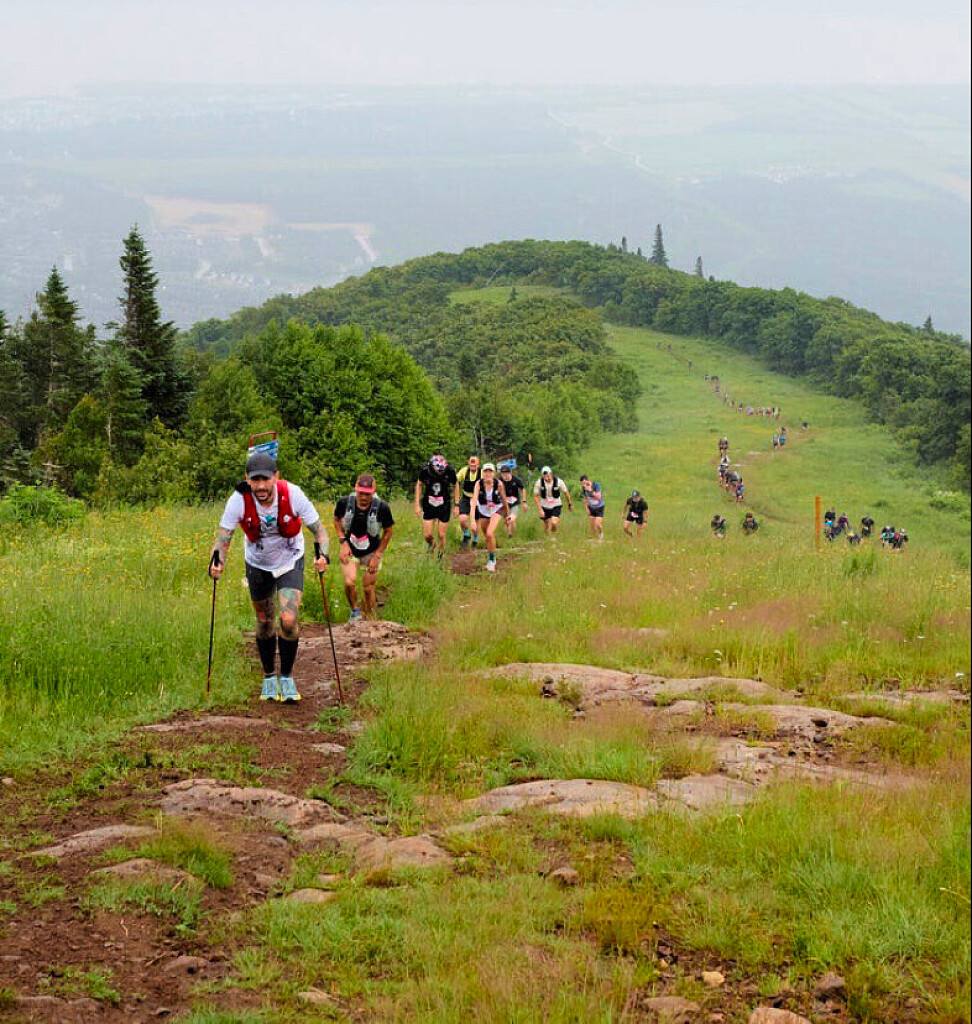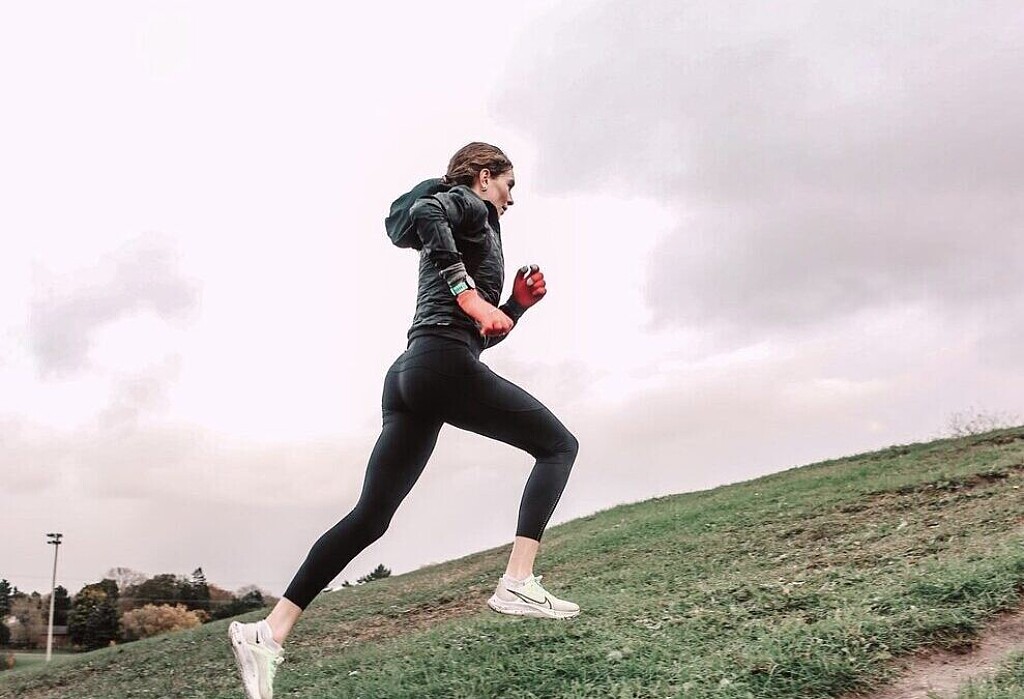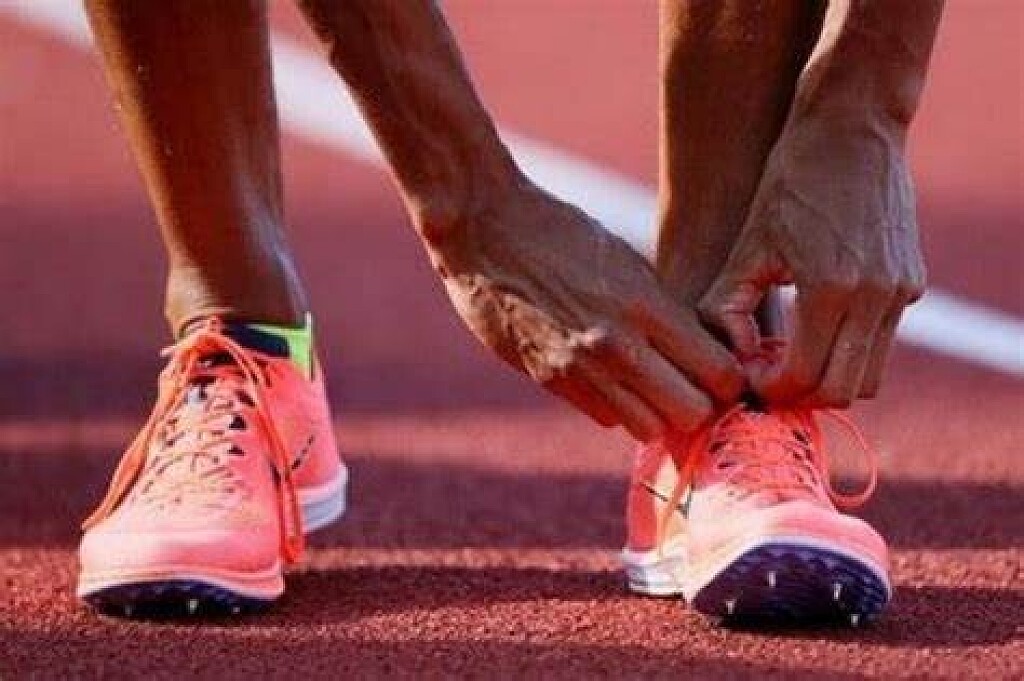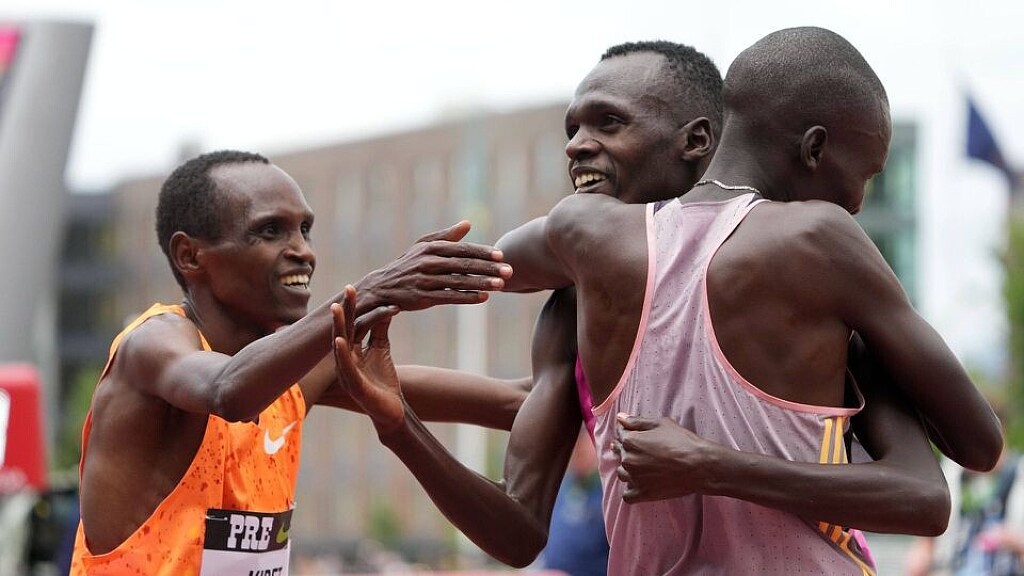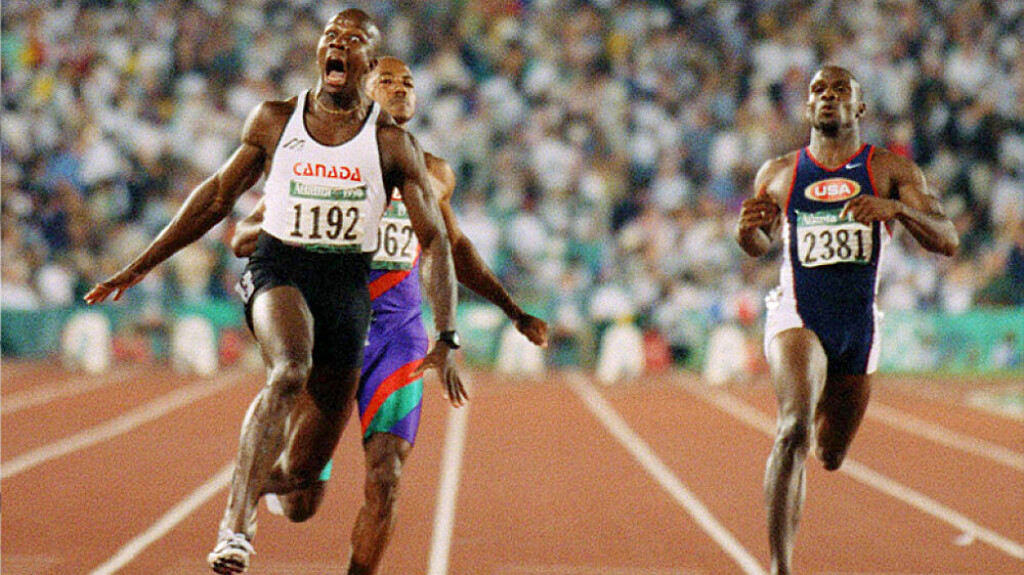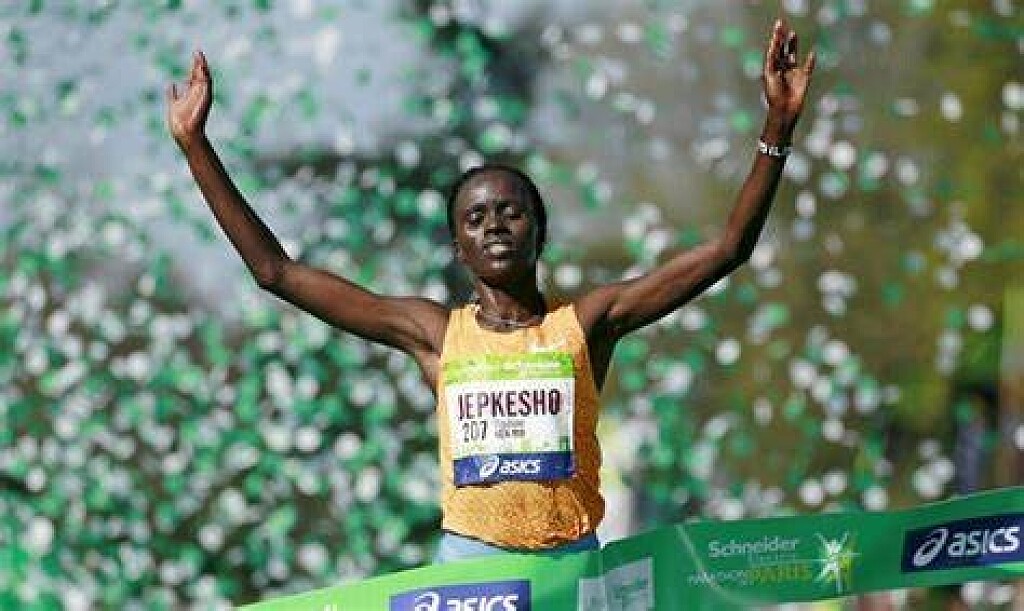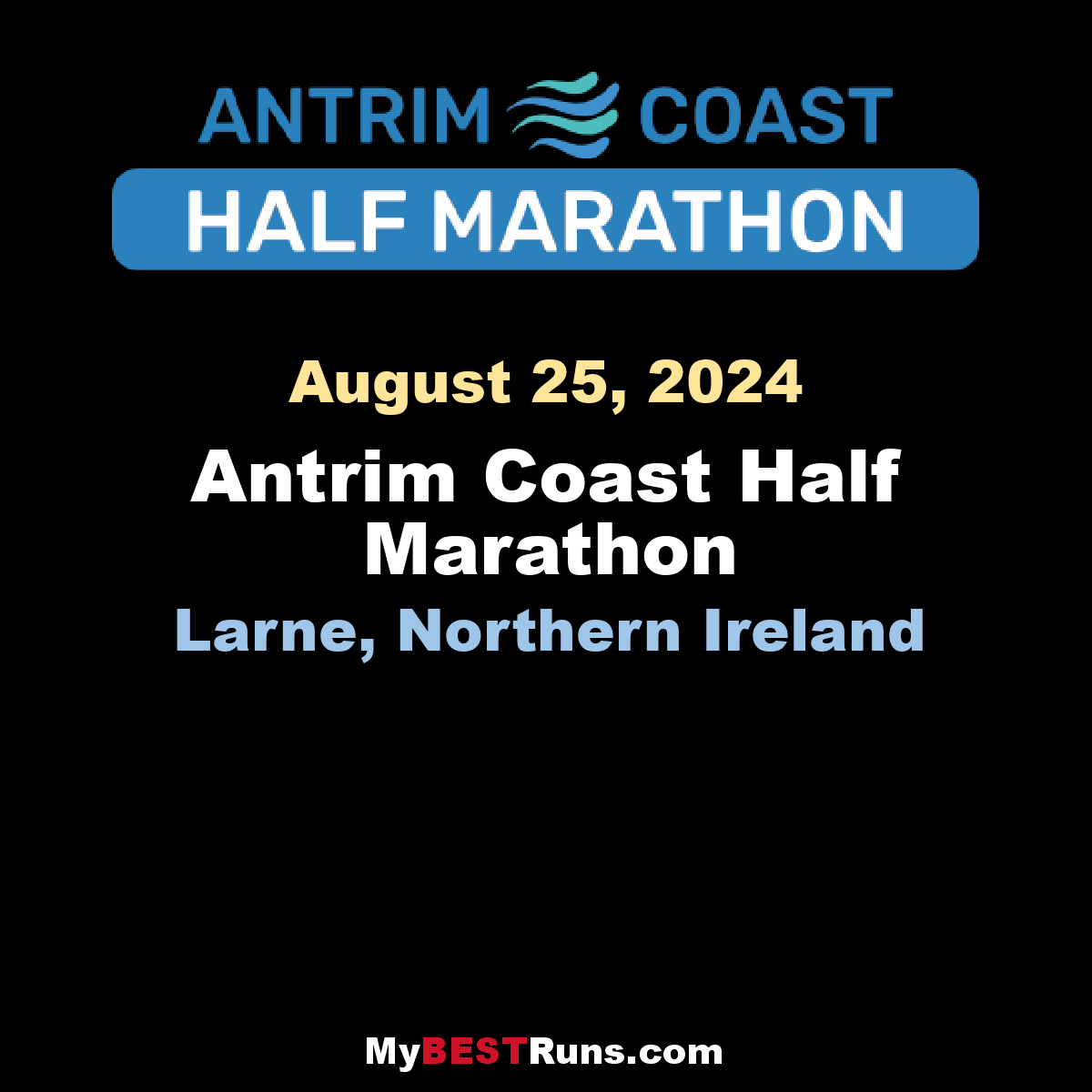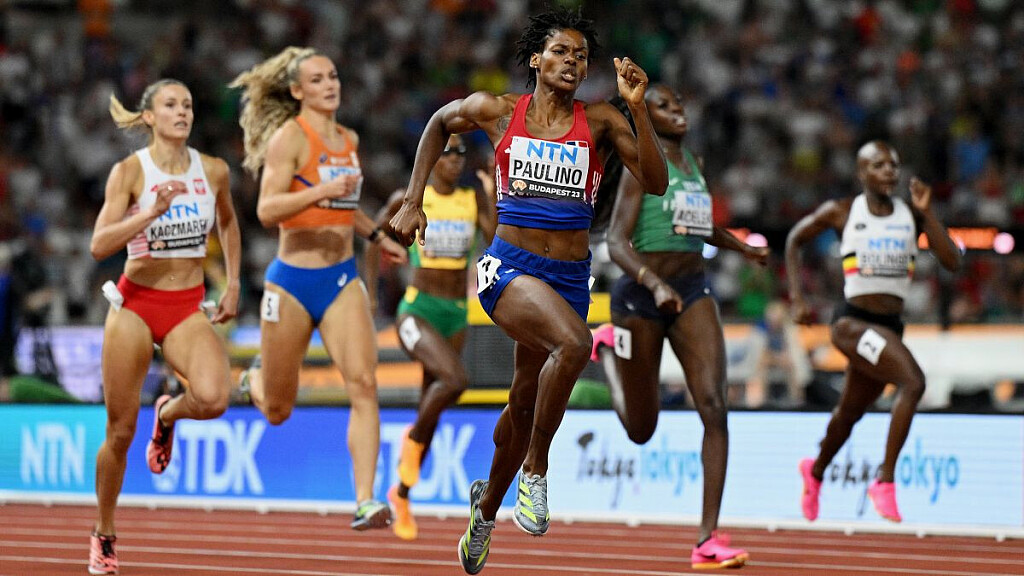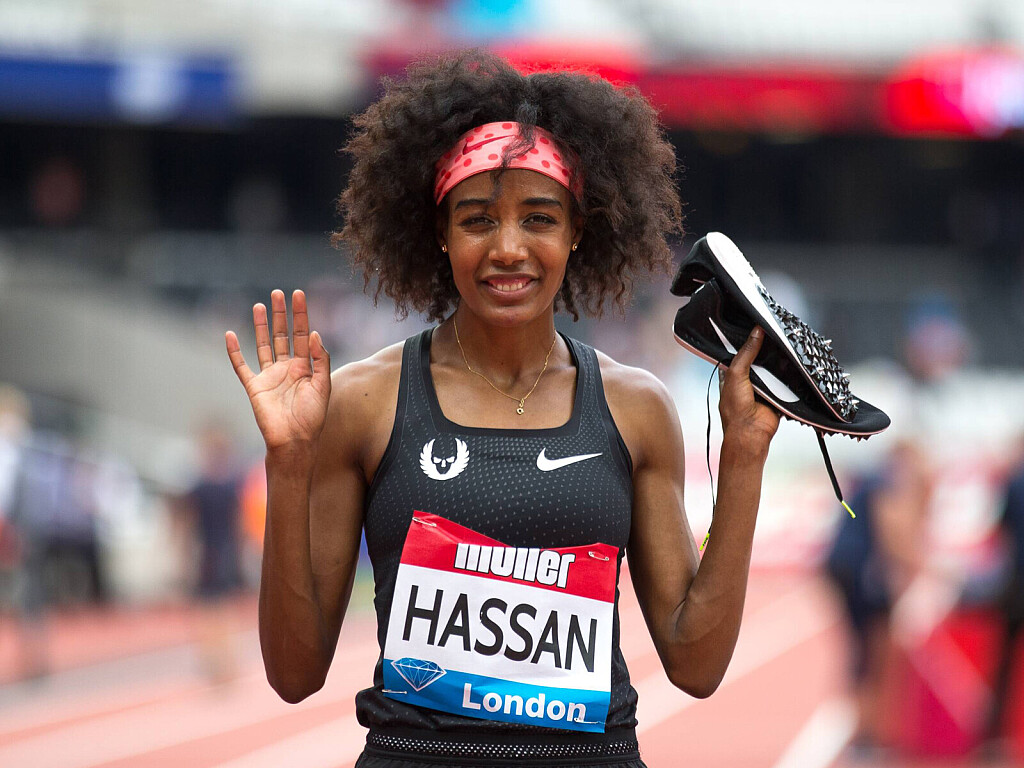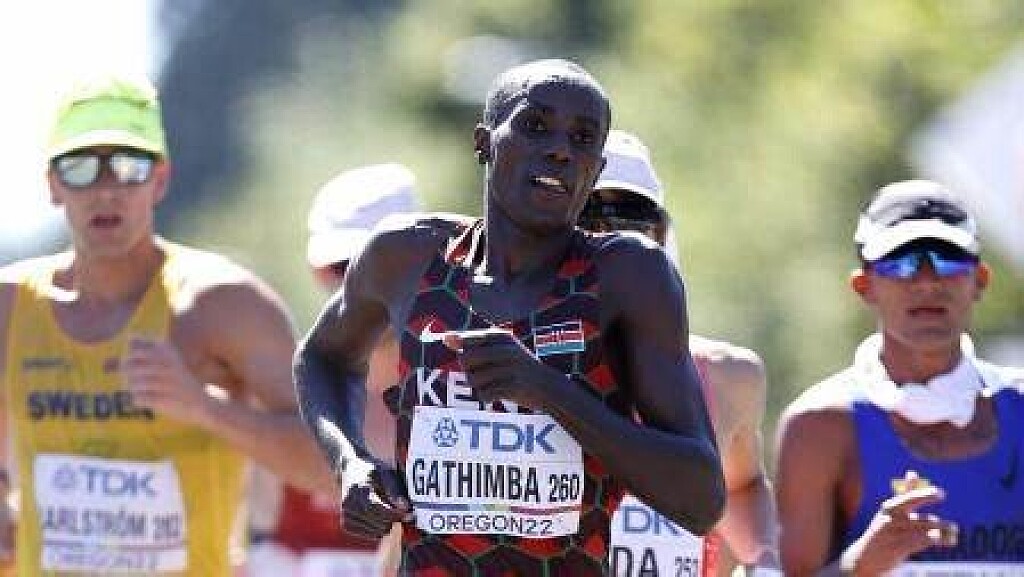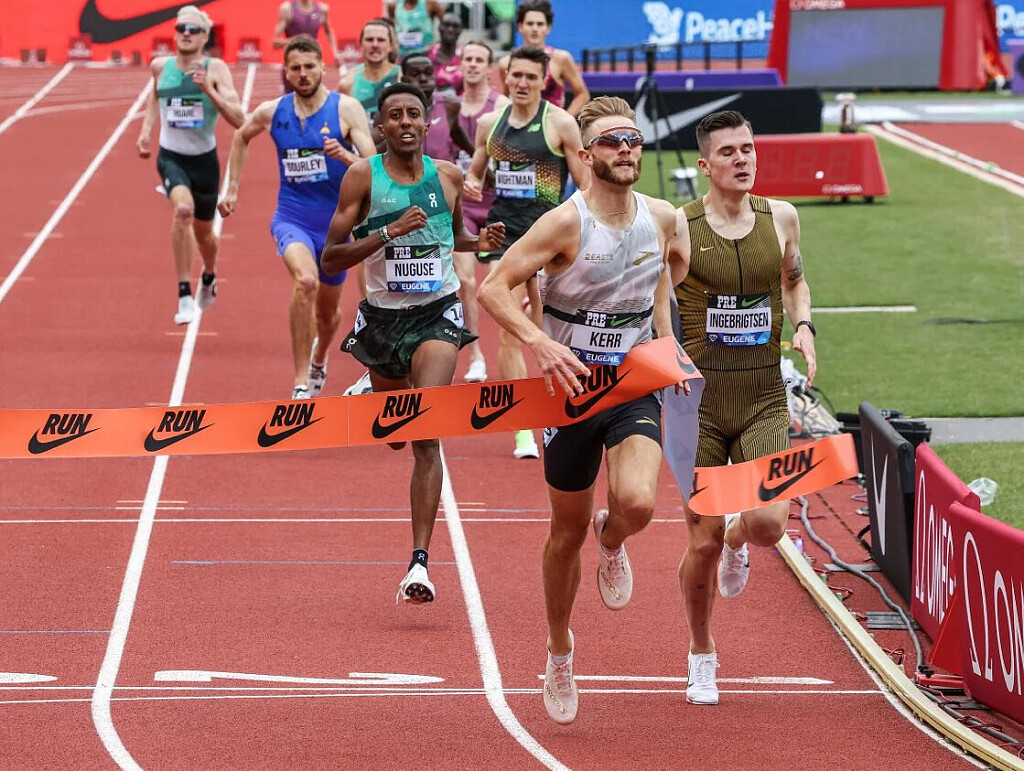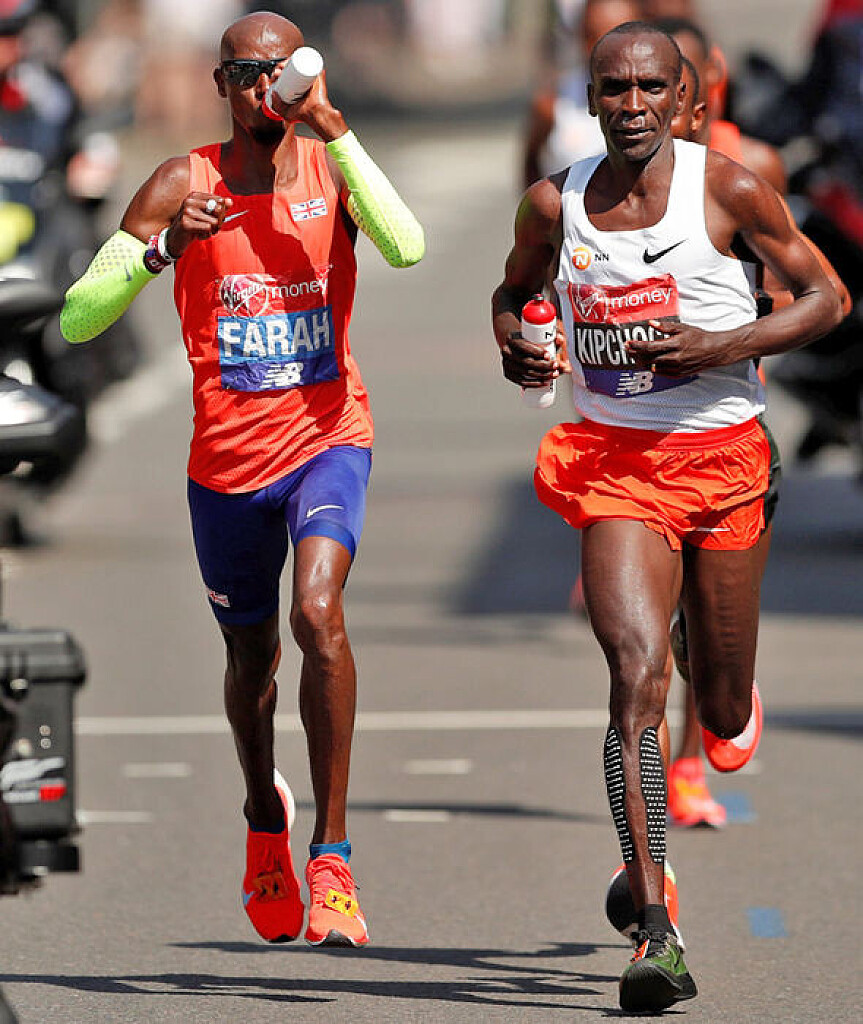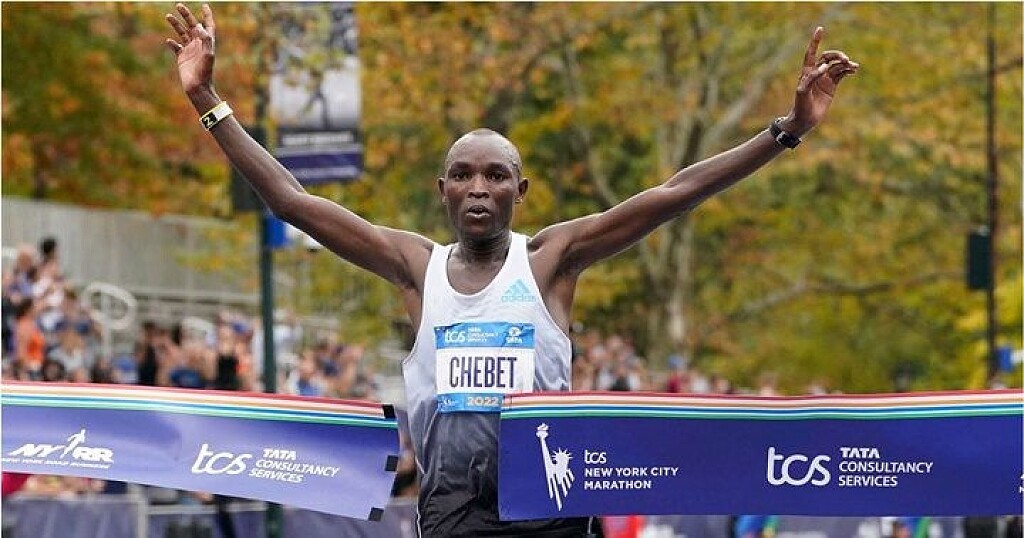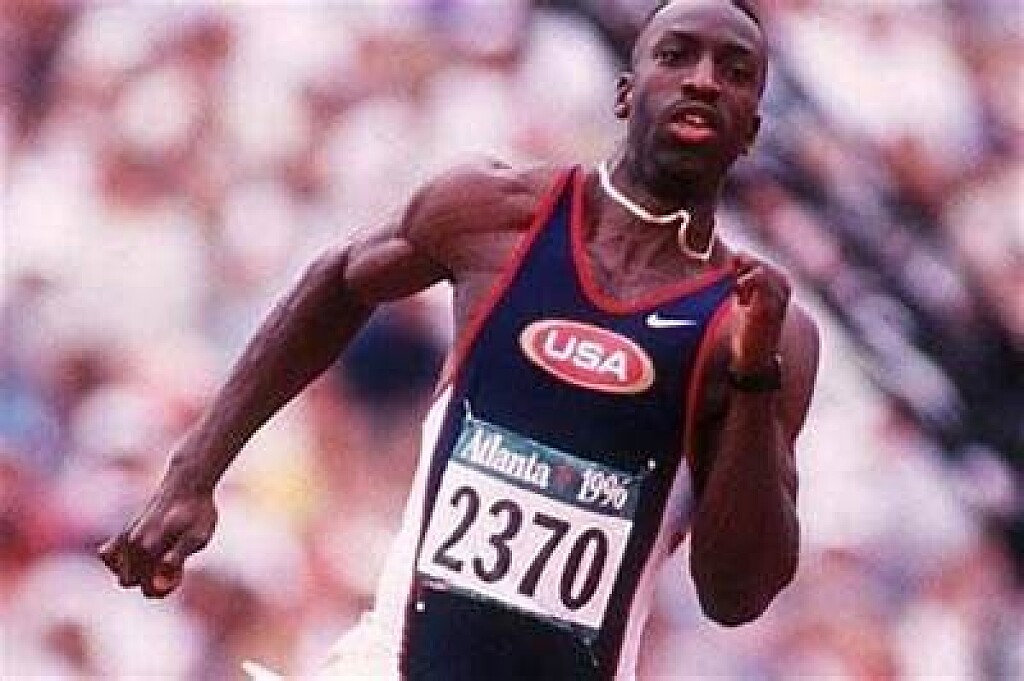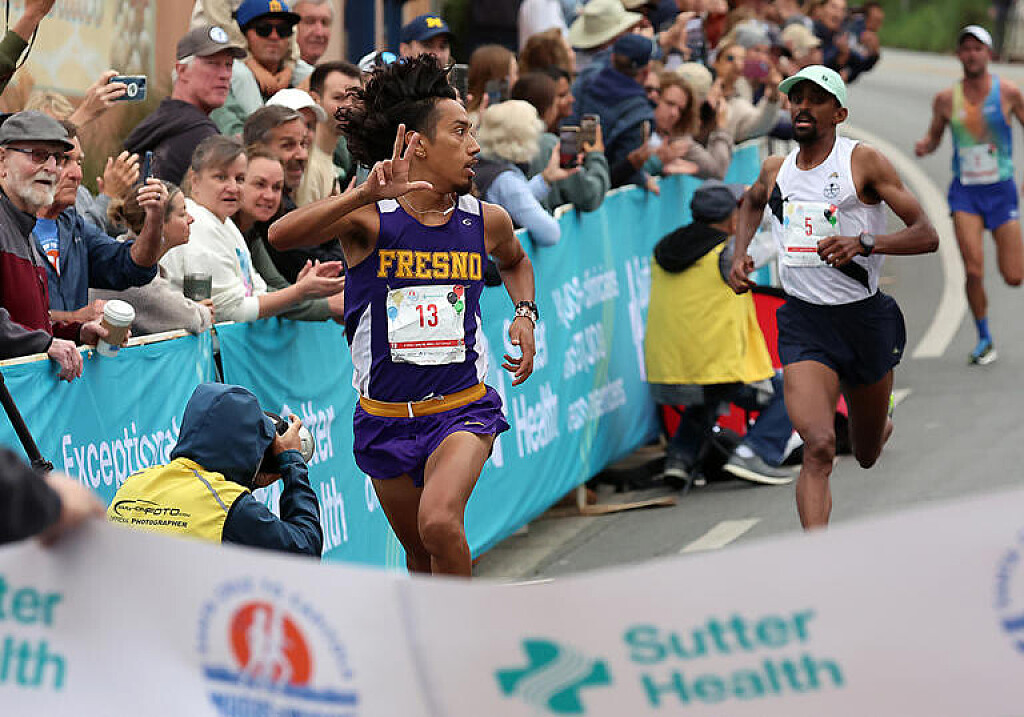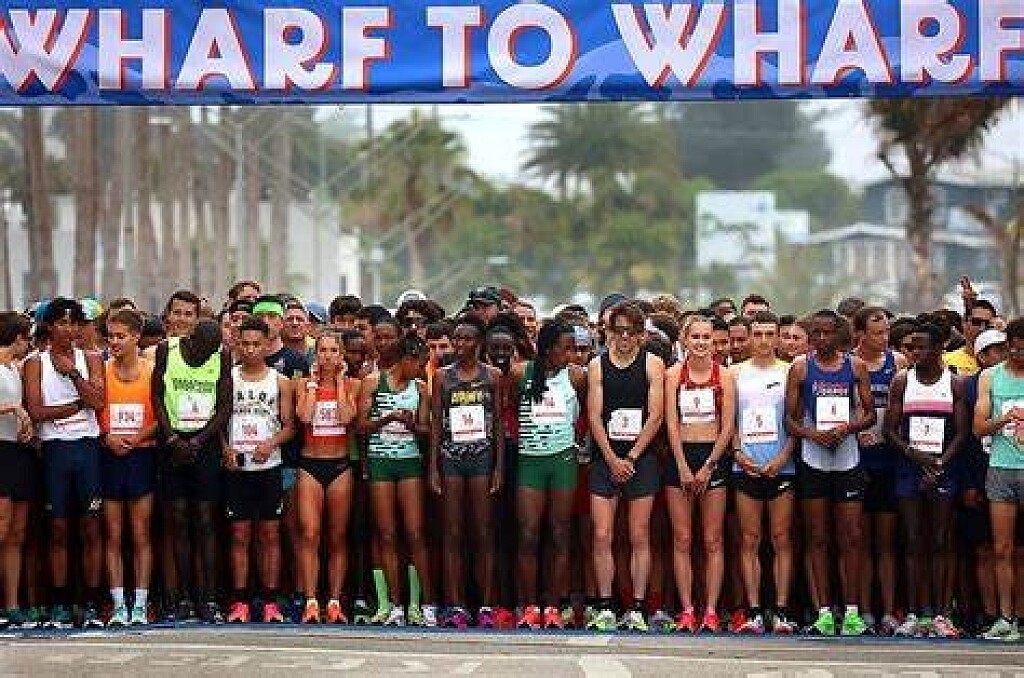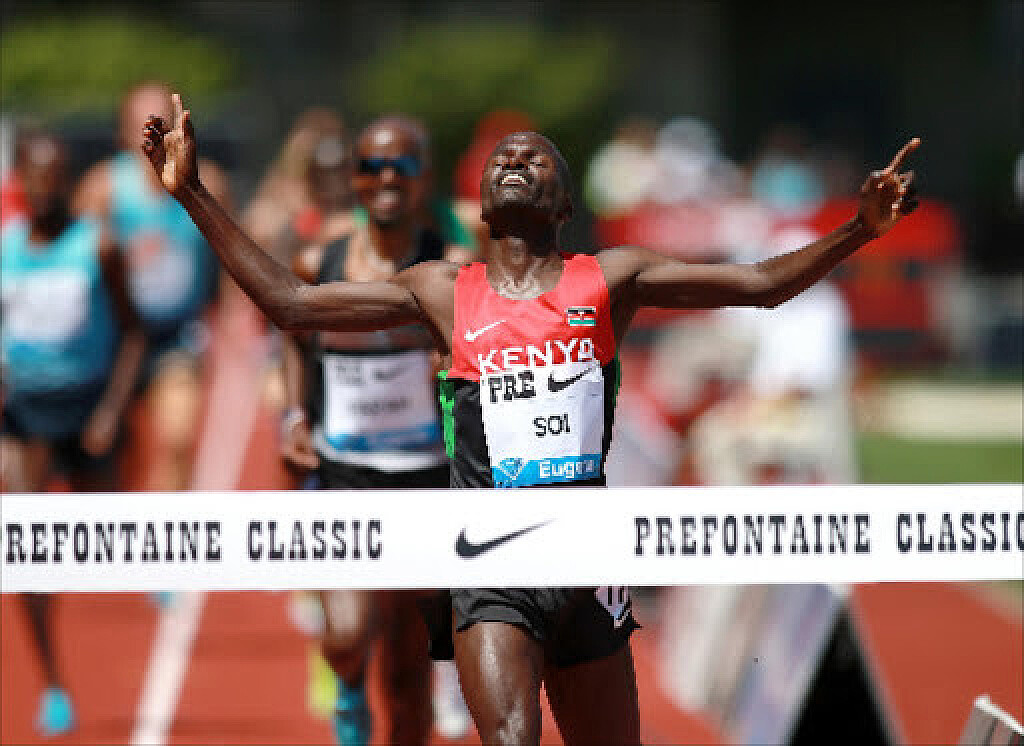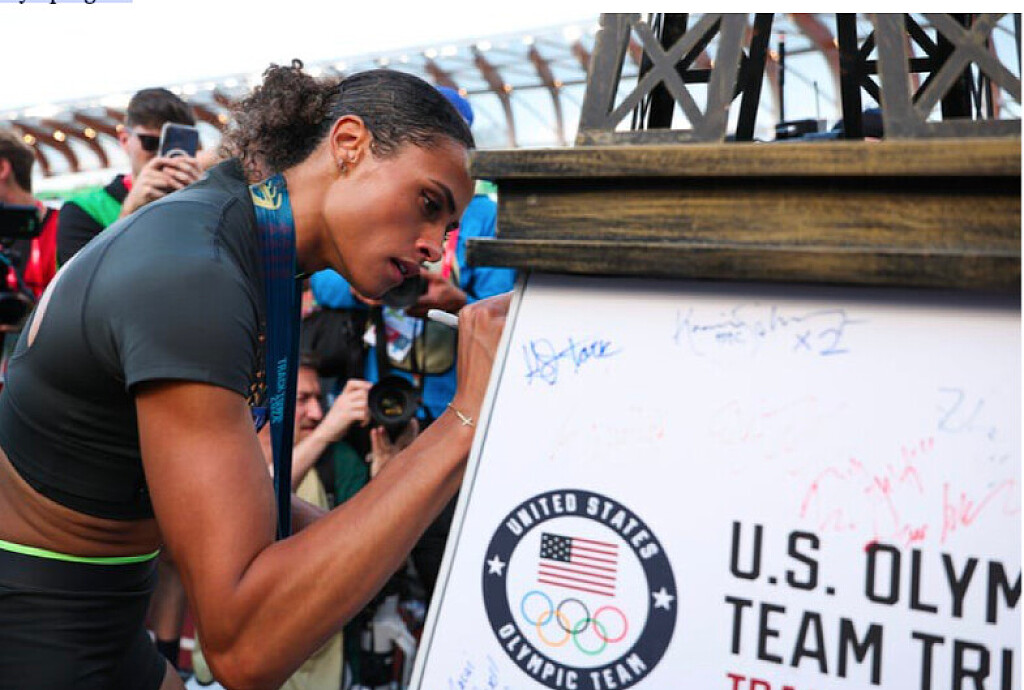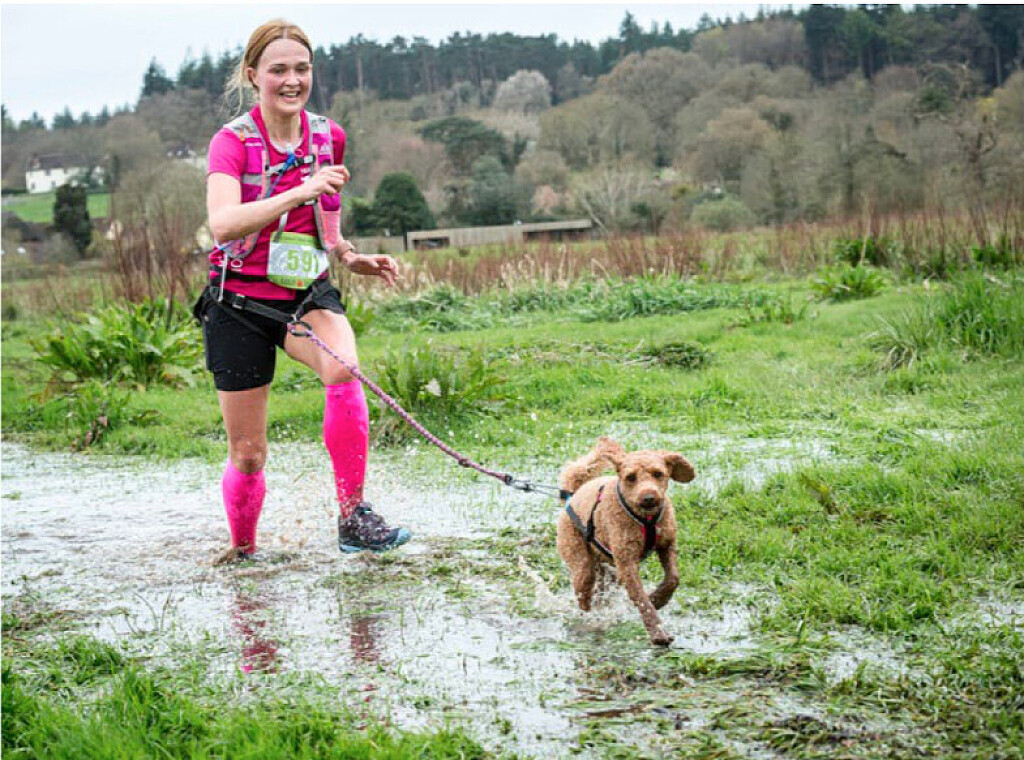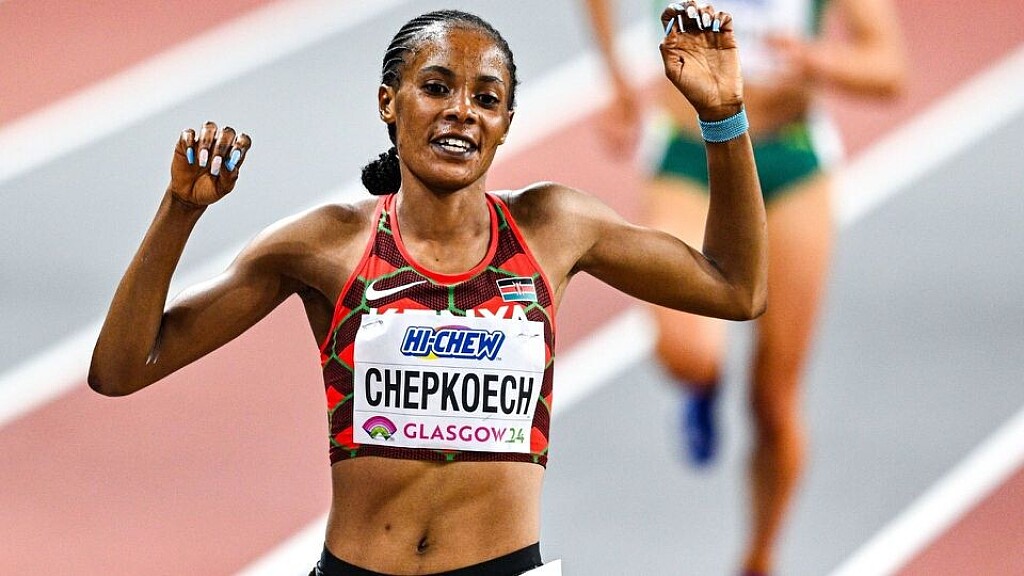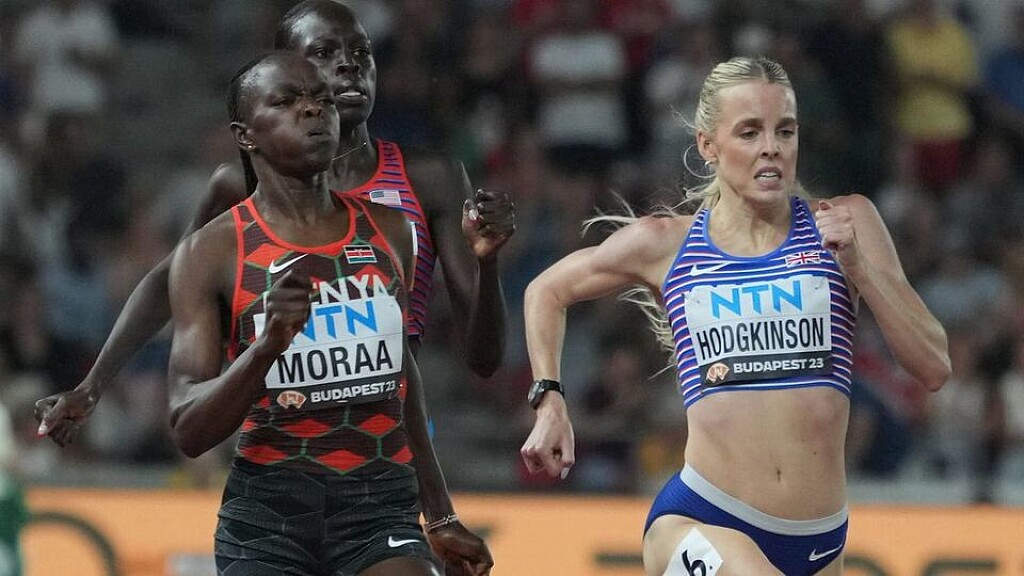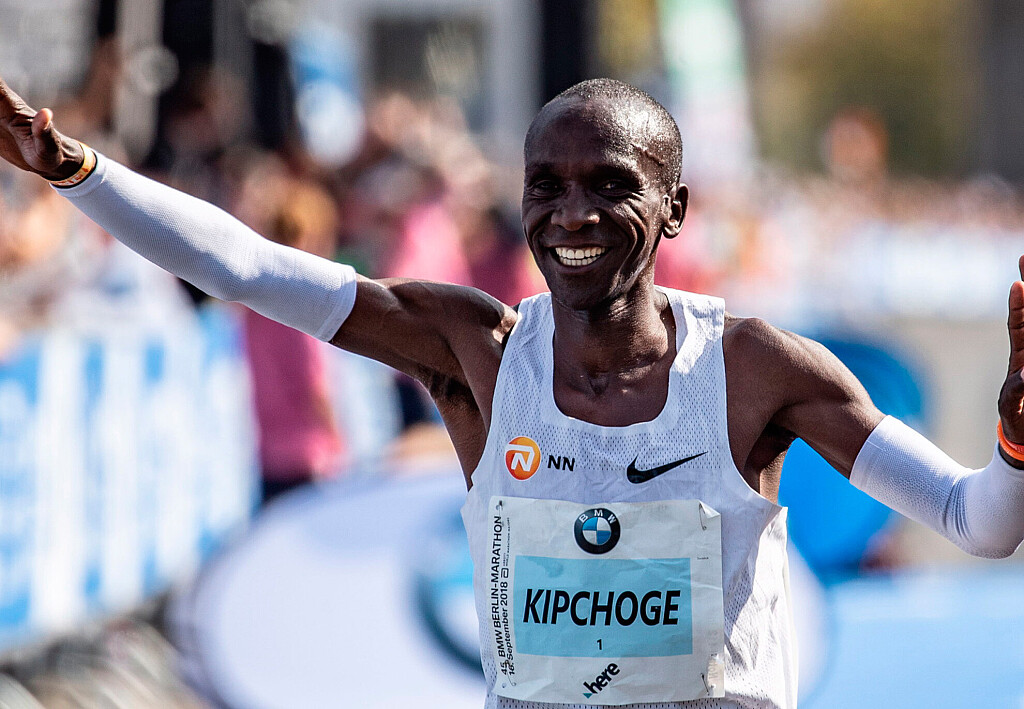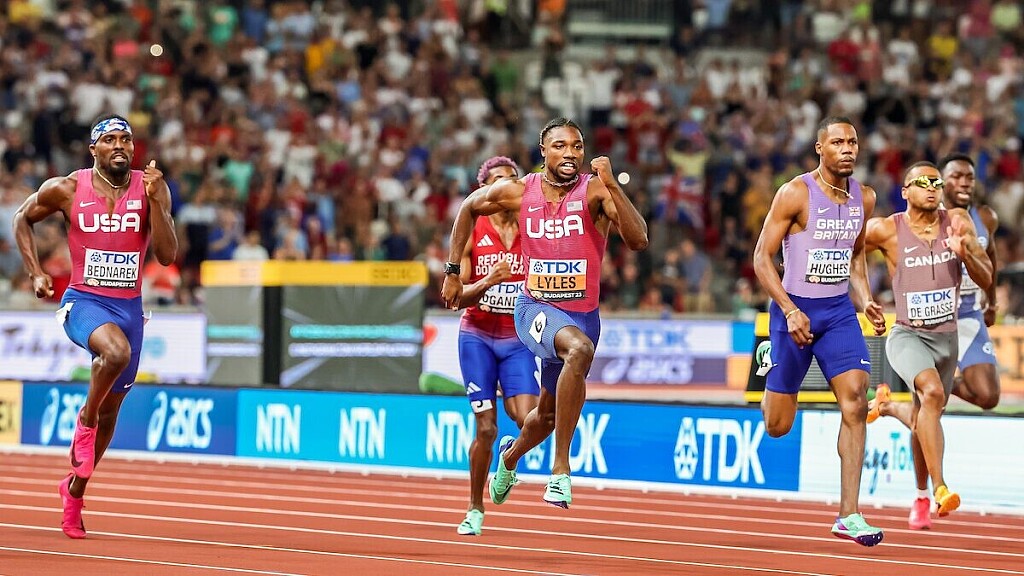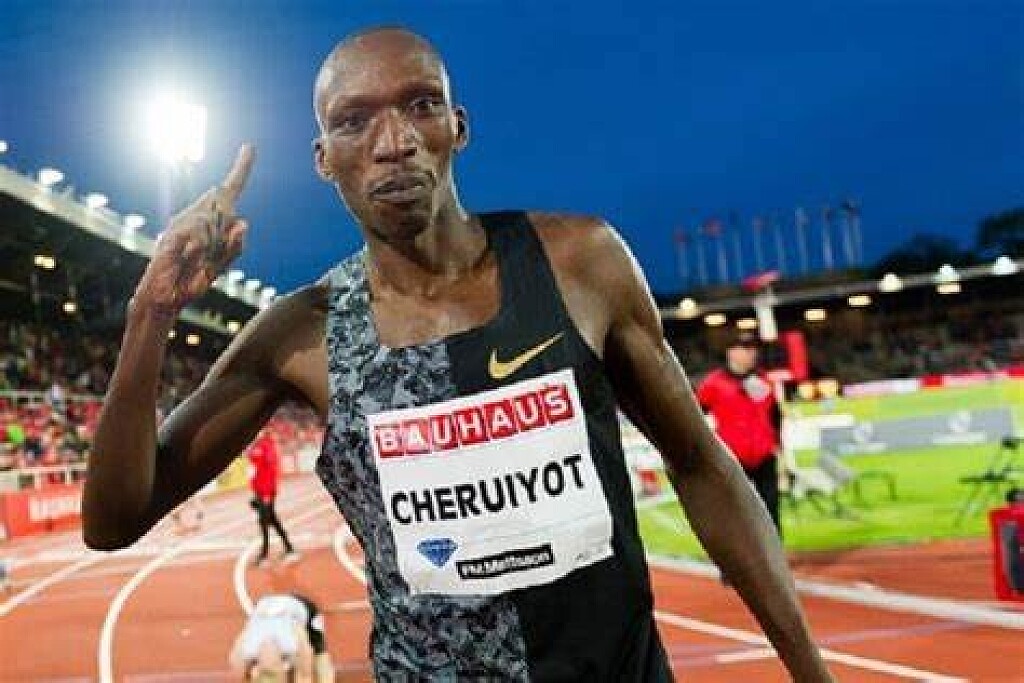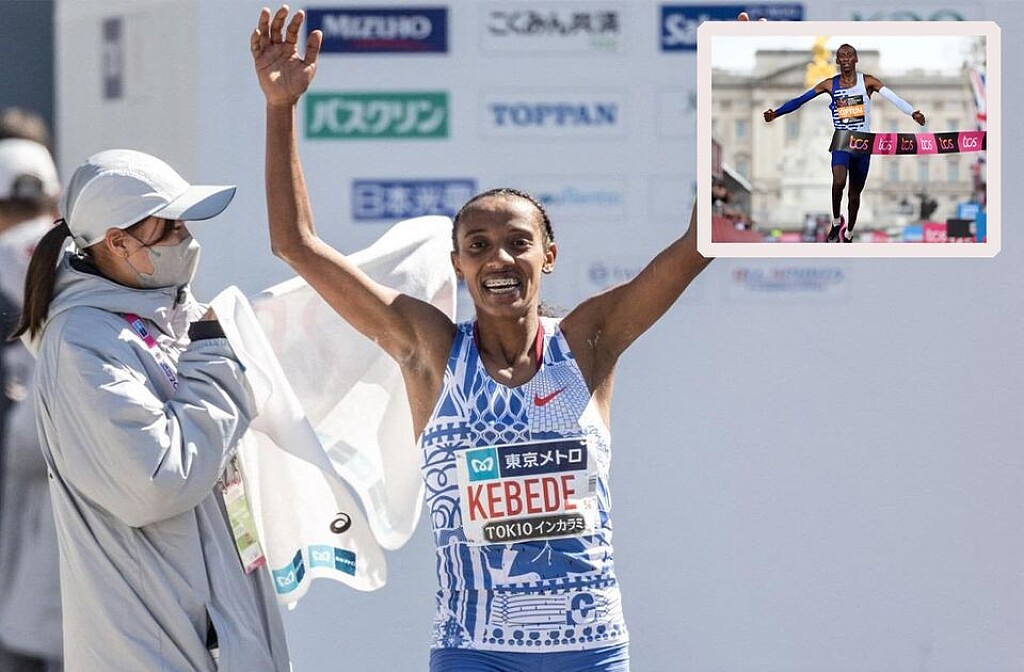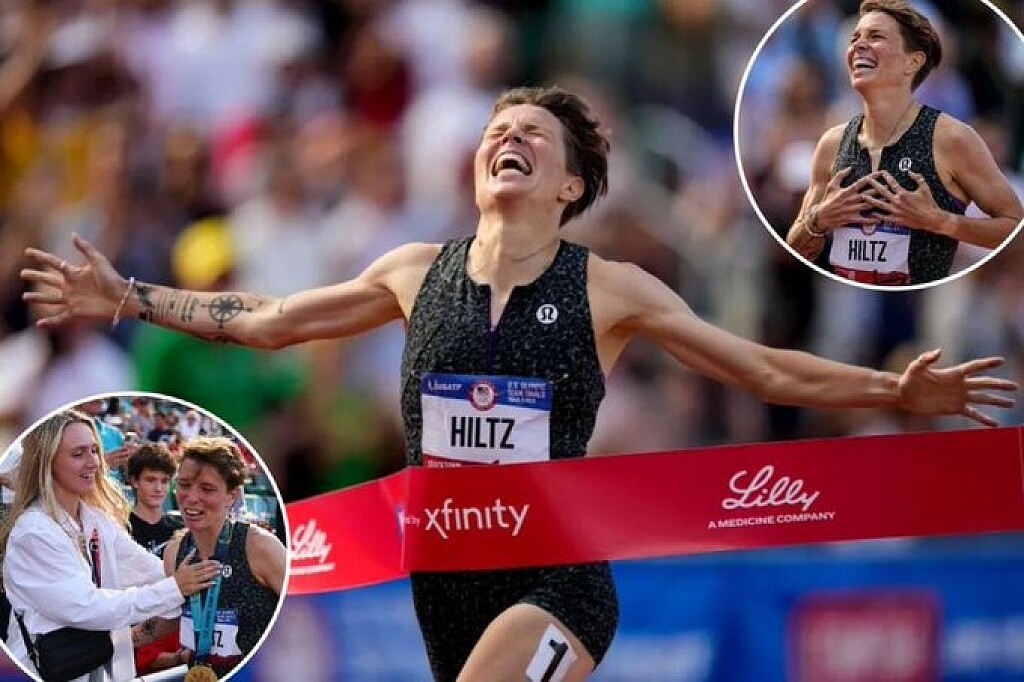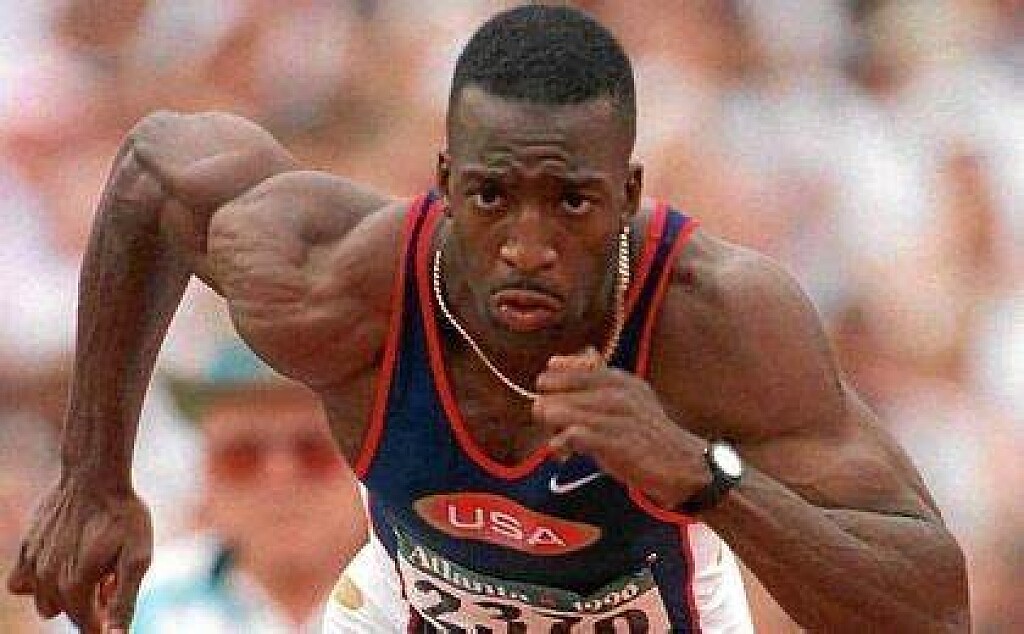Running News Daily
Running News Daily is edited by Bob Anderson. Send your news items to bob@mybestruns.com Advertising opportunities available. Train the Kenyan Way at KATA Kenya and Portugal owned and operated by Bob Anderson. Be sure to catch our movie A Long Run the movie KATA Running Camps and KATA Potato Farms - 31 now open in Kenya! https://kata.ke/
Index to Daily Posts · Sign Up For Updates · Run The World Feed
6 Different Kinds of Salt and How to Use Them
For such a basic ingredient, there is variety.

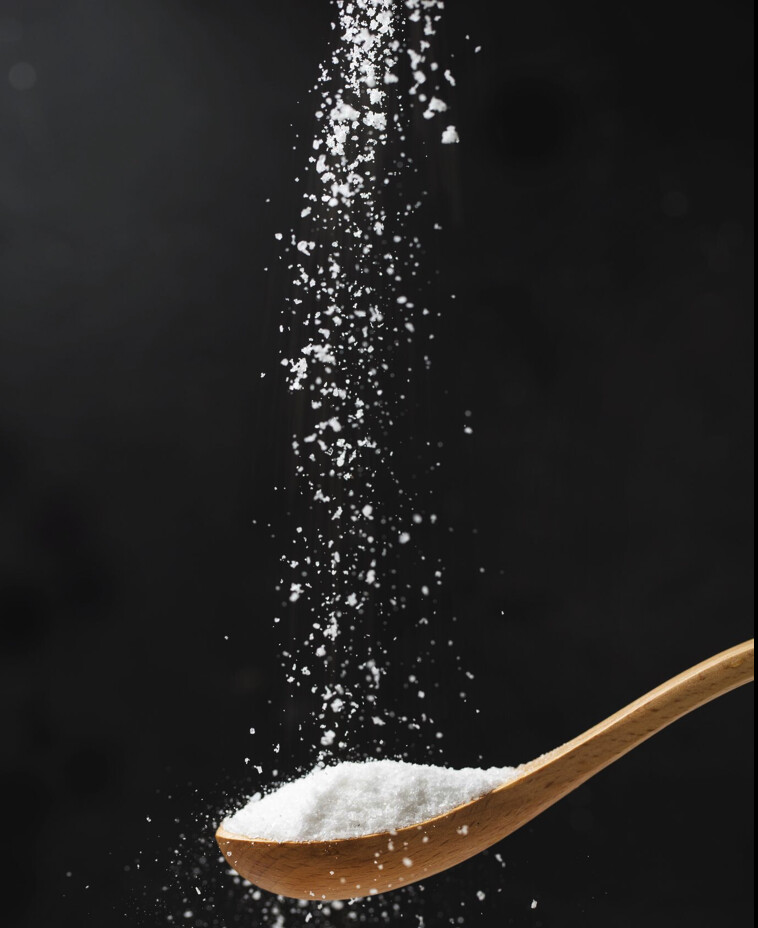
SALT IS ONE of the most commonly used ingredients in the kitchen. And, if you've restocked your supply anytime recently, you might have noticed that there are a few more options beyond a classic shaker of Morton's nowadays. It leaves you to wonder: Are certain kinds of salt healthier than others?
We spoke with Amelia Sherry, M.P.H., R.D., to find out what makes salts different, if some are healthier than others, and how much is too much.
What is salt?
Salt is a mineral composed of sodium chloride, used in foods for flavor, baking, and curing purposes.
"The biggest differences are in size, shape, and texture (of the crystals) which really impacts seasoning and flavors in your food," says Sherry. “Larger granules are less salty, similar to table salt, which has tinier granules. Smaller granules offer a saltier flavor, and there are also salts that are more crunchy and harder."
The differences depend on from where the salt is from, how it's prepared, and its mineral content. While these factors don't affect the nutritional value of salt, they can change the flavor.
Are some salts healthier than others?
There's not much of a difference.
“I don't think there is one that's superior to another. The best one is the one that works for you, while still limiting the amount you consume per day,” Sherry says. There's a misconception that sea salts might be better because they contain naturally occurring minerals like magnesium or potassium, but there's not enough of those nutrients to make a difference in your intake.
How much salt should I have per day?
The amount of salt you should consume per day depends on your specific needs, Sherry says. Although salt is not pure sodium, it is made up of sodium chloride. Too much sodium can be harmful to your health, causing dehydration, high blood pressure, and fluid retention.
Generally, the American Heart Association recommends consuming no more than 2,300 milligrams of sodium per day. (Though the amount also depends on how much you exercise, how much potassium you eat, and if you have any heart conditions.) “If you're avoiding sodium in your diet or eating a low-sodium diet, half a teaspoon may be acceptable per day. For most of us, [salt intake may be lower] because we get sodium from other foods," she says.
And, let's be real: most prepared and processed foods have salt in them. (Even your protein powder has salt in it.) If you're consuming a good amount of processed foods, Sherry suggests limiting to about a quarter teaspoon of salt a day.
1
Table Salt
Regular table salt is a staple in many kitchens. It is very fine, almost powder-like, and highly concentrated. Table salt is usually refined to remove impurities and often has iodine added, which helps regulate thyroid hormones.
“It's important to note that iodized table salt is a significant source of iodine. This is crucial to keep in mind if you're avoiding iodized foods like seafood, dairy, and eggs,” which your doctor might recommend if you have thyroid issues, Sherry says.
Use table salt sparingly, as it packs a lot of flavor in a small amount.
2
Flaky Salt
Flaky salt has flat, larger crystals and a coarser texture than traditional table salt. These flakes are less salty due to their larger volume and are perfect as a finishing touch on chocolate chip cookies, avocado toast, and a fried egg.
3
Sea Salt
Derived from evaporated seawater, sea salt comes in many varieties and origins. The most common are Celtic sea salt, Fleur de Sel from the French sea, and Hawaiian sea salt. Sea salt is less refined than conventional table salt, with retaining traces of minerals and electrolytes like iron, zinc, magnesium, and potassium, which alters the flavor.
4
Pink Himalayan Salt
Mined from the Khewra Salt Mine in Pakistan, Pink Himalayan salt is often thought to be healthier due to its mineral content—but that's not true. The additional mineral content is so minimal that it doesn't really change its nutritional value.
Himalayan salt is often used as a finishing salt in sauces, marinades, or to enhance dishes.
5
Black Salt
Black salt gets its color from high-temperature kiln heating of pink Himalayan salt. It has a distinctive strong, pungent flavor reminiscent of eggs, making it a popular choice in dishes like tofu scrambles.
6
Seasoned Salts
These blends combine herbs and spices with salt, perfect for barbecue rubs, chicken, salad dressings, and snacks like popcorn.
(08/03/2024) ⚡AMPOlympic Track and Field Stars Are Wearing Luxury Watches. Why?
IN TRACK AND FIELD, tenths (and even hundredths) of a second can make or break a race. Performance depends on extremely precise measurements and time rules all. So it makes sense that luxury watch brands would look to those athletes as natural billboards, placing their timepieces on the wrists of some of the sport's top performers.

When Noah Lyles, the fastest man in the world, settled into the blocks for the 200-meter finals at the U.S. Olympic Trials in June, 4.5 million viewers tuning in via NBC and Peacock could see the glint of the sun off what appeared to be a $50,000 Omega watch.
Wearing this type of timepiece during a 19.53-second sprint is clearly a flex, since “there’s no performance reason for [these athletes] to wear luxury watches,” explains Aaron Rapf, the founder and CEO of Advantage Sports Marketing Group, a sports agency that connects brands with athletes.
Runners are no stranger to pricy performance watches (a high-end Garmin can cost upwards of $900), and luxury watch companies are increasingly aligned with elite runners to “connect their company values to the sports landscape—which is one of the last bastions of true culture,” he adds. “If you want to be in a moment where you attract millions of people’s eyeballs at one time, it’s sports.”
These race day cameos are part of a more subtle approach to marketing, says Pierre-Loïc Assayag, CEO and co-founder of Traackr, an influencer marketing software company. “In the past, luxury brands were more focused on the product and the luxury associated with that product,” he says. “Now, these companies are taking the top athletes and putting them in front of their target audience, or one close to it, to demonstrate by proximity that ‘we are the precision brand’ or ‘we are the endurance brand.”
The kind of maneuvering uses a third party—one that’s fast, flashy, and accomplishing amazing feats—to craft an image the brand wants audiences to respond to. And by choosing athletes as brand champions, companies deftly align themselves with the hallmarks of high performance: precision, prestige, innovation, exclusivity, heritage, and craftsmanship.
In the past, those buzzwords were more likely to call to mind country club-esque activities (think: tennis or horseback riding) or auto racing, where the traditional consumer has been very upper class, living a high-cost lifestyle. But as culture skews more towards sport, health, and wellness, leaning into the popularity of running opens companies up to a new class of consumers, says Jessica Quillan, a luxury fashion brand and content strategist. “Track and field seems more accessible, because even though these athletes are performing at a super elevated level, anyone can go out and run,” she explains.
By association, watches become a more accessible form of wearable luxury. You may not wear one to train or on race day like the elite, sponsored atheltes, but a sporty aesthetic can translate into your everyday life; post-run, you can still swap your COROS smartwatch for a sleek, sporty timepiece from a brand like Omega (which happens to sponsor the Diamond League, an annual series of pro track and field competitions). And though you may not be ready to buy a five-figure watch now, these companies are playing the long game; by connecting themselves with major players in sport, they’re hoping to build brand recognition and loyalty among potential future customers.
The Watch Brands Olympic Runners Are Wearing
For those looking to upgrade their Garmin—now or as a future reward for finally achieving that personal best—these are a few of the luxury watches your favorite track and field stars have been sporting.
Two-time Olympic gold medalist Sydney McLaughlin-Levrone, who will represent Team USA in Paris again after breaking her own World Record in the 400-meter hurdles in June, has been sponsored by Tag Heuer since 2021.
Tag Heuer is often considered the Cadillac of luxury watches, and McLaughlin-Levrone’s preferred watch, the Connected Calibre E4, is closest to the average runner’s GPS smartwatch: It operates on Wear OS by Google; has a 1.28-inch AMOLED display with crisp resolution; houses a heart rate sensor, barometer, and compass; and holds a 24-hour charge, including a one-hour sports session. The basic model, which includes a rubber strap, starts at $1,250.
Olympic bronze medalist Josh Kerr is a double World Champion—in the 1,500-meter and 3,000-meter—which made him a natural representative for Swiss watch brand Longines, the official partner and timekeeper of the 2022 Commonwealth Games in Birmingham. Kerr, who is not currently working with Longines, recently ran a 3:45.34 in the Bowerman Mile, a historic and prestigious race held annually at the Prefontaine Classic in Eugene, OR, to set a new world-leading time in the event and a new British record. Back in 2022, Kerr wore the-limited edition HydroConquest XXII Commonwealth Games, a sporty steel dive watch with an automatic caliber, or engine, one-directional ceramic bezel, luminescent indices and hands, and an anti-reflective coating for crystal clear readability in any situation.
In addition to their Paris 2024 partnership, Omega is the official sponsor of the Diamond League (an annual series of elite track and field competitions) and counts Noah Lyles—one of the biggest personalities in track and field—as an ambassador. Lyles, who earned a bronze medal in the 200-meter race at the 2020 Tokyo Games and has his sights on breaking Usain Bolt’s records in the 100- and 200-meter races, wears Omega’s iconic Speedmaster Moonphase.
This style was introduced in the 1980s, but the latest model—an oversized, steel-on-steel timepiece—was the first to earn a Master Chronometer certification thanks to a self-winding engine designed to withstand temperature fluctuations, water immersion, and electromagnetic frequencies. The timepiece can also hold up to the shock that comes with covering 100 meters in less than 10 seconds (when it's on Lyles's wrist, at least).
Sprinter Dina Asher-Smith is the fastest British woman on record, with two Olympic bronze medals from the 4 x 100-meter relay to her name. She’s also no stranger to luxury partnerships, having previously modeled for Louis Vuitton, Valentino, and Off-White, and has been working with Hublot since 2018. Asher-Smith has promoted a variation on Hublot’s flagship model, the Big Bang One Click, which starts at $14,200.
Its smaller face was designed for slimmer wrists, and uses the brand’s patented “One Click” fastening system so wearers can swap out the straps for other colors or materials. The sporty, semi-skeletonized hands balance out flashiness of the diamonds on the bezel, and a self-winding caliber packs plenty of power into the compact timepiece.
Ahead of what she says will be her final Olympic Games, Jamaican sprinter Shelly-Ann Fraser-Pryce—the most decorated athlete in 100-meter history—announced a partnership with Richard Mille. Fraser-Pryce wears the RM 07-04 Automatic Sport, the first women’s sports watch from the McLaren of watch brands, which retails at $185,000 (it’s the same watch Nafi Thiam, a double Olympic champion from Belgium, wore while setting a new pentathlon world record in 2023). The skeletonized aesthetic is housed in a compact case with rigid finishings for shock-resistance, and the button on the side allows the wearer to switch between winding, neutral, and time setting modes for the crown. While it would be nearly impossible to read during a race, at 36 grams it’s lighter than most standard running watches.
(08/03/2024) ⚡AMPby Men’s Health
"It’s all about seeing what I can do" – 74 runners cross the finish line after tackling temperatures over 100F in Death Valley ultra
The race is frequently billed as the world's toughest foot race
What is the toughest race in the world? If you're a trail runner, the obscure Barkley Marathons probably comes to mind with its overgrown terrain and mind-boggling 54,200 feet of accumulated vert. But for those whose preferred mode of transport is road running shoes? There's nothing quite like the Badwater 135 which wrapped up yesterday morning in typically grueling conditions.

An impressive 74 runners out of 97 hopefuls who took off from the starting line in Death Valley National Park had crossed the finish line Wednesday morning after running through daytime temperatures as high as 120 degrees Fahrenheit (48.8C) and nighttime lows above 100F (37.7C). A recent heat wave sweeping the western states has been blamed for several deaths in National Parks including one in Death Valley on July 6 when a motorcyclist succumbed to heatstroke.
In addition to extreme heat, these hardy runners encountered higher humidity than normal as they set off during a light rainstorm. The course took them from Badwater Basin, the lowest point in North America, to the trailhead of Mount Whitney at 8,300 feet and over three mountain ranges with a total elevation gain of 14,600 feet.
“For me it’s all about seeing what I can do, you know, testing my own limits, seeing how well I can do these extreme things,” Alabam runner Jessica Jones tells the Associated Press.
In the end, it was Colorado runner Shaun Burke, 37, of Durango who took first place in the men’s division with a time of 23:29:00 while 52-year-old Line Caliskaner of Norway led the women’s division, at 27:36:27 and finished second overall. We're willing to bet these runners had done some serious heat training and had some well-rehearsed hydration strategies in place to survive this course.
Race organizers do not provide aid stations or support during the race, which has been an annual event since 1987. To date, there have been no fatalities at the Badwater 135.
(08/03/2024) ⚡AMPOne of the World’s Best Ultra Trail Runs Gets Better
With new distances and the chance to compete in the Canadian Trail Running Championships, Québec Mega Trail gives runners more ways than ever to experience the Québec outdoors in 2025What makes a world-class trail running event? Amazing scenery, a challenging course, a supportive community, and opportunities for runners of all levels. Québec Mega Trail checks all the boxes.
You have the intensely green landscape near the St. Lawrence River, the epic singletrack through the Laurentian Mountains, and the beautiful region of Charlevoix. You have the cheers and smiles of spectators at the base of Mont-Sainte-Anne. And you have a wide variety of distances at the QMT race series, making it possible for runners of all levels to be pushed by the terrain and supported by the local community, culminating in an unforgettable experience. Here’s what’s new for 2025.First, the iconic Québec Mega Trail 100-miler—historically the longest event offered at QMT—will be replaced by a 135-kilometer race, which is approximately 84 miles. The new course will have a higher distance-to-elevation ratio, with 6,000 meters of cumulative altitude gain. The additional climbing will take runners from the starting point in the quaint town of Baie-Saint-Paul, on the northern shore of the St. Lawrence River, to Mont-Sainte-Anne, a ski mountain situated within the Laurentian Mountains.
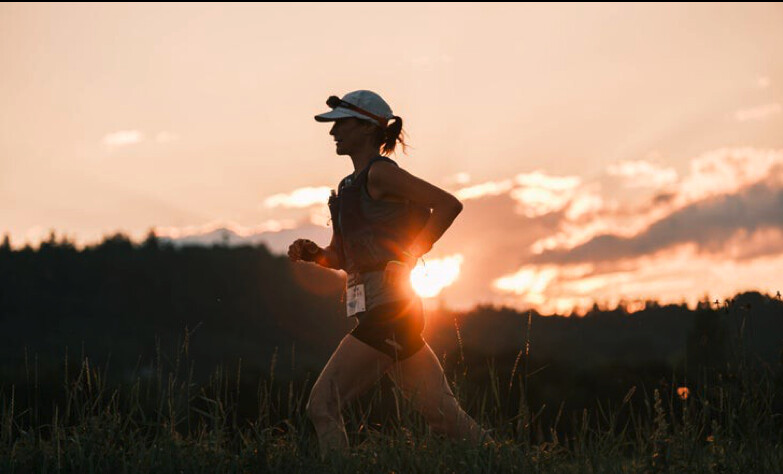

“The idea is to get the most out of our trails,” says Jean Fortier, general director and founder of Québec Mega Trail. “Taking into account the opinions of athletes and after consulting our large community, we decided to shorten the legendary 100-miler to make it even more competitive. Ultimately, it is the runners who will tell us if we made the right choice.” This change will help increase participation, as the 135K distance is attainable for a larger group of skilled runners.Since its debut in 2012, QMT has attracted accomplished trail runners from around the world. It is recognized as one of the most beautiful—and most difficult—trail races in Canada, crossing through the Charlevoix and Côte-de-Beaupré regions of Québec to Mont-Sainte-Anne. The terrain is extremely technical, with many exposed mountain passages and singletrack winding through dense forests.
In addition to the new 135K race, the 2025 QMT will host 50K and 80K events of the Canadian Trail Running Championships, which include classic up-and-down races and trail ultramarathons, providing opportunities for runners to measure themselves against trail running’s best athletes. Additional distances ranging from a 1K kids’ run to a 110K will continue to be offered.In 2024, Québec Mega Trail joined the World Trail Majors (WTM), a ten-race global running series. Despite joining an international stage, Fortier says the weekend of trail running continues to be rooted in the richness of Québec’s mountains, forests, and community.
“With our presence within the WTM, we are of course noticing more and more international athletes interested in QMT,” Fortier says. “We will have a very good elite lineup on our trails in 2025, and there will certainly be fierce battles to watch closely.”In the final QMT 100-mile race, Anne Champagne broke the women’s course record with her finish in 24:28:27, and Jean-François Cauchon took the men’s course record by 25 minutes, crossing the finish line in 19:01:28.
Québec Mega Trail’s 2025 races are set for June 3–6. Early-bird pricing is offered in limited quantities with rates discounted up to 25 percent. Learn more, sign up to volunteer, and register here.
QMT is a legendary ultra trail race, renowned as one of the most beautiful and one of the hardest in Canada. More than 3,500 racers meet there every year. Founded in 2012, Québec Mega Trail actively promotes trail running while being a reference in terms of safety, sustainable development, and constant innovations.
(08/03/2024) ⚡AMPNew 10,000m Olympic Record in maybe one of the best 10000m ever
In what could be argued as the most gruelling track race of the Olympic Games, the 10,000m, it was an epic battle in the men’s final, as the reigning Olympic champion, reigning world champion and current world record holder were all in the lineup at the Stade de France to battle for the coveted Olympic gold medal.
Taking the fastest 10,000m race in the history of the Olympic Games was Uganda’s world record holder, Joshua Cheptegei, in a time of 26:43.14.
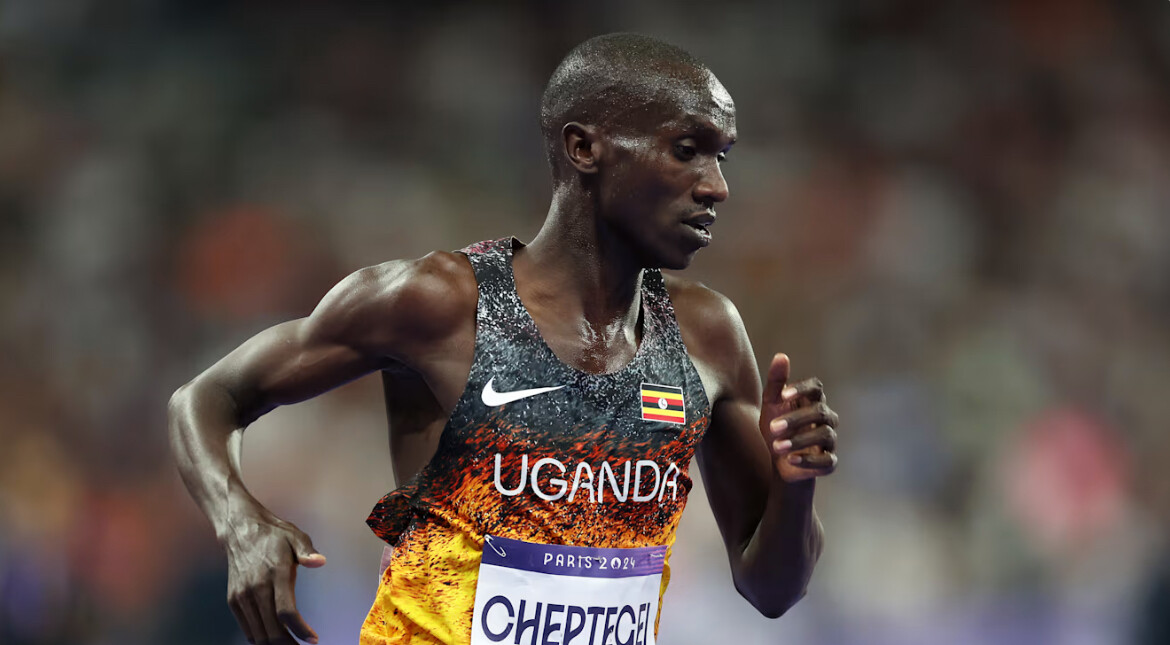
The pool was incredibly fast, with the first 13 finishers all coming in under the previous Olympic record, that before Friday night had held true since 2008.
Ethiopia’s Berihu Aregawi took the silver medal just 0.3 seconds behind Cheptegei, with USA’s Grant Fisher taking the bronze medal, 0.02 behind silver.
Reigning Olympic champion Selemon Baregaof Ethiopia took seventh place in 26:44.48.

More: Joshua Cheptegei of Uganda took the lead with a little more than a lap left in a masterpiece of a 10,000-meter race to finish in an Olympic-record 26 minutes, 43.14 seconds in front of a roaring crowd on an electric opening night at the track.
The world-record holder raced in the middle of a strung-out pack for most of the 25 laps on the calm, cool evening at the Stade de France.
Then he took off, and held the lead over the final 500 meters against a crowd of Ethiopians who set a blistering pace all night.
Ethiopian Berihu Aregawi beat American Grant Fisher in a sprint to the line for silver.
Fisher’s bronze medal marked the first for the U.S. in the longest race at the Olympic track since Galen Rupp took silver in 2012.
(08/02/2024) ⚡AMPThree hill sprint workouts that beat the heat
These hill sprint sessions pack a powerful punch in a short amount of time.
Hill sprints are a perfect summer workout because they pack a powerful punch in a short amount of time, meaning you don’t have to spend hours in the heat to see significant gains. We have three workouts to get you started.
These high-intensity sessions build both strength and speed, improve running economy and add a refreshing change to your regular routine.

1.-The classic
For this workout, find a hill with a moderate incline—it should be challenging, but one that you can sustain a fast pace on for at least 30 seconds.
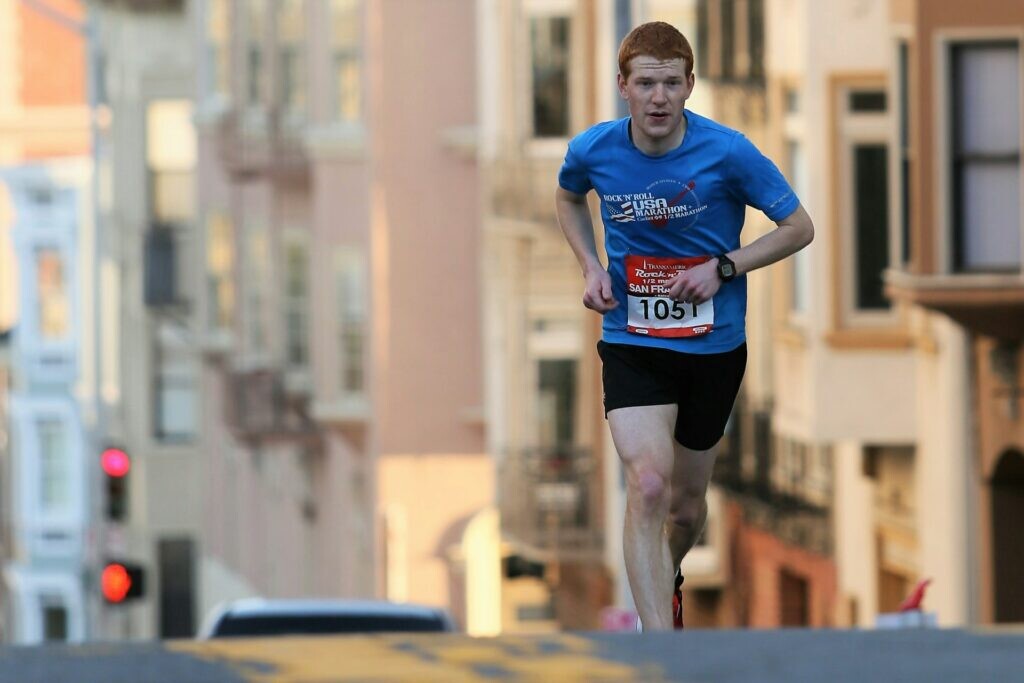
Warm up with 10 minutes of easy running.
Sprint uphill for 20-30 seconds at a medium-high intensity—slightly under your maximum effort.
Walk or jog back down for recovery (1-2 minutes).
Repeat 6-8 times.
Cool down with 10 minutes of easy running.
2.- Perfect pyramid
Warm up with 10 minutes of easy running.
Sprint uphill for 15 seconds, walk or jog down for recovery.
Sprint uphill for 30 seconds, walk or jog down for recovery.
Sprint uphill for 45 seconds, walk or jog down for recovery.
Sprint uphill for 60 seconds, walk or jog down for recovery.
Reverse the order: 60, 45, 30, 15 seconds, walking or running slowly down for recovery in between.
Cool down with 10 minutes of easy running.
3.-Short and steep
Find a hill with a steep incline for this workout—one that you can still run up, but only for a short stretch.
Warm up with 10 minutes of easy running, followed by some dynamic stretches.
Sprint uphill for 10-15 seconds at maximum effort.
Walk or jog back down for recovery (1-2 minutes).
Repeat 8-10 times.
Cool down with 10 minutes of easy running.
Forget about your flat-pace goals when tackling these hill sprints. Running uphill will naturally slow you down, and warm weather adds an extra challenge. But don’t worry—you’re still getting an incredible workout that will lead to better overall performance.
(08/02/2024) ⚡AMPby Keeley Milne
Timothy Cheruiyot reveals tactical precision in 1500m race to Paris semis
Timothy Cheruiyot strategically advanced to the men's 1500m semifinals at the Paris Olympics and was joined by fellow Kenyans Brian Komen and Reynold Cheruiyot.
Tokyo Olympics silver medalist and former world champion Timothy Cheruiyot has reacted to his performance in the men's 1500m heats at the Paris Olympic Games.
Cheruiyot, who recently returned to competition after a nine-month injury hiatus, secured his spot in the semifinals despite stiff competition and a highly tactical race.
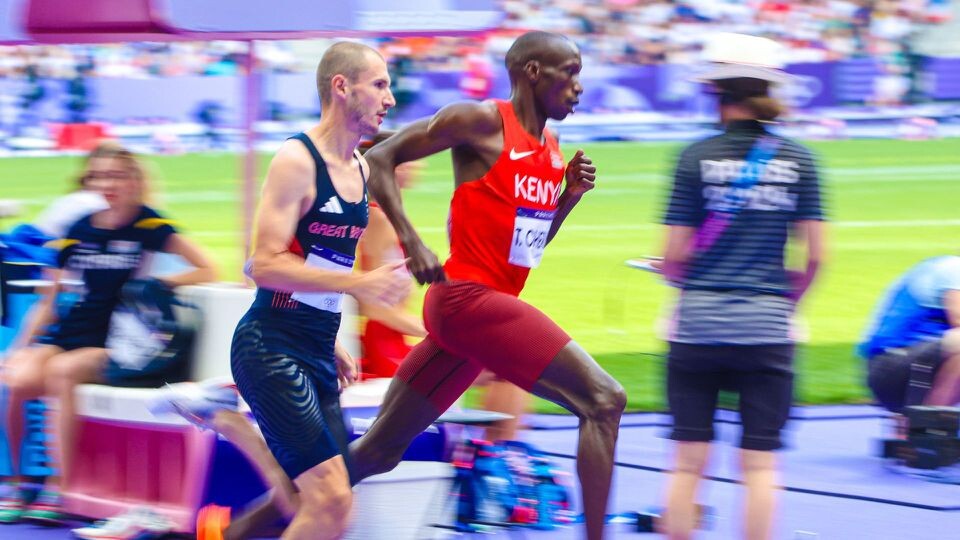
Competing in the second heat, Cheruiyot finished with a time of 3:35.39, placing fifth in a race that was won by Ethiopia's Ermias Girma, who posted a time of 3:35.21.
Despite not leading the pack,Cheruiyot's strategy was carefully planned to ensure his advancement without peaking too soon.
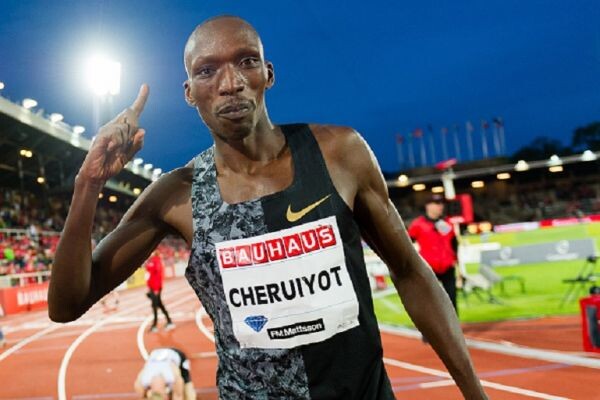
“Our heat was the fastest and it was also a tactical one compared with the other two. I didn’t want to kick early and also I ensured that I’m not far behind the leading pack. Everyone is keeping his cards close to his chest ahead of the semis and the final and that’s why the results are not surprising,” said Cheruiyot as per Citizen Digital.
Cheruiyot's strategic patience in the heats reflects his greater ambition to surpass his previous Olympic performance.
After his injury at the World Athletics Championships in Budapest, he spent nine months recovering and recalibrating his approach to racing.
"The injury was a big setback for me but everything is perfect and I believe this year we can go beyond our Tokyo performance," he shared, hinting at his aspirations for the upcoming rounds.
Other Kenyan athletes also showed strong performances in their respective heats.
Brian Komen and Reynold Cheruiyot, both advancing to the semifinals, demonstrated the depth of Kenyan talent in middle-distance running.
Komen clocked 3:36.31 to secure his position behind Josh Kerr of Great Britain, the reigning world champion who finished his heat in 3:35.83, marking a season's best.
Meanwhile, Reynold Cheruiyot, a former World U-20 champion, placed fourth in his heat with a time of 3:37.12, closely following Olympic champion Jakob Ingebrigtsen, who finished third.
The men's 1500m semifinals are eagerly anticipated, with high stakes for all competitors.
Scheduled for Sunday, August 4, at 8:10 pm Kenyan time, the event promises intense competition and strategic racing.
The final is set for Tuesday at 7:50 pm Kenyan time and it will be a pivotal moment for Cheruiyot and his teammates as they aim for Kenya's first men’s 1500m Olympic title since the 2008 Beijing Games.
(08/02/2024) ⚡AMPby Festus Chuma
Paris 2024 Olympic Games
For this historic event, the City of Light is thinking big! Visitors will be able to watch events at top sporting venues in Paris and the Paris region, as well as at emblematic monuments in the capital visited by several millions of tourists each year. The promise of exceptional moments to experience in an exceptional setting! A great way to...
more...Will super spikes cause records to fall in Paris?
Recent research confirms that high-tech shoes will give runners a significant boost.
Athletics events kick off Thursday at the Paris Olympics, and many, if not all, track competitors will be sporting super spikes—new generation, high-tech running spikes with carbon plates. Will these shoes power athletes to never-before-seen times? Recent research out of the University of Michigan suggests they will, and by a surprising amount.
A game-changing advantage
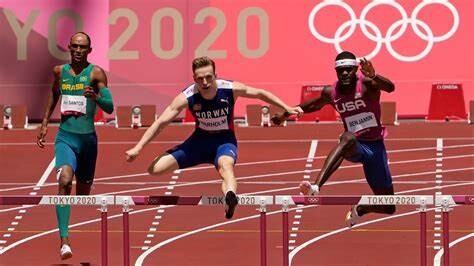
The 2021 Tokyo Olympics saw record performances on the track, leading fans and exercise physiologists alike to wonder about the impact of super spikes, which at the time were only accessible to a small group of athletes.
A recent study conducted by St. Edward’s University and the University of Michigan has shed light on the significant role these advanced footwear technologies play in boosting running economy—the efficiency with which the body uses oxygen, which is crucial for athletic performance.
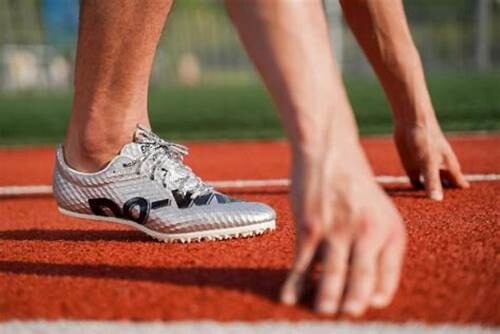
Researchers compared the running economy of athletes wearing super spikes to those in traditional track spikes. The results? A notable two per cent improvement in running economy with super spikes, potentially translating to a one-to-one-and-a-half per cent reduction in race times.
For example, for a runner who completes a 10,000m race in 30 minutes, this enhancement could mean shaving off about 25 seconds—an edge that could make an enormous difference in a close race. (The women’s world record for the outdoor 10,000m race, the longest of the track events, is 28:54.14, set by Kenya’s Beatrice Chebet, and the men’s record, set by Uganda’s Joshua Cheptegei, is 26:11.00.)
Levelling the playing field
Super spikes integrate advanced materials like special foams and carbon-fibre plates, making them lighter, softer and more responsive than traditional track spikes. While controversy surrounds their perceived advantage, with some feeling they offer an unfair edge, most (or all) competitors will be wearing them in Paris, suggesting a levelling of the playing field.
Similar technology has been used in running shoes since 2016, and the study also compared super spikes with new-generation running shoes. Despite weighing more, the high-tech shoes provided a comparable boost in running economy to the super spikes.
Are records destined to be broken in Paris?
With the athletics portion of the Paris Olympics Games kicking off Thursday with the men’s and women’s 20K race walk events, the increased availability and use of super spikes are expected to raise the bar for athletic performances. While not every Olympian had access to these technologies in 2020, their proliferation suggests a new track and field standard.
According to researchers, the greater availability of super spikes could lead to a deeper pool of faster times at the Paris Olympics, setting the stage for record-breaking performances. Tune in and be prepared to be on the the edge of your seat.
(08/02/2024) ⚡AMPby Keeley Milne
Paris 2024 Olympic Games
For this historic event, the City of Light is thinking big! Visitors will be able to watch events at top sporting venues in Paris and the Paris region, as well as at emblematic monuments in the capital visited by several millions of tourists each year. The promise of exceptional moments to experience in an exceptional setting! A great way to...
more...Kenya's hopes rest on Daniel Mateiko, Nicholas Kimeli & Bernard Kibet to win 10,000m gold since 1968
Daniel Mateiko, Nicholas Kimeli, and Bernard Kibet will have the pressure to deliver Kenya's gold medal since Naftali Temu's exploits at the 1968 Mexico City Olympics.
The trio of Daniel Mateiko, Nicholas Kimeli and Bernard Kibet are tasked with a daunting task to reclaim Kenya’s 10,000m title once they toe the line at the Stade de France on Friday, August 2.
The men’s race starts at 10:20 p.m. East African Time with the trio taking on one of the strongest fields in history with the main aim to reclaim Naftali Temu’s title won at the 1968 Mexico City Olympics.
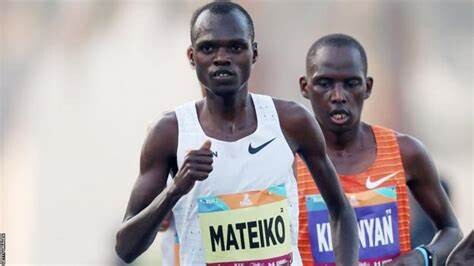
Kenyans have had a rough time of winning the gold medal following the emergence of Ethiopians and Ugandans who have dominated the race. Kenenisa Bekele, Mo Farah, Joshua Cheptegei have dominated the global stage with Bekele and Farah winning two titles each.
Selemon Barega won the title at the delayed 2020 Tokyo Olympic Games with Cheptegei and Jacob Kiplimo taking second and third place respectively.

Mateiko made headlines, winning the Prefontaine Classic to secure his slot to the Olympic Games with Kimeli and Kibet finishing second and third respectively. The trio has the much-needed confidence to impress following their training sessions that have been extensive so far.
Mateiko and Kimeli train with Eliud Kipchoge and they certainly draw inspiration from the two-time Olympic champion who will also be chasing his third Olympic title.
However, they will not have an easy task in title reclamation as they go up against very strong opponents. Defending champion Barega will be out to defend his Olympic gold with Cheptegei also in the mix.
Being the world record holder and a three-time world champion, Cheptegei will going for the only title missing in his decorated CV. The Ethiopians have fielded their best, with world leader Yomif Kejelcha and Berihu Aregawi also in the mix. Paris marks the first Olympics for Kejelcha who will have the pressure on him after the world lead.
Cheptegei has raced sparingly, making it difficult to gauge his shape. He will be competing for the first time since end of May when he finished ninth in the 5000m at the Diamond League Meeting in Oslo.
The American duo Grant Fisher and Nico Young have also been entered and they will also be chasing history for the US. Young will b debuting at the Olympics and the race will just be his third 10,000m race on a track.
On his part, Fisher has great experience racing on the global stage and after finishing fifth at the delayed 2020 Tokyo Olympics, he will be out to improve on that.
(08/02/2024) ⚡AMPby Abigael Wafula
Paris 2024 Olympic Games
For this historic event, the City of Light is thinking big! Visitors will be able to watch events at top sporting venues in Paris and the Paris region, as well as at emblematic monuments in the capital visited by several millions of tourists each year. The promise of exceptional moments to experience in an exceptional setting! A great way to...
more...The Dutch distance specialist has decided to drop the 1,500m to focus on the marathon
After the Dutch Olympic team announced that distance phenom Sifan Hassan was set to become the first athlete in history to attempt four Olympic athletics events, Hassan has decided to drop down to a triple. In 2023, she became the first athlete to medal in the 1,500m, 5,000m, and 10,000m at a single Games, bringing home a bronze (in the 1,500m) and two golds. This year, she will swap out the 1,500 for her newest discipline, the marathon.
Hassan’s third-place finish in the 1,500m at Tokyo 2020, behind Kenya’s Faith Kipyegon and Team GB’s Laura Muir, was the weakest of her three performances. Now, the deep field in the women’s 1,500m in Paris threatens her chances to bring home another medal in the event. Kipyegon (the defending world champion and world record holder) and Australia’s Jessica Hull (the newly crowned 2,000m world record holder), ran the world’s best times in the discipline earlier this month. Muir (the Olympic silver medallist) and Ethiopia’s Gudaf Tsegay (5,000m world record holder) are also medal contenders in the event, adding to the challenge.
Hassan only made her marathon debut in 2023, and followed up her win at the London Marathon by clocking a 2:13:44 (the second-fastest women’s marathon time in history) to win the 2023 Chicago Marathon. With world record holder Tigst Assefa of Ethiopia the sole competitor ranked ahead of her, Hassan stands a much better chance of bringing home a medal in the marathon. (Additionally, the women’s 1,500m final is scheduled for Saturday evening, Aug. 10, which is the night before the marathon–obviously not ideal timing for a strong marathon.)
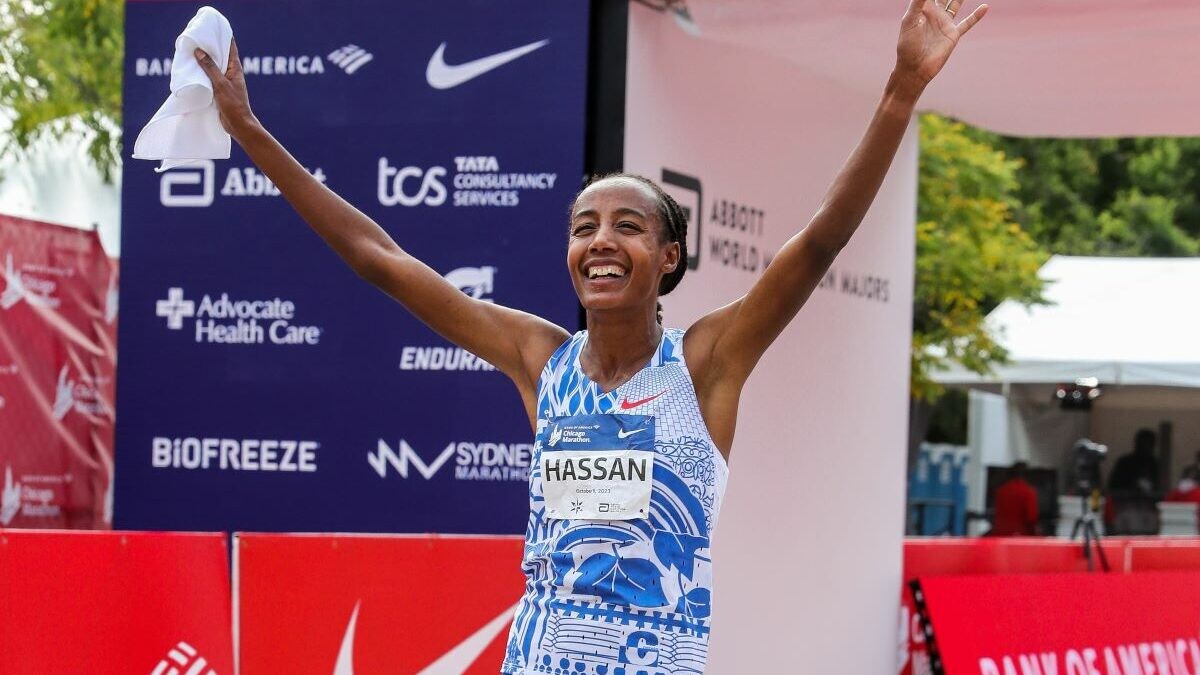
With three races removed from her Olympic itinerary, Hassan’s new schedule is somewhat less demanding, with her races spaced out by a couple of days each.
Aug. 2: 5,000m, Round 1 – 6:10 p.m. local timeAug. 5: 5,000m, Final – 9:10 p.m.Aug. 9: 10,000m Final – 8:55 p.m.Aug. 11: Marathon – 8:00 a.m.
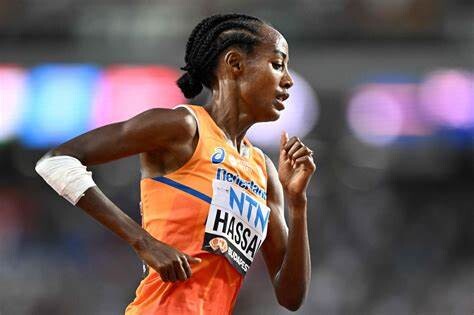
by Cameron Ormond
Paris 2024 Olympic Games
For this historic event, the City of Light is thinking big! Visitors will be able to watch events at top sporting venues in Paris and the Paris region, as well as at emblematic monuments in the capital visited by several millions of tourists each year. The promise of exceptional moments to experience in an exceptional setting! A great way to...
more...Olympic ski champion Eileen Gu to tackle Paris 2024 public marathon, adding another challenge to her athletics feats
In the year of a Summer Olympics, we don’t often hear from the stars of a Winter Games.
Yet People’s Republic of China freestyle ski champion Eileen Gu has other plans.
The two-time gold medallist has revealed that she’ll be taking part in the public marathon at Paris 2024 on Saturday, 10 August.

Gu captured the hearts of Chinese fans when she won gold in big air and halfpipe, as well as bronze in slopestyle at Beijing 2022, becoming the youngest gold medallist in freestyle skiing.
Eileen Gu is a model pro

Alongside freestyle skiing, Gu is known for her modelling career, which has seen her front the cover of several publications including Harper’s Bazaar, Elle, and Vogue.
Gu was also an Olympic torchbearer ahead of Paris 2024 as she helped carry the Olympic Torch through Loire Atlantique.
And soon, she’ll be able to add Olympic marathon runner to her long list of accomplishments.
“I have a little secret to share with you,” she told the media earlier this week as she watched Chinese duo Quan Hongchan and Chen Yuxi take gold in the women’s synchronised 10m platform event.
“I will be running a marathon in Paris. It is part of the Olympics marathon, but for the public. It will be my first marathon.”
The three-time Olympic medallist, who switched from representing the USA to China in 2019, went on to reveal that she has only had around three weeks of training so far compared to the recommended 16 weeks for a marathon.
Following in the footsteps of Olympic athletes
For the first time ever, a public marathon, otherwise known as the Mass Participation Marathon, will follow the same route as the official Paris 2024 Olympic marathon, allowing members of the public to push their limits and follow in the footsteps of Olympic athletes.
With 20,024 people set to take part, the marathon will begin at the Hôtel de Ville at 9 p.m. and finish on the Esplanade des Invalides, passing through Paris, Boulogne-Billancourt, Sèvres, Ville d’Avray, Versailles, Viroflay, Chaville, Meudon and Issy-les-Moulineaux.
(08/01/2024) ⚡AMPby Eleanor Lee
Paris 2024 Olympic Games
For this historic event, the City of Light is thinking big! Visitors will be able to watch events at top sporting venues in Paris and the Paris region, as well as at emblematic monuments in the capital visited by several millions of tourists each year. The promise of exceptional moments to experience in an exceptional setting! A great way to...
more...Olympic champion Donovan Bailey spills his Paris 2024 predictions
The Canadian men's 100m record holder is a huge Olympic fan
Like most Canadian track and field fans, 1996 Olympic champion and former 100m world record holder Donovan Bailey is eagerly awaiting the start of athletics at the Paris Olympics (the sprint events begin Friday). With a deep roster of Canadian athletes making their Olympic debuts or returning for another Games, Bailey has high hopes for breakthrough performances and trips to the podium, and he shared his top picks for the sprint events with us.
The Canadian 100m record holder has bumped watching the Olympics to the very top of his to-do list. Since sprinting runs in his blood, it’s no surprise he’s excited to watch the Canadian men’s and women’s 100m and 4x100m relay performances; he also looks forward to cheering on 2023 world champion Marco Arop as he aims to upgrade his 800m semi-final finish at Tokyo 2020 with a trip to the podium in Paris.
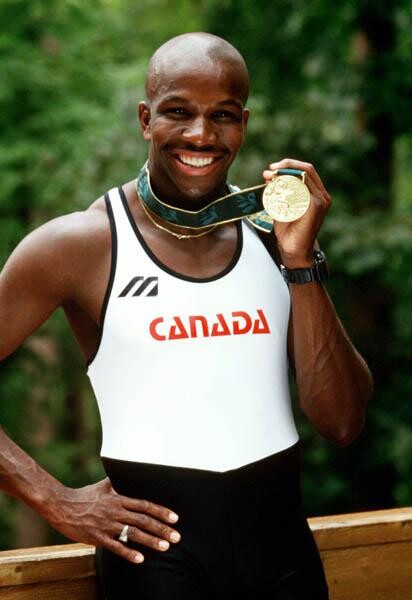
Men’s 100m predictions
The 100m prodigy isn’t certain where he should place his bets for who will take gold in the men’s 100m. He believes the two Jamaicans, Kishane Thompson and Oblique Seville, should be favored, along with the reigning world champion, Noah Lyles. But Bailey suggests not overlooking Team USA’s Fred Kerley and the three Africans (Letsile Tebogo, Akani Simbine and Fernidand Omanyala).
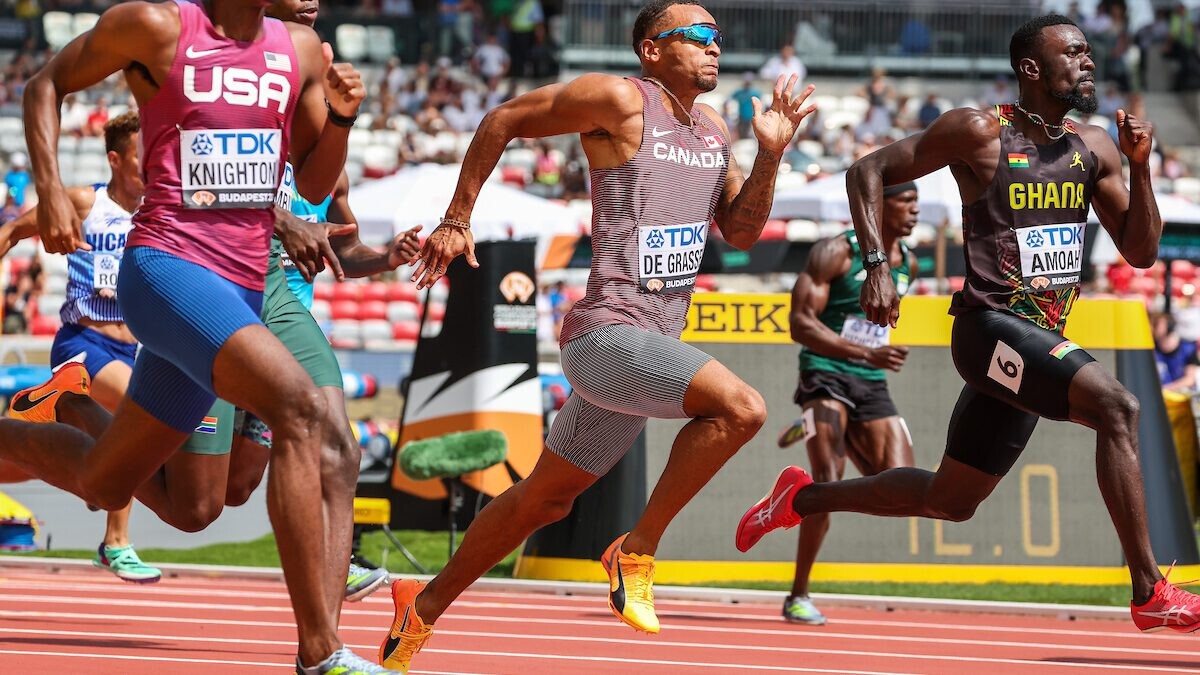
“The match-up is going to be fierce,” Bailey says. Of course, we can expect him to be cheering the loudest for Canada’s Andre De Grasse, Duan Asemota and Aaron Brown.
Women’s 100m favorites
On the women’s side, he agrees that Sha’Carri Richardson is the obvious favorite, on paper. “My sentimental favorite would be Shelly-Ann Fraser-Pryce,” Bailey says. “She’s one of the greatest female sprinters, and one of the greatest ambassadors for our sport. It’s her last Olympics, so it would be great to see her win.”
Bailey expressed the most excitement for Quebec’s Audrey Leduc, even though she will likely have to run two personal bests to get through the 100m rounds. He believes the 25-year-old is still untested, and will face less pressure in Paris than she did at the Canadian Olympic Trials in June.
“She made running fast look so effortless.” Bailey says. “I think she’ll break the Canadian record, and if she puts herself in a good situation, maybe she’ll make the final and shock a lot of people. I think she’s going to do amazing.”
(08/01/2024) ⚡AMPby Cameron Ormond
Paris 2024 Olympic Games
For this historic event, the City of Light is thinking big! Visitors will be able to watch events at top sporting venues in Paris and the Paris region, as well as at emblematic monuments in the capital visited by several millions of tourists each year. The promise of exceptional moments to experience in an exceptional setting! A great way to...
more...Jepkesho favorite to clinch Sunday's Gold Coast Marathon title
Seoul Marathon's second runner-up Visiline Jepkesho will start as the favorite in the elite women’s race on Sunday during the Gold Coast Marathon on the Eastern Coast of Australia.
Jepkesho is competing in her second marathon this year after finishing third in South Korea with a time of 2:22:52 on March 17.
The 34-year-old also boasts victories from the 2018 Rotterdam Marathon, where she clocked 2:23:47 and the 2016 Paris Marathon (2:25:53).

She also placed third in the 2015 edition of the Paris Marathon clocking 2:24:44 and placed second at the 2017 Istanbul Marathon (2:22:40).
Other top performances include the 2019 Nagoya women’s Marathon (2:22:58) and the 2017 Lille Half Marathon (1:08:12).
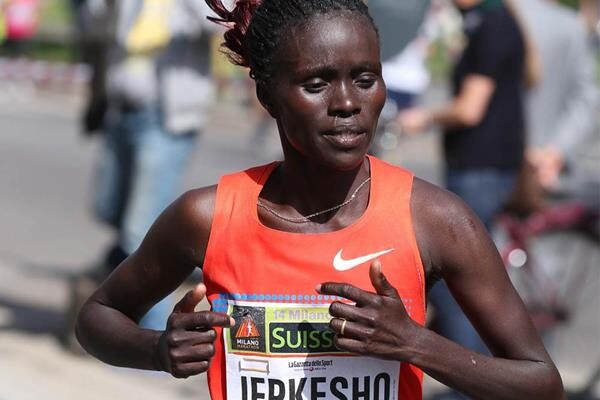
The seasoned long-distance runner will face stiff competition from Japan’s Rie Kawauchi and Misato Horie.
Kawauchi boasts titles from the Nagano Marathon (2:33:16) and last year’s Tokushima Marathon (2:33:50).
Horie is the 2016 Gold Coast champion, where she claimed the title in a time of 2:26:40. She also holds a title from the 2022 Osaka Marathon (2:32:10).
Jepkesho will be joined by compatriot Irene Jerobon, the Castellon Marathon runner-up (2:30:51).
She is also the Alpes-Maritimes Nice-Cannes Marathon champion with a time of 2:41:18. Milly Clark, the 2021 Melbourne Marathon champion, will be seeking to make a mark for the host nation.
Clark’s achievements include winning the 2021 Launceston Half Marathon (1:11:09) and securing silver at the 2019 Oceania Marathon (2:28:08) and 2017 Gold Coast Half Marathon (1:11:15).
The men’s field will be spearheaded by 2015 Praha Marathon Champion Felix Kandie.
Organizers termed the men’s race as the strongest in the event’s history with 12 athletes having run sub 2:10 times.
“ Twelve male athletes have sub 2:10 performances. This will be the strongest field to ever jump to the starting gun in the 44-year history of the ASICS Gold Coast Marathon,” the statement from the organizers read.
Kandie is a silver medalist in the 2017 Seoul Marathon (2:06:03) as well as the 2016 edition of the Praha Marathon (2:08:14).
He is a bronze medalist at the 2015 Valencia Marathon (2:07:07) and the 2018 Toronto Waterfront Marathon (2:08:30).
Kandie will be joined by fellow Kenyans Timothy Kattam, the 2023 Milano Marathon silver medalist (2:07:53), Geoffrey Birgen and Kenneth Omulo.
Japan’s Yuki Kawauchi, the 2016 Gold Coast runner-up (2:09:01), will provide formidable competition along with Uganda’s Kibet Soyekwo, the 2013 Dronten Half Marathon champion (1:03:45) and Ethiopia’s Belay Tilahun.
(08/01/2024) ⚡AMPby Teddy Mulei
MEA ANTRIM COAST HALF MARATHON
The MEA Antrim Coast Half Marathon 2022 has been approved by World Athletics as an Elite Event. The World Athletics certified course takes in some of the most stunning scenery in Europe, combined with some famous landmarks along the route. With it's flat and fast course, the race is one of the fastest half marathons in the world. Starting...
more...Is mustard the next great fuel for runners?
Do those little yellow packets really help with muscle cramps and energy, or is it just hype?
While I was volunteering at the aid station of a recent local race, several runners came in requesting an unexpected (to me) fuel source—packets of mustard. The condiment more commonly used to spice up your hot dogs and bologna sandwiches is being repurposed by runners, and some athletes swear by it, claiming that mustard can help stave off cramps and provide a quick energy boost. But is there any science to back up these claims? Let’s dive into the evidence.
The what and why of mustard

In 2022, a viral video featured former Canadian hockey player Mark Letestu sucking down a mustard packet on the bench, and it’s a common go-to for athletes in obstacle course races. It’s not the only popular condiment, either—in 2023, Heinz unveiled their Run On Heinz campaign, guiding runners to locations where they could snag free Heinz ketchup packets. Made from mustard seeds mixed with liquid (often vinegar, wine, or water), salt, spices (such as turmeric, garlic and paprika) and herbs, this condiment packs a tasty punch.
Runners and other athletes turn to mustard for its potential to combat muscle cramps. The theory suggests that the acetic acid (a.k.a. vinegar) in mustard stimulates nerve receptors in the mouth, esophagus and stomach, signalling the brain to stop cramping. (This is the same ingredient in pickle juice, another popular anti-cramping remedy.) And mustard’s turmeric content, known for its anti-inflammatory properties, might help ease muscle soreness after a run.

A negligible source of…well, anything
The jury is still out on the effectiveness of those tiny yellow packets. Scientists debate the exact cause of muscle cramps, and most evidence supporting mustard is anecdotal. A 2022 study found that athletes consuming 30 packets of mustard post-exercise experienced no change in symptoms, even 60 minutes after eating it.
And while mustard can add a zesty kick to your meals, it’s not going to fuel a kick at the end of your race. With only three to five calories per package, the energy content is too low to power your runs, and you probably won’t see it at an aid station anytime soon.
The verdict
Hey, the hype might still be on to something—believing in a boost can actually give you one, even if it’s just mentally. It’s important to tune in to your unique caloric and hydration needs before, during and after your runs. And if mustard is your secret sauce on top, go ahead and squeeze it on with gusto.
(08/01/2024) ⚡AMPby Keeley Milne
"I am one of the favorites," claims Marileidy Paulino ahead of 400m
The Dominican sprinter Marileidy Paulino arrives at the Olympic Games as one of the leading contenders for the gold medal in the 400 meters. The 27-year-old athlete, who has already proven her worth with a notable career, also dreams of breaking the world record.
Paulino will make her debut on Monday, 5 August, in the first heat of the grand Parisian event. For now, her success stands her in good stead, having won two silver medals at Tokyo 2020: first in the 400m and then in the mixed 4x400m relay.
This achievement made her the first Dominican woman to secure a medal in athletics for her country.Her path to victory continued a year later at the World Championships held in Eugene, where she claimed gold in the mixed category after surpassing her idol, the American legend Allyson Felix, in the relay.

At the same tournament, she also earned a silver medal in the individual event, an accomplishment she surpassed by winning the gold medal at the 2023 World Championships held in Budapest.
In an interview with AFP, Paulino admitted that her experience in Tokyo made her more widely known: "The Marileidy who arrived in Tokyo wasn’t very well known. Now many people know me.

Winning a world title puts me in the spotlight among other athletes; I am one of the favourites."Paulino, who has a personal best of 48.76 seconds, feels in excellent shape for these Olympic Games. "I have prepared very well. Physically and mentally, I am more than ready. I just have to wait for the day," said the athlete.
Her goal is to break the 48-second barrier and win the Olympic gold. It is no surprise that Paulino is regarded as the best in the world, as she currently ranks first in the women’s 400m on the World Athletics ranking with 1479 points.
(07/31/2024) ⚡AMPby Javier Carro
Paris 2024 Olympic Games
For this historic event, the City of Light is thinking big! Visitors will be able to watch events at top sporting venues in Paris and the Paris region, as well as at emblematic monuments in the capital visited by several millions of tourists each year. The promise of exceptional moments to experience in an exceptional setting! A great way to...
more...50 laps and then a marathon: Sifan Hassan chases the ‘impossible’ dream at Paris Olympics
The Olympics is a time to marvel at the incredible but the sheer size of the opportunity should ensure an element of caution among athletes.
Not so for Sifan Hassan, the Dutch middle and long distance runner, after she announced her bid to pull off a historic treble at the Paris Olympics when she will compete in the 5,000m, 10,000m and marathon events.
The Olympic champion in Tokyo over 5,000m and 10,000m, Hassan had entered the 1,500m, too, before dropping that event on Wednesday.
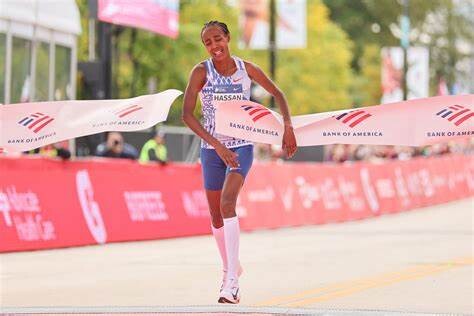
Hassan provoked excitement in the sport three years ago when she attempted an exhausting Tokyo treble.
She would add bronze to her two golds in Tokyo when she rallied in the 1,500m heats after falling over, before settling for bronze in the final after a fierce battle with Faith Kipyegon and Laura Muir.
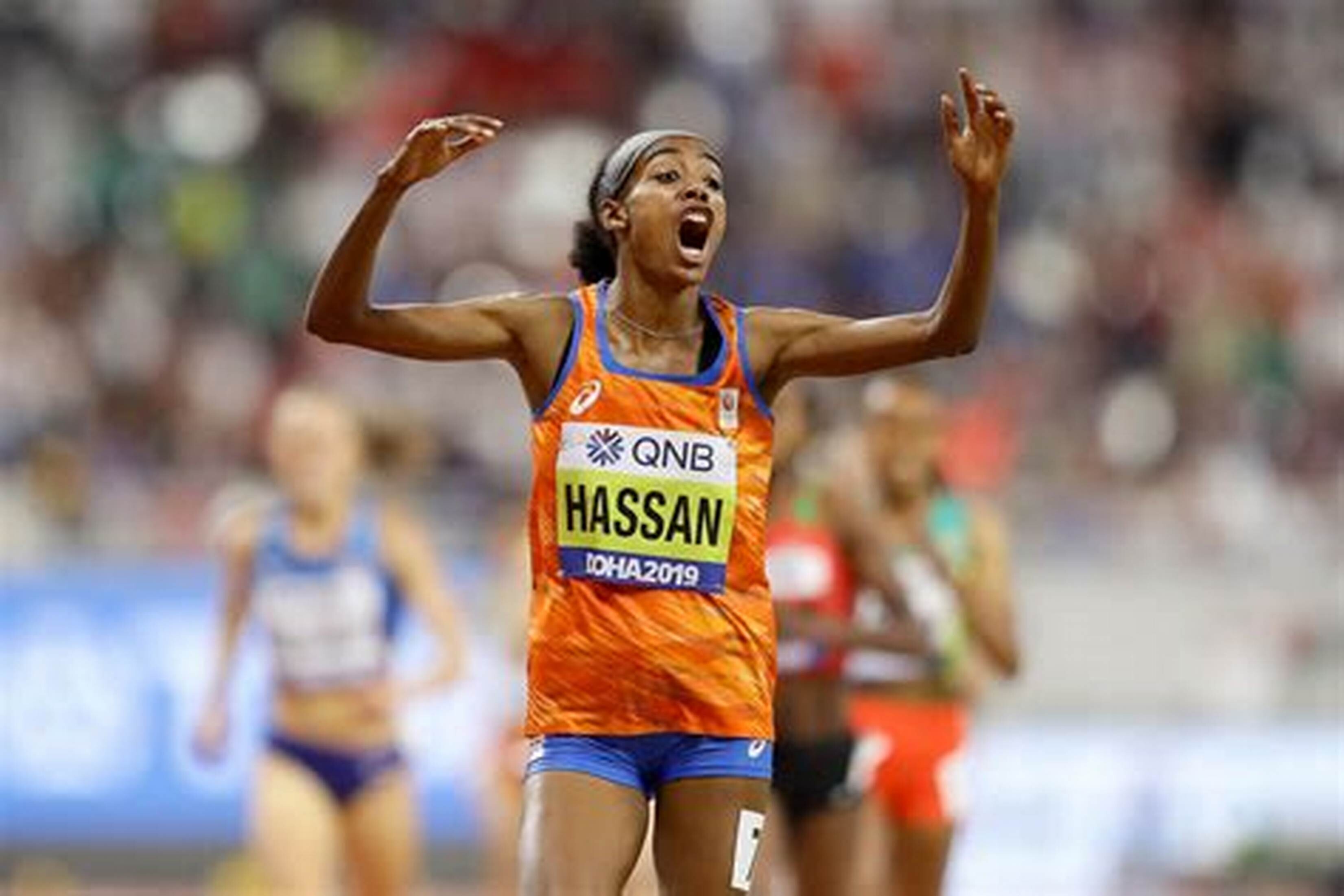
That bronze, while adding a dash of disappointment in the Tokyo rush for three golds, was a gift to the sport in hindsight. It delivered a shove, compelling Hassan to roll the dice and taste 26.2 miles on the roads.
The marathon and the roads bring acclaim and fortunes rarely afforded on the track and the hope was that Hassan, with her formidable track speed, would graduate in time. Yet her transition was seamless: She made her debut in London last year, pulling off one of the most staggering comebacks.
Hunched over and stationary in the middle of the race at 19km, Hassan desperately stretched to rid her aching body of lactic acid. Not only did it vanish, but she found a spring to outkick Alemu Megertu and win by a mere four seconds in two hours, 18 mins and 33secs.
More was to come, with victory and the second-fastest women's marathon of all time (2:13.44) in Chicago, before a respectable fourth in Tokyo this year. It begs the question as to why Hassan would risk scuppering hopes of marathon gold by subjecting her legs to 20km (the 5,000m has two rounds) on the track. Notably, the marathon course will present a number of hills, which could see each race unfold into a tactical affair with the opportunity for a sprint finish.
Even with 4mins 4.08secs in the 1,500m this year, Hassan would revel in the opportunity to test Ethiopian world record holder Tigst Assefa (2:11:53) and Kenyan trio Peres Jepchirchir, Helen Obiri and Sharon Lokedi over a late dash.
But the 31-year-old, whose face can be seen across many of the metro stations in Paris for an eye-catching Nike campaign, insists the attempt is nothing more than intrigue. And for that. she should be praised, in a sport where so many play it safe.
“I’m a very curious person,” she remarked. “Is life all about a gold medal? I'm very curious to do many events. I think it's impossible. So I want to see if it is, so I have to try. In Tokyo, it was successful after the three events. I discovered myself, also.
“Curiosity, when I try new things, is actually what keeps me going in my career. My journey is more important, the other things come after. I love the journey as much as the challenge.
“Did I balance speed on the track with enough endurance in the marathon? Let’s find out together. It’s not easy to face the unknown but my curiosity has driven all my training towards this goal. I will try my best to succeed.”
Hassan starts her campaign in Paris in the 5,000m opening round on Friday and will return on Monday for the final, should she qualify.
The 10,000m final is set for 9 August, meaning less than 48 hours of rest before lining up for the marathon.
“For anyone else this would be insane!” American track legend Michael Johnson wrote on social media. “I don't believe there's ever been an athlete who enjoys racing more than Sifan Hassan.”
And her attempt has left many of her fellow athletes in awe, with 1,500m world champion Josh Kerr impressed by her versatility.
“I don't think I could do that on the women’s side... to do a triple like that, the training is so gruelling for the marathon,” said Kerr. “She’s so well rounded that being able to have enough speed in the rank to do track races, it’s two rounds in the five, she’ll be out there having fun. Very impressive.”
“It's good sometimes when I'm nervous ... I do better,” Hassan laughed. Her rivals will hope she is not.
(07/31/2024) ⚡AMPby Jack Rathborn
Paris 2024 Olympic Games
For this historic event, the City of Light is thinking big! Visitors will be able to watch events at top sporting venues in Paris and the Paris region, as well as at emblematic monuments in the capital visited by several millions of tourists each year. The promise of exceptional moments to experience in an exceptional setting! A great way to...
more...Runing on the beach may be more beneficial for your fitness than you thought
Running in sand is tougher than running on the road, and may leave you sore afterward. That doesn’t mean you should avoid it, though; if you ease into it, running on the beach can improve your strength and stability and make you a better runner. Here’s how and why you should run on the beach on your next vacation.
Why run on the beach?
Boost your mood
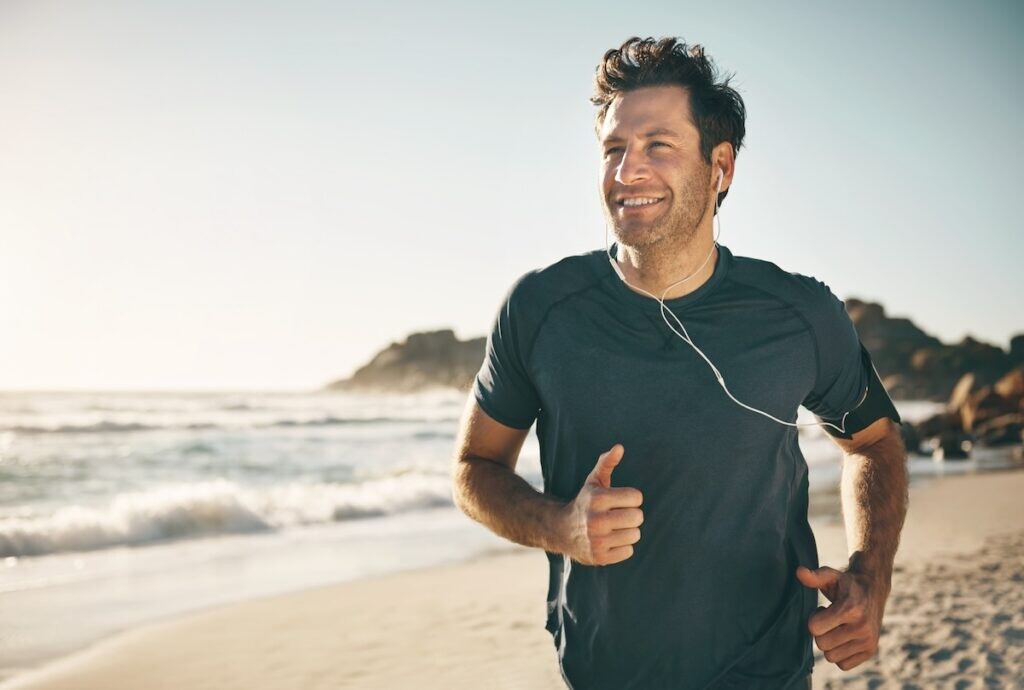
Being outside in the sun with fresh air and a change of scenery can motivate you and act as a pick-me-up.
Get a high-intensity workout
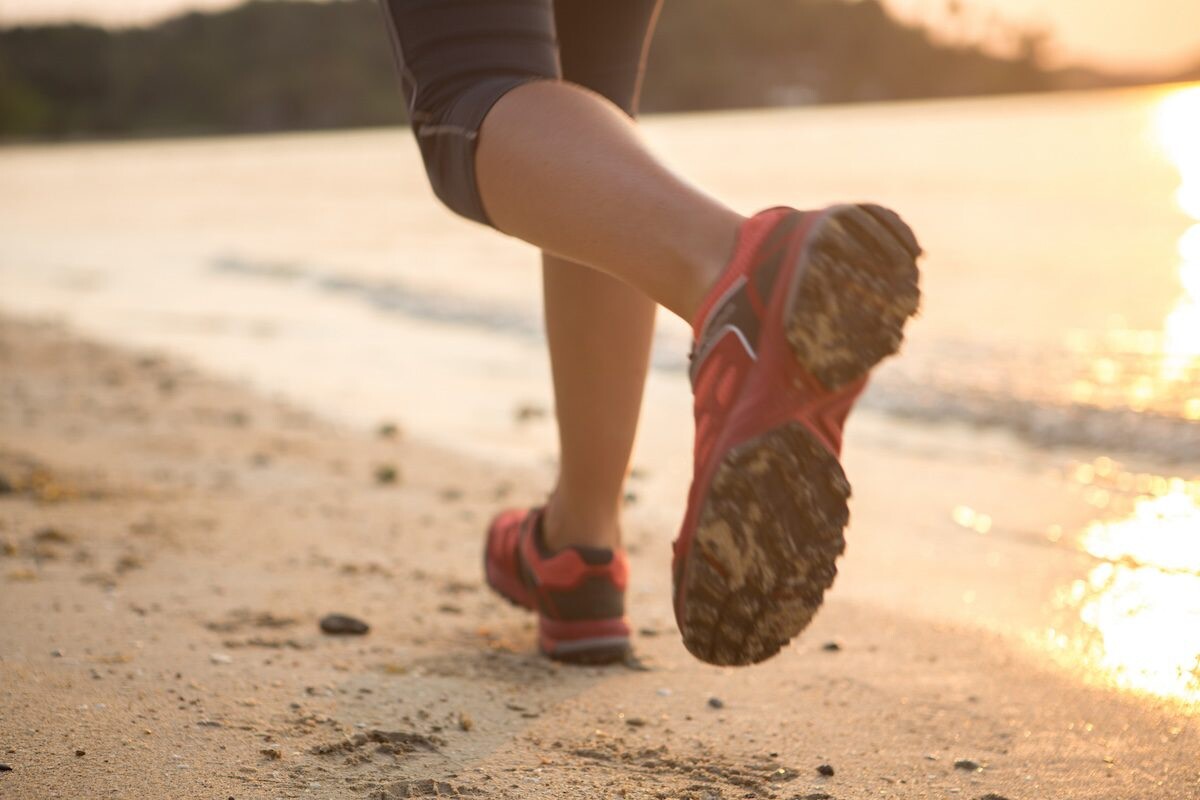
Moving on a sandy surface requires extra effort (one-and-a-half-times the energy required on a firm surface) and engages the smaller stabilizer muscles that you don’t typically use in road running. This strengthens the muscles in your legs and feet, which can then provide more support for your joints during your hard-surface runs.
Improves performance
After working harder to overcome the “give” of the sand, the strength, power and balance skills you gain will make running on pavement feel easy. It’s also lower-impact, compared to your regular runs, allowing you to improve your cardiovascular fitness and carry out the motion of running while minimizing stress on your joints.
Cool off by swimming
If you aren’t already convinced to try out a beach run, here’s the cherry on top: you get to run straight into the water to cool off. Swimming after a run on a hot day is so underrated!
How to ease into it
Start short and slow
For the first few runs, aim for about 15 minutes at an easy pace, and slowly increase speed and time with each run thereafter. You are more susceptible to Achilles strains or ankle sprains on the uneven, shifting surface, so listen to your body and stop if you feel that something is off.
Run in shoes and at low tide
Especially when starting out, running in shoes will protect the bottoms of your feet and ease the transition to the malleable surface. Waiting until the tide is low will also allow you to run close to the water’s edge on the hard, compact sand, to minimize the amount that the sand shifts and sinks under your feet. Switch directions after a while, to ensure that both sides adjust to the slanted beach surface.
Protect yourself
You probably won’t find any shade as you run along the water, so come prepared with a hat and sunscreen. You want to avoid sunburn, and being in direct sunlight will drain your energy more quickly than usual. Don’t forget to fuel well and drink electrolytes to speed up your recovery after your effective beach workout.
(07/31/2024) ⚡AMPTergat hopes Kenyans athletes will surpass Tokyo performance
The National Olympic Committee of Kenya (NOCK) president Paul Tergat has tipped Kenyan athletes to deliver when the 2024 Paris Olympic Games' track and field starts on Thursday.
Walk racer Samuel Gathimba will be first in line when he competes in the 20km walk at Trocadero Gardens, located at the foot of the Eiffel Tower.
It will be his second Olympics after debuting at Rio 2016, where he registered a 'Did Not Finish'.
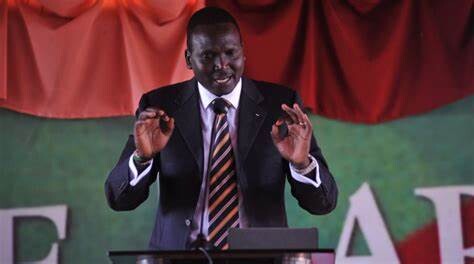
"That (athletics) is where we always eat (sic)," said Tergat, a five-time world cross-country champion.
"We are looking forward to an exceptional performance. We have told them 'no pressure'. Just go out there and give your best."
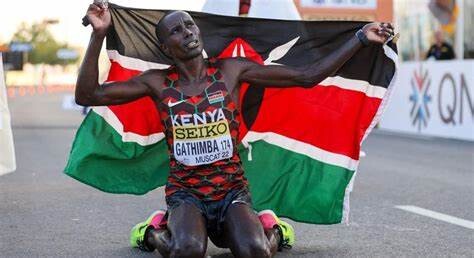
Nock supported the athletes in training, giving Tergat the belief they have what it takes to surpass the ten medals Kenya won at Tokyo 2020 (four gold, four silver and two bronze).
"They (athletes) know they have been supported adequately, which is key," said the two-time Olympic 10,000m silver medalist— Atalanta 1996 and Sydney 2000.
"They want to make history for themselves, their families and the country in general."
Meanwhile, Tergat has called on Kenyans to rally behind the team.
"Wherever you are — Europe, Africa or elsewhere—let's all support our sportspersons. They are our ambassadors and best role models," he said.
Meanwhile, Nock are keen on extending the diversification programme after fielding two women athletes in judo and fencing for the first time.
German-born Kenyan Alexandra Ndolo competed in the Epee Individual Table competition, where she bowed out in the preliminary rounds after losing 13-12 to Ukranian Kryvytska Olena at the Grand Palais-Blue Piste.
Judoka Zeddy Cherotich will make her debut against Portugal's Patricia Sampao in a - 78kg Round of 32 match at the Champ-de-Mars Arena.
(07/31/2024) ⚡AMPby Muigai Kirugum
Paris 2024 Olympic Games
For this historic event, the City of Light is thinking big! Visitors will be able to watch events at top sporting venues in Paris and the Paris region, as well as at emblematic monuments in the capital visited by several millions of tourists each year. The promise of exceptional moments to experience in an exceptional setting! A great way to...
more...Paris 2024: Five reasons why Kenya might struggle to reclaim Naftali Temu's Olympic glory in 10,000m
Kenya is facing significant challenges in their quest to win Olympic gold in the 10,000m, a feat last achieved in 1968.
On Friday night, Kenya will have their first chance to bag a medal in Athletics when three of its athletes step onto the purple track at the Stade de France.
The hopes of a nation will follow Daniel Mateiko, Nicholas Kipkorir, and Bernard Kibet as they attempt to end a 56-year Olympic gold drought in the men's 10,000 meters, a title last won by Naftali Temu in 1968.

Despite their ambitions, several hurdles could hinder their quest for gold.
1. Stiff Competition from neighboring countries
The field for the men's 10,000m in Paris is formidable featuring athletes who have dominated recent major championships.
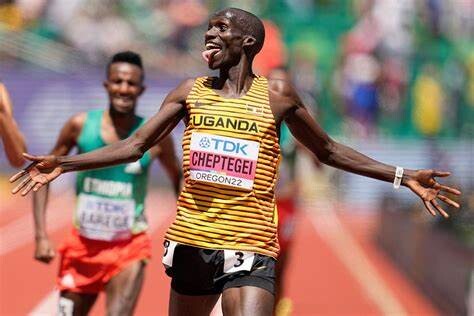
Reigning Olympic champion Selemon Barega of Ethiopia and world record holder Joshua Cheptegei from Uganda are prime contenders.
Both athletes have consistently shown that they can perform at their peak under the intense pressure of the Olympics and World Championships.
Cheptegei, in particular, has won the last three World finals in a row, showcasing his speed and strategic race management.
2. Limited success in recent years
While Kenya is renowned for its middle and long-distance runners, their success in the 10,000m at major international events has been limited in recent years.
The last Kenyan to win gold in this event at the World Championships was Charles Kamathi in 2001.
The more recent global stages have seen Kenyan athletes unable to break through the top ranks, often finishing outside the medal positions.
This historical context sets a precedent that may be tough to overcome, especially against more recently successful nations like Ethiopia and Uganda.
3. The pressure of a longstanding drought
The weight of a 56-year Olympic gold drought in the 10,000m can be a significant psychological burden.
The athletes are not just racing against their contemporaries but also against history.
The desire to end this long wait for gold can create immense pressure, which might affect their performance.
Handling this pressure while maintaining the focus and composure needed to win at the Olympic level is a daunting challenge that could hinder their prospects.
4. Tactical vulnerabilities
The dynamics of long-distance racing have evolved, with a significant emphasis on the tactical execution of the race.
Kenyan athletes have traditionally excelled in pace-driven races but have sometimes struggled in tactical scenarios where races are decided in the final laps.
The likes of Barega and Cheptegei have demonstrated exceptional ability to shift gears dramatically in the final stages of a race, a skill that has been pivotal in their victories.
Unless the Kenyan contenders have significantly improved their race tactics and finishing kicks, they may find themselves outmaneuvered in the crucial closing stages.
5. Training and preparation challenges
While the Kenyan team has trained intensively at high-altitude facilities, the transition to competition at lower altitudes can be challenging.
Adapting to the specific conditions of the track at Stade de France, coupled with the unpredictable Parisian weather, adds another layer of complexity to their preparation.
Effective adaptation is crucial and any missteps in acclimatization or strategy during training could impair their performance when it counts.
(07/31/2024) ⚡AMPby Festus Chuma
Paris 2024 Olympic Games
For this historic event, the City of Light is thinking big! Visitors will be able to watch events at top sporting venues in Paris and the Paris region, as well as at emblematic monuments in the capital visited by several millions of tourists each year. The promise of exceptional moments to experience in an exceptional setting! A great way to...
more...The wait is almost over. The men’s Olympic 1500 meters is almost upon us
The 1500 is always one of the crown jewels of the Olympic program, and the burgeoning rivalry between Olympic champion Jakob Ingebrigtsen of Norway and world champion Josh Kerr of Great Britain has sent anticipation levels through the roof in 2024. The last two global 1500-meter finals were unforgettable, and this year’s race is shaping up as an all-time classic after the two men have spent the last 12 months trading verbal barbs.
On the night of August 6 in the Stade de France, one of three things will happen:
1) Ingebrigtsen will win his second Olympic 1500-meter title at the age of 23, joining Seb Coe (1980, 1984) as the only man to repeat as champion.
2) Kerr will win gold, just as he did at last year’s World Championships, bringing Ingebrigtsen’s record in global 1500m finals to 0-4 since his triumph at the 2021 Olympics (with one being the 2022 World Indoors loss).
3) Someone else will win the title in one of the great Olympic upsets. Could it be 19-year-old phenom Niels Laros? Or perhaps two-time Olympic Trials champion Cole Hocker of the United States?
As long as the race isn’t marred by a fall — which has sadly become all too common in middle-distance races this year — it’s hard to envision a scenario in which this race is not totally awesome.
(07/30/2024) ⚡AMPby Jonathan Gault
Paris 2024 Olympic Games
For this historic event, the City of Light is thinking big! Visitors will be able to watch events at top sporting venues in Paris and the Paris region, as well as at emblematic monuments in the capital visited by several millions of tourists each year. The promise of exceptional moments to experience in an exceptional setting! A great way to...
more...From Ancient Olympia to Paris 2024
Modern Olympic history is full of victories and defeats but along the way since the revival of the Olympics in 1896, we encountered geopolitics, a shift in women’s rights and the state of global affairs.
From Athens to Rio, in the last 125 years, the games have crossed five continents, added and removed events, resisted boycotts and were only canceled three times due to two World Wars.
In 1894, Pierre de Coubertin launched his plan to revive the Olympic Games, and in 1896 the first Games of the modern era were held in Athens
Origins of the Olympic Games
The history of the Games goes back around 3,000 years, to the Peloponnese in Ancient Greece. Sports contests organized at Olympia back then took place every four years and acquired the name Olympic Games.
The first written evidence of the official Games dates from 776 BC, when the Greeks began measuring time in Olympiads, or the duration between each edition of the Olympic Games.
The four-year interval between the Ancient Games editions was named an “Olympiad” and was used for dating purposes at the time: time was counted in Olympiads rather than years. They were held between August 6 and September 19 during a religious festival honoring Zeus.
The games were named after their location at Olympia, a sacred site located near the western coast of the Peloponnese peninsula in southern Greece.
The games included Chariot races – one of the oldest of Greek sports dated back to the Mycenean Period (1100 B.C) – consisting of 12 laps around a hippodrome (horse track) and 12 times in the opposite direction, with the length varying depending on where the event was held.
There was also kele (riders competing in horseback), footraces (running), wrestling, pentathlon – a five-event combination of long jump, running and wrestling – boxing, and lastly the pankration, which was a combined contest of boxing, wrestling and kicking.
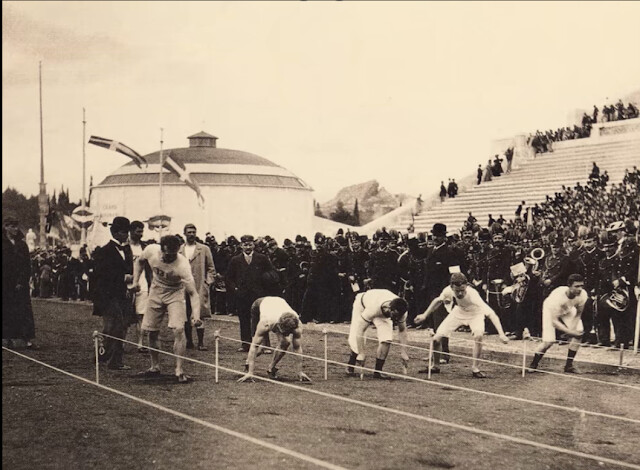
Structure and Traditions of the Ancient Olympics
All free male Greek citizens were entitled to participate in the ancient Olympic Games, regardless of their social status. Orsippos, a general from Megara; Polymnistor, a shepherd; Diagoras, a member of a royal family from Rhodes; Alexander I, son of Amyndas and King of Macedonia; and Democritus, a philosopher, were all participants in the Games.
Married women were not allowed to participate in, or to watch, the ancient Olympic Games. However, unmarried women could attend the competition, and the priestess of Demeter, goddess of fertility, was given a privileged position next to the Stadium altar.
One of the things that is commonly argued about is the question of whether there were amateur athletes in the ancient Olympic games. Ancient Olympic athletes were neither amateur nor professional. The word athlete is a Greek word that means “one who competes for a prize” and is related to two Greek words, athlos meaning contest and athlon meaning prize.
Greek athletes competed for prizes at athletic festivals. Some of the prizes were symbolic, for instance the wreath of olive leaves at Olympia, and others were material prizes worth money, for instance bronze tripods, or amphoras filled with olive oil. There were also cash awards of 500 drachmai (considered to be a fortune) or getting an early pension plan by receiving a free meal every day.
The Significance of Competition
For the ancient Greeks, whose fiercely independent city-states were often at war with one another, athletic contests became a unifying, peacemaking force. During the Olympic games, all hostilities were suspended. City-states sent their best athletes to compete
Decline of the Ancient Olympics
After thousands of years of the Greeks and Romans gathering at the Olympia to celebrate the festival in honor of Zeus, in 393 AD, the Christian emperor Theodosius I forbade the celebration of pagan cults, which included the Games.
Nonetheless, the popularity of sports contests and cultural festivities continued in many Greek-influenced provinces of the Roman empire as late as the 6th century AD.
Following Theodosius’ order, pagan cults began to disappear, and the site of Olympia was abandoned. Earthquakes destroyed the structures and their ruins disappeared gradually under the earth and sand.
Revival of the Olympic Spirit
There were no longer any visible traces of the site. Thanks to the writings of ancient historians, the memory of the Games and their place in the Greek world was not totally forgotten. The Games were known to have existed, but the knowledge of their exact location had been lost.
In 1776, the English traveler Richard Chandler discovered the site of ancient Olympia. The principal research digs were carried out a hundred years later by German archaeologists.
Pierre de Coubertin in re-establishing the Olympics
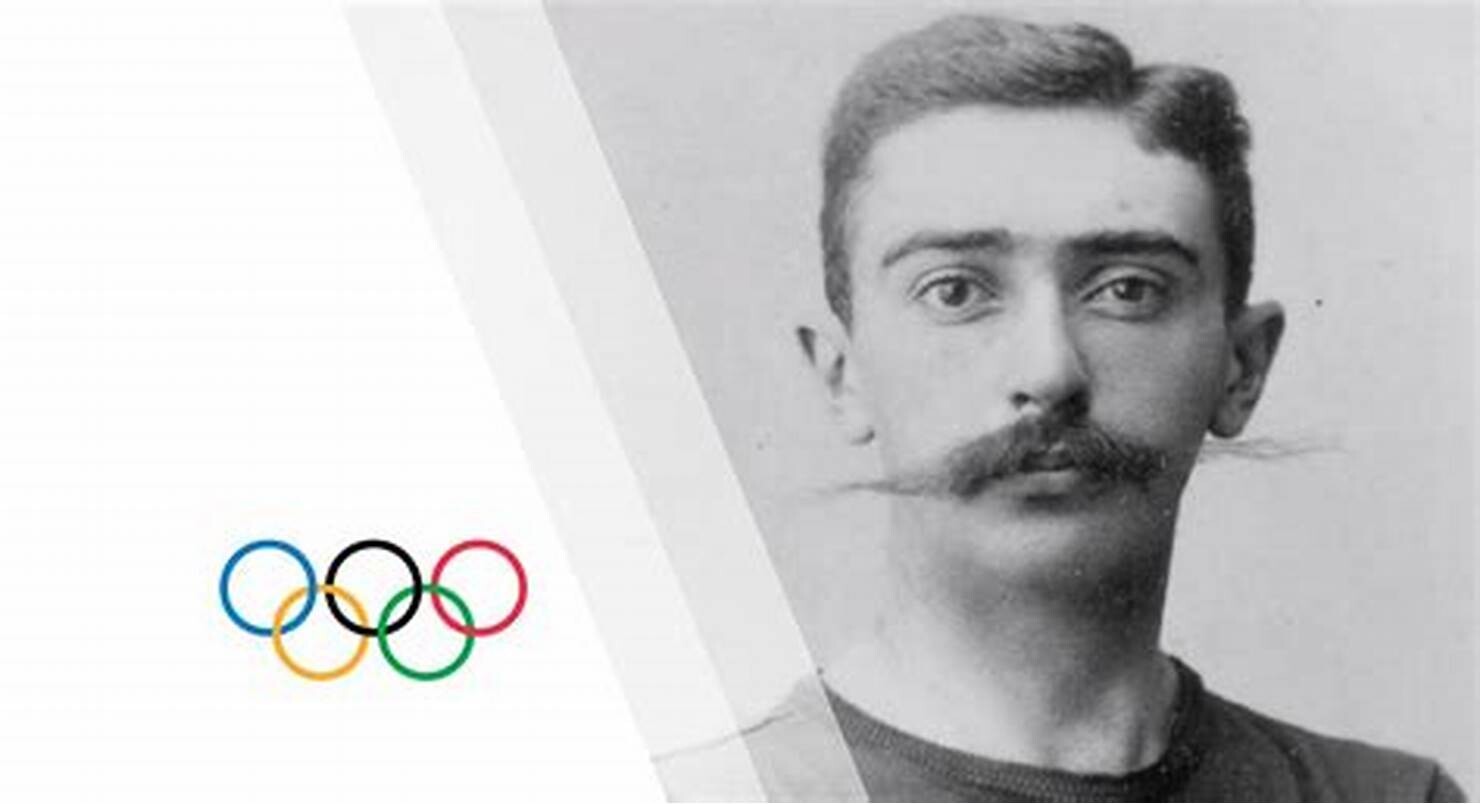
Pierre de Coubertin is widely recognized as the founder of the modern Olympic Games and the International Olympic Committee. Although artefacts suggested that ancient Olympia was prosperous, Coubertin was not put off and in 1894 invited athletes and sports people alike to attend a sports conference where he suggested the revival of the Olympics.
It was then decided on 23 June 1894 that a modern Olympic game should be held every four years and that each game should take place in a different country. It was unanimously agreed that the first modern Olympic games should be held in Olympia Greece.
Pierre de Coubertin was instrumental in establishing many of the Olympic traditions that continue to this day – the five rings, the Olympic flag, the oath and motto. He produced many writings about sport and education – one of his most famous quotes is “The important thing in the Olympic Games is not winning but taking part. Just as in life, the aim is not to conquer but to struggle well.”
The Modern Olympic Games
The International Olympic Committee (IOC) was founded on the initiative of Pierre de Coubertin on 23 June 1894, during the Olympic Congress.
At first Pierre de Coubertin planned to discuss amateur sport during the congress, however, by the time the invitations for the delegates to gather at the Sorbonne University in Paris were being sent, he changed both the programme and the title of the congress.
The event, which was eventually called the “Congress on the Revival of the Olympic Games”, served as an opportunity for de Coubertin to present his proposal to revive the Olympic Games. And thus, the International Olympic Committee was founded.
The 1894 Sorbonne congress was attended by 79 participants from 12 countries and its Opening ceremony featured musical pieces, songs, and poems.
First Modern Olympics (1896)
The first celebration of the modern Olympic Games took place in its ancient birthplace - Greece. The Games attracted athletes from 14 nations, with the largest delegations coming from Greece, Germany, France and Great Britain.
Due to its historical significance, the Greek hosts wanted to win the marathon above all else. Spyridon Louis set off from the city of Marathon and took the lead four kilometres from the finish line and, to the joy of the 100,000 spectators, won the race by more than seven minutes.
Hungarian swimmer Alfréd Hajós won the 100m and the 1200m events. For the longer race, the swimmers were transported by boat out to sea and left to swim the required distance back to shore. Hajós later confessed that his “will to live completely overcame [his] desire to win”.
On 6 April 1896, the American James Connolly won the triple jump to become the first Olympic champion in more than 1,500 years. He also finished second in the high jump and third in the long jump.
Evolution of the Games
The 1900 Summer Games in Paris took place from 14th May to 28th October and were held alongside the Exposition Universelle International which was staged to celebrate the achievements of the past century – the diesel engine (running on peanut oil), escalators, talking films and the telegraphone (the first magnetic audio recorder) were first displayed there.
Held as part of the Paris World’s Fair, the 1900 Games span five months, with 20 events and 24 countries represented. Because events are so spread out, many athletes and officials don't even realize they are competing in the Olympics.
But the 1900 Games introduce several new sports, including rugby, golf, cricket and croquet (the only year croquet is played), as well as equestrian events, archery and soccer. Swimming races take place in the Seine River and five sports—tennis, polo, soccer, rowing and tug of war—include athletes from differing nations playing on the same teams.
It’s also the first-time women participate, with 22 competing (along with 975 men). American Alvin Kraenzlein shines during the Paris Games when he takes gold in four track and field events.
Notable Olympic Events and Milestones
The Olympic flame, a symbol of peace and unity, was first introduced at the Berlin Games in 1936. The torch relay, which carries the flame from Olympia, Greece, to the host city, has become a cherished tradition. This relay not only symbolizes the connection between ancient and modern Games but also promotes the spirit of the Olympics across various nations
The concept of the Olympic Village was first realized during the 1924 Paris Games. This innovation provided a communal living space for athletes, enhancing the experience and fostering hospitality among competitors from around the world. The Village has since become a staple of the Olympic experience, allowing athletes to live and interact together during the Games
The Cold War era saw significant political tensions affecting the Olympics, leading to boycotts of the 1980 Moscow Games by the United States and the 1984 Los Angeles Games by the Soviet Union and its allies.
In response to various global challenges, including the COVID-19 pandemic, the Olympics have shown resilience by adapting their schedules and formats. The Tokyo 2020 Games were postponed to 2021, marking a significant moment in Olympic history as they navigated unprecedented circumstances while still aiming to uphold the Olympic spirit
A Symbol of Peace
As the world looks forward to future Olympic Games, including Paris 2024, we mustn’t forget that the Olympic Games have long served as a powerful symbol of peace, unity, and athletic excellence, transcending cultural and national boundaries. Their legacy is rooted in a philosophy that combines sport with education and cultural exchange, promoting values such as friendship, solidarity, and fair play.
(07/30/2024) ⚡AMP
by Juliana Alexandra
Paris 2024 Olympic Games
For this historic event, the City of Light is thinking big! Visitors will be able to watch events at top sporting venues in Paris and the Paris region, as well as at emblematic monuments in the capital visited by several millions of tourists each year. The promise of exceptional moments to experience in an exceptional setting! A great way to...
more...Retired British track icon predicts the medal Eliud Kipchoge might win at Paris Olympic Games
The retired British star noted that Kipchoge might win a medal at the Olympics but it will definitely not be a gold medal.
Retired British long-distance Mo Farah has predicted the medal Eliud Kipchoge will win at the Paris Olympic Games, and it’s not a gold medal.
The four-time Olympic champion disclosed that the quality of the field is strong, hence making it difficult for Kipchoge to win his third successive Olympic marathon title.
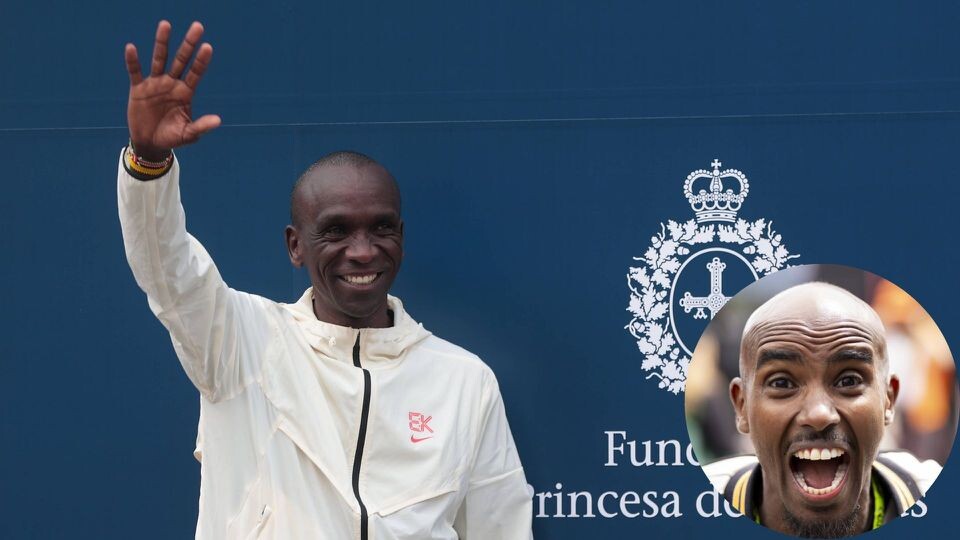
Kipchoge won the title at the 2016 Rio Olympic Games and defended his title at the delayed 2020 Tokyo Olympic Games. The five-time Berlin Marathon champion looks to make history in Paris and win his third successive marathon title.
Farah explained that there are many youngsters in the race, admitting that the race will be a battle between Kenyans and Ethiopians, with a winner coming from either of the two countries. He added that Kipchoge might win a medal, but was not sure of the medal it would be, either the silver and bronze medal.

“Eliud Kipchoge…I think the marathon is going to be tough, honestly, there is a lot of Kenyans and youngsters. He could get a medal, but I think it’s going to come from the Kenyans or Ethiopian new guy to win that race,” Farah said in an interview with Olympics.com.
Kipchoge will be joined by Tokyo Marathon champion Benson Kipruto and the reigning London Marathon champion Alexander Mutiso.
The Ethiopian contingent will be led by legendary marathoner Kenenisa Bekele, who will be racing his final Olympic Games.
Sisay Lemma had also been selected in the team but was forced to withdraw due to an injury and he was replaced by Tamirat Tola, the 2022 world champion. Deresa Geleta completes the Ethiopian team.
The Kenyan and Ethiopian rivalry will once again be witnessed on the Olympic stage with the Ethiopians looking to reclaim their title after Kenya’s reign in two consecutive Olympic Games.
(07/30/2024) ⚡AMPby Sky Sports
Paris 2024 Olympic Games
For this historic event, the City of Light is thinking big! Visitors will be able to watch events at top sporting venues in Paris and the Paris region, as well as at emblematic monuments in the capital visited by several millions of tourists each year. The promise of exceptional moments to experience in an exceptional setting! A great way to...
more...Olympics 2024: Men's triathlon postponed due to Seine water quality and may yet change to duathlon
Swimming in the triathlon at the Olympic Games is supposed to take place in the iconic River Seine, but the event has been plagued by concerns over the water quality, especially now after a rain swept start to Paris 2024; organisers have had to postpone the men's event to Wednesday.
The men's triathlon at the Olympic Games in Paris has been postponed due to water-quality levels in the River Seine.
The event had been set to take place on Tuesday morning, with the women's event to be held 24 hours later.

The decision has now been taken to move the men's race to Wednesday as well, but if it is not possible to use the Seine then the triathlons could be postponed further still, or become duathlons and lose the swimming element.
As it stands the men's event has been rescheduled to take place at 10.45am local time (9.45am BST) on Wednesday, after the women's race which is scheduled for 8am (7am BST).

A statement from World Triathlon said Friday remains a contingency day if one or both of the races are unable to go ahead.
"Tests carried out in the Seine today revealed water quality did not provide sufficient guarantees to allow the event to be held," World Triathlon said in a statement released on Tuesday morning.
"Despite the improvement in the water quality levels, the readings at some points of the swim course are still above the acceptable limits."
Training in the river had been cancelled over the weekend and again on Monday due to unsafe levels of pollution caused by the heavy rain that blighted the Olympic opening ceremony on Friday and initial outdoor events on Saturday.
Paris has a combined sewer system, meaning both wastewater and stormwater flow through the same pipes.
When there are periods of heavy rainfall, the pipes can reach capacity and this wastewater - including sewage - overflows into the River Seine instead of being sent to a treatment plant.
Open water swimming and triathlon events were due to take place in the Seine, more than 100 years after swimming in the river was banned in 1923.
Earlier this month, France's sports minister Amelie Oudea-Castera swam in the Seine alongside Paralympic triathlon champion Alexis Hanquinquant, who won gold in the men's PTS4 event at Tokyo 2020, to show people it was clean enough for the Olympic swimming events.
Paris mayor Anne Hidalgo also took a dip, joined by Paris 2024 chief Tony Estanguet, but there was no sign of President Emmanuel Macron who had suggested he would also take the plunge.
Hildago had originally planned to swim in the river in June but was forced to delay after tests indicated the presence of faecal matter 10 times higher than authorised limits.
Paris officials have spent €1.4bn in a bid to improve water quality ahead of the Games.
GB has strong medal contenders in the event. Britain's Alex Yee is one of the favourites for gold in the men's race while Beth Potter is the reigning women's world champion.
What happens if the swim can't go ahead?
Games organisers remain "hopeful" both triathlons can take place on Wednesday, though the event could be pushed further back to Friday or even changed outright to a duathlon (with the run and the cycle, but no swim) if it is still not possible to use the Seine.
Officials blamed extreme weather events for the issues. "We had meteorological events that were beyond our control," Aurelie Merle, executive director of sport competitions Paris 2024, said on Tuesday. "The whole world has seen as witness that it rained heavily in Paris [during the opening ceremony and on the first day of the Games]. The equivalent to July's rainfall fell in just 36 hours.
"The amount of water that has fallen on Friday and Saturday has been humungous so it's taken time for the river to get back to normal.
"We are quite hopeful because as you can see the weather conditions have been quite good.
"We are hopeful that we can organise these two competition events tomorrow."
E.coli in the river is of particular concern, and there is still a chance that further storms and rainfall could have a further impact on the water quality.
But Marisol Casado, the president of World Triathlon, said on Tuesday: "At this point we are quite confident that that will happen tomorrow.
"This is a part of adaptation to climate change we are facing. We are disappointed because we were not able to follow what was planned."
Losing the whole swim from the event is a drastic step but a distinct possibility. But Casado still considers it acceptable.
"I don't think this is unfair, it is just another situation of the competition," she said. "It's the same conditions for everyone."
IOC sport director Kit McConnell said: "It's not uncommon for changes to be made, particularly in outdoor sports.
"The conditions weren't right to put the athletes in the Seine today. There have been significant improvements regarding the Seine.
"We can't control the weather, the weather has had a significant impact."
How to follow the Olympics on Sky
Keep up to date with the action from the Paris 2024 Olympics across Sky Sports' digital platforms and Sky Sports News every day between now and Sunday August 11.
Alongside live news blogs and updates as records are broken and medals won on skysports.com and the Sky Sports app, Sky Sports News will also have dedicated reporters on the scene in Paris during the Games to gather the latest news both inside and outside the arenas in France as well as reaction to the big moments from medal winners, coaches, relatives and pundits.
(07/30/2024) ⚡AMPby Sky Sports
Paris 2024 Olympic Games
For this historic event, the City of Light is thinking big! Visitors will be able to watch events at top sporting venues in Paris and the Paris region, as well as at emblematic monuments in the capital visited by several millions of tourists each year. The promise of exceptional moments to experience in an exceptional setting! A great way to...
more...Evans Chebet's message to Team Kenya to Paris Olympic Games as he predicts men's marathon performance
Evans Chebet has wished Kenya's Olympic team to the Paris Olympics as he made a bold prediction concerning the men's marathon performance on the Olympic stage.
Former Valencia Marathon champion Evans Chebet has wished Team Kenya luck as they fly the country’s flag high at the Paris 2024 Olympic Games.
Chebet is confident that the strong marathon team selected has the ability of winning a gold medal for Kenya, thanks to their resilience and pursuit for success.
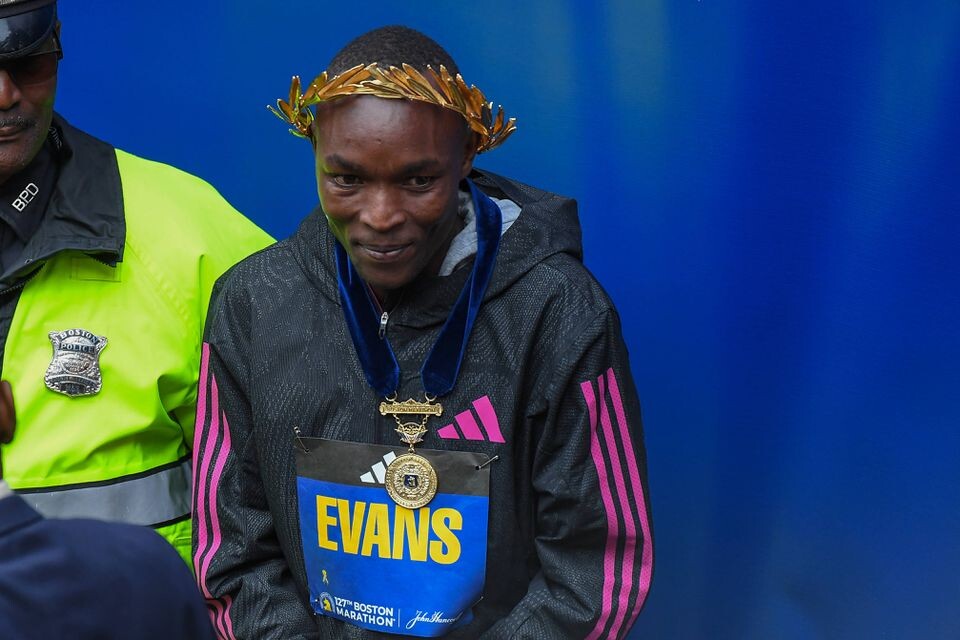
The two-time Boston Marathon champion noted that he has raced against Eliud Kipchoge, Benson Kipruto and Alexander Mutiso in different races and disclosed that they are strong athletes who can deliver a gold medal for Kenya.
“When the team was selected, I was unbothered and didn’t complain because I had an injury. I feel like Eliud, Benson, and Mutiso will do well since they are strong. I have raced with them and I know they are strong athletes,” Chebet told Daily Sport.
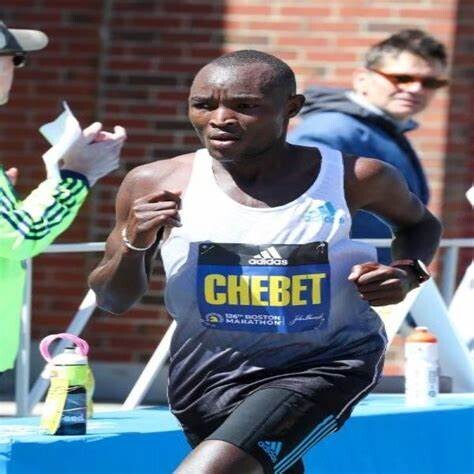
“I pray that they embrace teamwork and I wish them all the best. They should bring us gold and I believe they have the ability to do well,” he added.
The 2022 New York City Marathon champion added that he suffered an injury before going for last year’s New York City Marathon, forcing him to withdraw from the race and take a step back from training.
As Kenya’s team for the marathon was being selected, Chebet was not in the best shape to be considered hence the snub.
The Kenyan marathoner added that the selected team is strong and will motivate him to impress when he makes his return to the New York City Marathon, hoping to reclaim his Olympic title.
“I got a stress fracture and last year, I had to pull out of the New York City Marathon last year. I had to take care of it and going to Boston earlier this year, I had an injury but I was happy. I have started training and gone back to the camp. I’m getting ready to go and race in New York and I want to stay healthy,” Chebet said.
“People kept asking me why I was not selected in the Olympics but I feel like that team is strong and as I go to the New York City Marathon, I will be motivated to do better because I know the marathon team in Paris will perform well,” he added.
(07/30/2024) ⚡AMPby Abigael Wafula
Paris 2024 Olympic Games
For this historic event, the City of Light is thinking big! Visitors will be able to watch events at top sporting venues in Paris and the Paris region, as well as at emblematic monuments in the capital visited by several millions of tourists each year. The promise of exceptional moments to experience in an exceptional setting! A great way to...
more...Sprint to success with these tips from a pro
Four-time Olympic gold medalist Michael Johnson wants you to pick up the pace.
With the Paris Olympics well under way, running enthusiasts and athletes alike are looking for ways to elevate their game. Here to help is Michael Johnson, one of the most decorated sprinters of all time. As reported in Men’s Health, Johnson, a four-time Olympic gold medalist and eight-time world champion, offers his expert insights into running a fast 400m and preparing for an all-out sprint. His tips cater to the unique needs of every athlete, helping you tailor his advice to your own training.
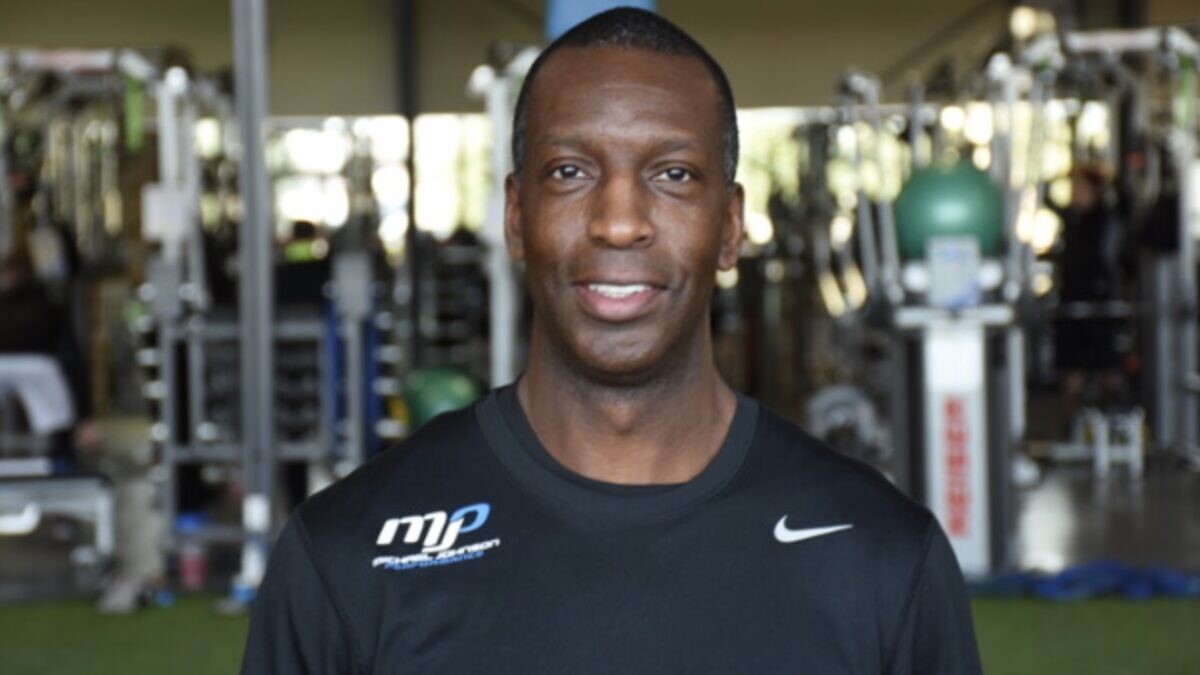
Short, fast training is for everyone
If you’re used to moderate-pace runs, incorporating sprints can be a game-changer. “The more you sprint and become accustomed to sprinting, your body becomes more powerful and stronger,” says Johnson. This power not only reduces the risk of injury in less strenuous runs but also improves your overall running technique, making you faster and more efficient.

Tackling the 400m dash
Ready to hit the track? Johnson emphasizes the importance of easing into your sprint training. “Keep the volume of your sprinting light to start, allowing your body to progressively adapt,” he advises. Consistency is key—incorporating sprint work into your routine regularly is crucial. “You’re at higher risk of injury if you’re not sprinting often enough,” says Johnson, adding that sprint training should make up around 10 percent of your weekly workouts initially.
Good form is key
In sprinting, form is everything. Johnson stresses the importance of symmetry and efficiency in your movements. “If you go into a sprint session with poor form, it’s catastrophic,” he warns. Ensuring that your arm swing, stride and overall body positioning are balanced and efficient can make a significant difference in your performance.
Work on sustained speed
“The primary thing you’re training for as a 400-meter sprinter is sustaining speed for the longest period that you possibly can,” explains Johnson. This involves practicing running at a pace you can maintain throughout the race, rather than going all-out from the start. Johnson suggests a practice workout that involves running four rounds of 300 meres at 70 to 80 per cent of your max speed, with one-minute rests between rounds. This type of training builds the stamina needed to handle the final push during a race.
Race day tips
On race day, conserve your energy wisely. “The critical component to the 400-meter run is understanding that it’s an exercise in managing energy and speed around the entire sprint,” says Johnson. Focus on your mental game, as the ability to make quick, real-time decisions is essential for a successful race. You’ll be well on your way to smashing your 400-meter goals and elevation your overall running game.
(07/29/2024) ⚡AMPby Keeley Milne
Paris 2024 Olympics: Peres Jepchirchir makes audacious verdict on Kenya's podium chances in the women's marathon
Peres Jepchirchir has rated Kenya's chances in the women's marathon at the Paris 2024 Olympics as she prepares to represent the country alongside compatriots Sharon Lokedi and Hellen Obiri.
Peres Jepchirchir is chasing history at the Paris Olympic Games, where she intends to be the first woman to defend her Olympic marathon title.
Jepchirchir has been sharpening her talons with title defense on her mind and she believes in her training and abilities to achieve the rare feat.
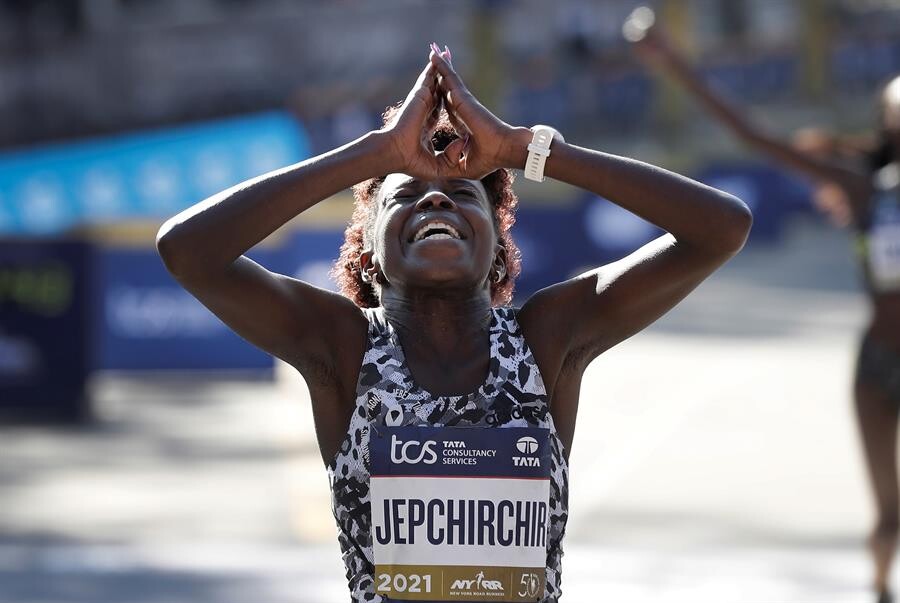
The newly-crowned London Marathon champion also admitted that the Kenyan team is strong and should be downplayed. She disclosed that all of them have run on tough courses, just like the one in Paris and have managed to claim top honors.
For instance, Hellen Obiri is a two-time Boston Marathon champion while Lokedi won the 2022 New York City Marathon and finished second at the 2024 Boston marathon champion. Meanwhile, Jepchirchir has also won the Boston and New York City Marathons and she believes they can all impress at the Olympic Games.
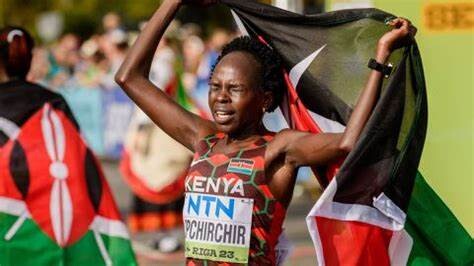
“The course is not easy but I thank God for the Kenyan team that comprises I, Hellen Obiri and Sharon Lokedi. I have run the Boston Marathon and New York City Marathon and won,” Jepchirchir told Africa News.
“Obiri has won the Boston Marathon twice and Sharon won New York and was second in Boston. I believe in them and myself because all of us have run on tough courses and this will not be the first,” she added.
The trio has been impressive this season, with Jepchirchir breaking the women-only world record that has since been ratified at the London Marathon.
Obiri and Lokedi were in action at the Boston Marathon, where the former claimed the win as the latter took second-place in the hotly-contested race.
They all head to the Paris Olympic Games with the hope of making a mark and leaving a legacy with Jepchirchir having all the weight on her shoulders to make history.
(07/29/2024) ⚡AMPby Abigael Wafula
Paris 2024 Olympic Games
For this historic event, the City of Light is thinking big! Visitors will be able to watch events at top sporting venues in Paris and the Paris region, as well as at emblematic monuments in the capital visited by several millions of tourists each year. The promise of exceptional moments to experience in an exceptional setting! A great way to...
more...Bix 7 Notebook: Samuelson, Keflezighi collect more Bix hardware
The four legendary runners who appeared at various Quad-City Times Bix 7 events this week all made it through the grand 50th-anniversary race just fine.
In fact, two of them came away with awards.
Joan Samuelson, who has won four Bix 7 women’s championships and 15 masters titles, was the winner of the women’s 65-69 age group and she did it in record time — 50 minutes, 47 seconds. She now holds the women’s course record in four age groups — 50-54, 55-59, 60-64 and 65-69.
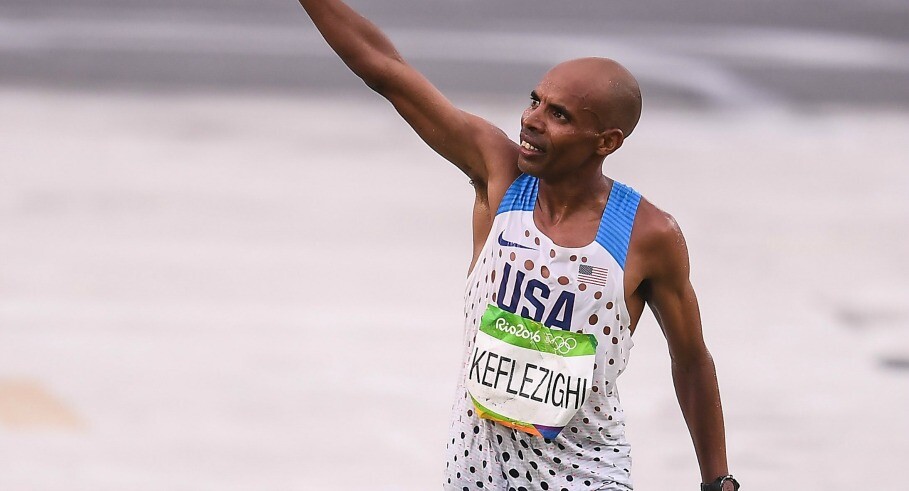
Meanwhile, two-time Bix 7 champion Meb Keflezighi added the men’s 45-49 age group championship to his resume on Saturday.
Keflezighi said he wasn’t really sure he was going to push himself in the race, but with the crowd cheering and urging him on, he couldn’t help himself. He covered the course in 41:37.
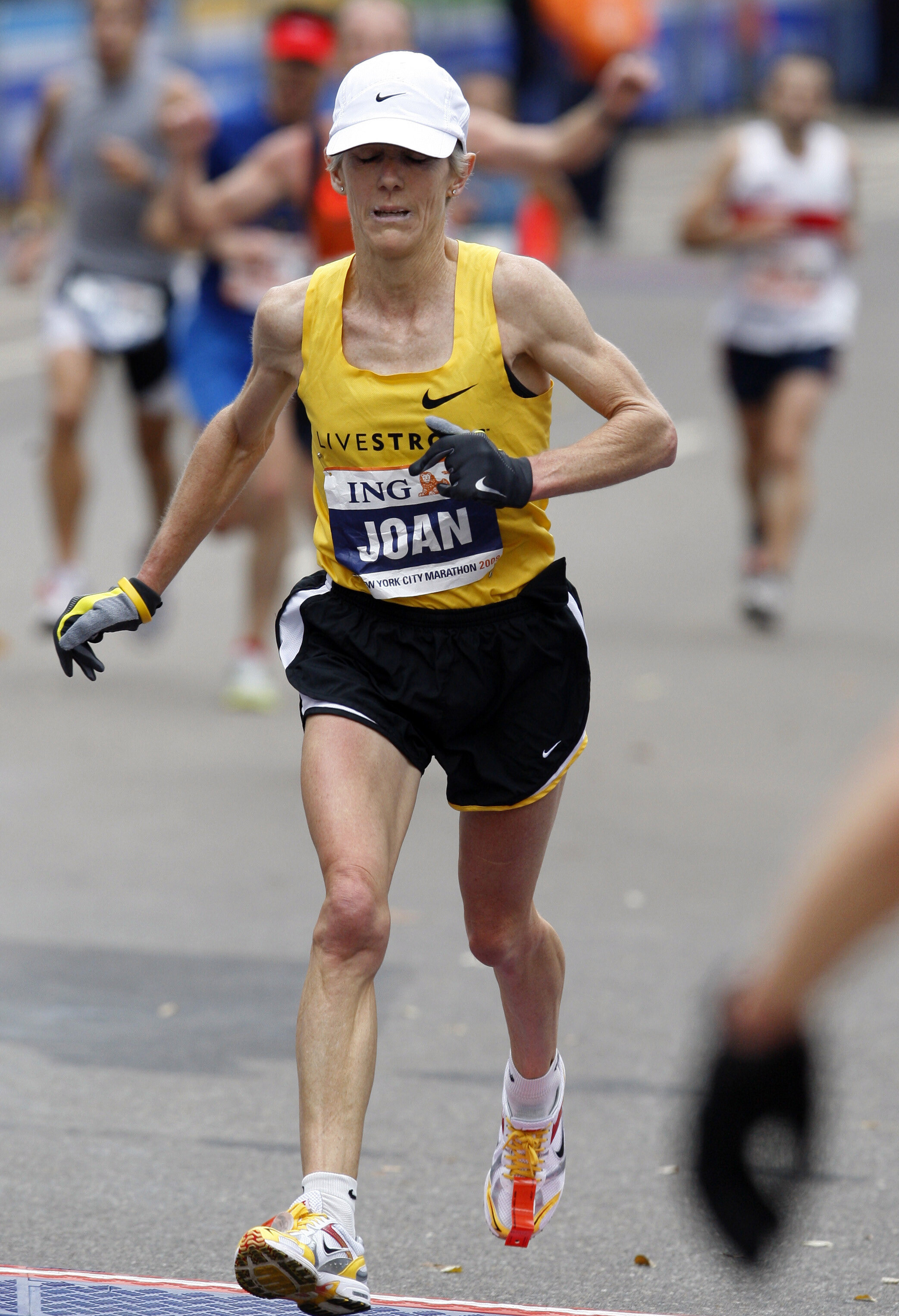
At one point, Keflezighi encountered a man who told him he’d had dreams of running the race with him.
“Then he took off, but I caught up with him and said ‘Let’s make your dreams come true,’’’ Keflezighi said.
Bill Rodgers, who won the Bix in 1980 and 1981 and has run it every year since, finished Saturday's run in a time of 1:19:46.
Two-time Olympic medalist Frank Shorter, who like Rodgers is 76, did the two-mile Quick Bix. But he said he still had a great time, marveling at how many times little kids breezed past him along the way.
At one point, a mother with a small daughter who Shorter estimated to be 5 or 6, came up alongside him. The mom told the girl to just go ahead and take off if she wanted. She’d see her at the finish line. The girl turned on the jets and took off.
“You could almost see the vapor trail,’’ Shorter joked.
Age-group records: Samuelson wasn’t the only person to set a course record for their age group.
It also was accomplished by Lucas Hollingshead of Elkhart, Ind., in the men’s 15-under division (37:41) and Richard Kutzner of Clear Lake, Iowa, in the men’s 80-84 (1:04:10).
And for the first time, the Bix 7 had 85-over divisions so the winners there obviously established records. The winners were Dave Zimmer of Long Grove, Iowa, and Norma Mullins of Moline.
Another Hird win: The first runner across the finish line in the Prairie Farms Quick Bix was a familiar face.
Zach Hird, a former Alleman High School runner who now lives in Naperville, Ill., won the Bix 7’s two-mile alternative in a time of 9 minutes, 48 seconds.
Hird won the Gregg Newell Trophy as the top local finisher in the seven-mile race in both 2018 and 2019.
The first female finisher in the Quick Bix on Saturday was Jennifer Douglass of Assumption, Ill.
Unbreakable Glass: Bryan Glass knows his Bix history well. Already a five-time master's champion, Glass put his name in the same breath as one of the Bix legends with a strong race Saturday.
At the age of 50, Glass finished the seven miles in 38 minutes, 21 seconds, becoming just the second runner 50 or older to run the race in under 40 minutes. The first? Bill Rodgers.
Glass was only 11 seconds off the 50+ record set by Rodgers — who ran 38:10 back in 1998.
"It was my goal for the last year, knowing that I could do it, I knew I could. Now, I ran faster than I ever thought I could do today, but I think it was just God giving me the ability to be prepared today, and I went for it."
Glass has a long history of running. He was a state champ at Geneseo and went to Southern Illinois University Edwardsville. He's also a member of the Springfield Road Runners Club Hall of Fame.
This is another accolade Glass has to be proud of.
"It's emotional because you work so hard for so many years," Glass said. "I never thought I'd get to the point where I'd have a chance to put my name up with Bill Rodgers. Now I know he's above anything I would ever beat, but to know that I'm in that same class in some sense in my home area, makes me so proud."
A rare Bix triple: Credit to recent Bettendorf High School graduate Maya Williams for giving it her all during the 50th QCT Bix 7 week. The standout sprinter pulled off a rare double on Thursday, running two races in the Brady Street Sprints — winning the open women's race and anchoring the Bulldogs' relay team to the high school girls' title.
Just for good measure, she figured she would jump into Saturday's 7-miler. Making that decision Friday evening didn't give her much recovery time. She posted a 1:18.21 clocking on Saturday.
RRCA honors: The Bix 7 served as the national championship race for the Road Runners Club of America on Saturday, which meant a little additional hardware for some runners.
In addition to men’s champion Wesley Kiptoo and women’s champion Raechel Chebet, Samuelson was honored as the women’s 60-over champion and Glass as the men’s 50-over champ.
Other honorees were Artur Mueller of Davenport, men 40-over; Jess Hruska of Dubuque, women 40-over; Kate Maurer of Urbandale, Iowa, women 50-over; and Rick Torres of Elizabethtown, Ky., men 60-64.
Weather vane: Saturday's weather for the race was nearly perfect. At race time, it was 68 degrees with a manageable 81% humidity. It was just the 18th time in 50 events that the race started with a temperature under 70 degrees.
Making her mark: Paityn Noe, last year’s Bix 7 high school girls’ top finisher, came back this year and had another solid race.
The University of Arkansas freshman from Huxley, Iowa (Ballard High School), was the seventh women’s finisher, clocking a time of 38 minutes, 34 seconds, just 2:13 behind winner Rachael Chebet.
In May, she finished second in the SEC Championships 10,000-meter run, clocking a 33:57.35. She also finished fifth last fall in the SEC cross country meet, running 19:43.7 for the 6,000-meter race.
Enjoy the day: Maggie Montoya, who was the third female overall finisher in Saturday’s Bix 7, enjoyed her first run through the streets of Davenport with 16,586 other people.
“When you’re surrounded by this mass of people, it brings you back to racing a marathon and being around people,” she said after finishing in 37:13. “It was nice to be back in that atmosphere.
“… There’s something about being surrounded by so many people that really adds to the event. It was fun being back out on the roads again.”
13-minute start: How long does it take for 16,587 to cross the starting line? The group of runners dressed as Elvis Presley, who almost always bring up the rear of the pack, finally got to the starting line when the race was 13 minutes old.
(07/29/2024) ⚡AMPby TJ Johnson
Bix 7 miler
This race attracts the greatest long distance runners in the world competing to win thousands of dollars in prize money. It is said to be the highest purse of any non-marathon race. Tremendous spectator support, entertainment and post party. Come and try to conquer this challenging course along with over 15,000 other participants, as you "Run With The Best." In...
more...52nd Wharf to Wharf goes down to the wire
The 52nd edition of the Wharf to Wharf road race lived up to its billing, and then some.
Fresno’s Evert Silva surged past four runners over the finishing downhill stretch into Capitola Village and edged Aidan Reed, of Helena, Montana, at the finish line in front of hundreds of cheering fans Sunday.
Silva and Reed both completed the scenic, 6-mile trek from Santa Cruz with chip elapsed times of 27 minutes, 3 seconds on a brisk morning under an overcast sky, perfect for running.
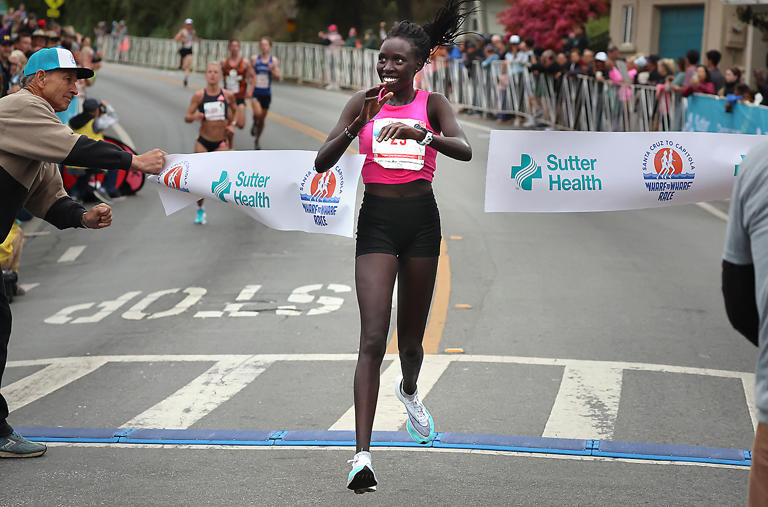
It was Silva’s first time competing in the race. The Oklahoma City University junior student-athlete said he was hoping to perform well in several races this summer to earn some money to help pay for bills. He earned a great payday.
The top male and female finishers each earned $4,000. Silva was also awarded an extra $1,000 for finishing as the top American runner.
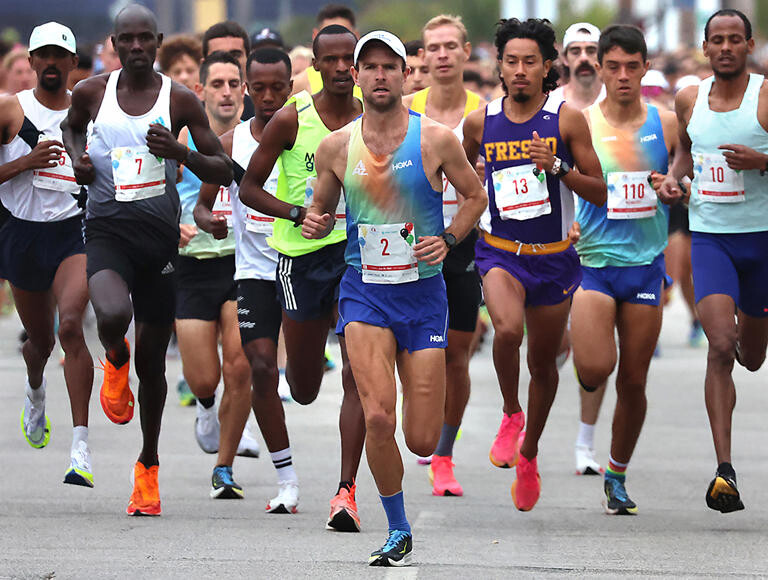
“I’ve heard a lot about it,” Silva said. “I know it’s a competitive race, so I wanted to show up when I knew I was in good shape to compete with all the top-level athletes who come here.”
Evert Silva raises his arms in triumph as he is cheered by the crowd at the Capitola finish line after winning the 2024 Wharf to Wharf on Sunday. (Shmuel Thaler - Santa Cruz Sentinel)
Evert Silva, 24, of Fresno, takes a final look back over his shoulder on Sunday before crossing the Capitola finish line to win the men’s title at the 2024 Wharf to Wharf race. Second-place finisher Aidan Reed, second from right, and third-place finisher Matt Baxter finished shortly after Silva. (Shmuel Thaler - Santa Cruz Sentinel)
Women's winner Everlyn Kemboi smiles as she breaks the tape at the Wharf to Wharf on Sunday. (Shmuel Thaler - Santa Cruz Sentinel)
Oliver Chang, of Santa Cruz, exults as he crosses the Capitola finish line with a time of 29:16 to win the local men's title at the Wharf to Wharf race. (Shmuel Thaler - Santa Cruz Sentinel)
Runners, including men’s winner Evert Silva, wearing bib No. 13, get off to a fast start as the Wharf to Wharf begins Sunday morning on Beach Street in Santa Cruz. (Shmuel Thaler - Santa Cruz Sentinel)
Reid Buchanan is splashed by a cup of water that was errantly put in his way by the outstretched arm of a volunteer as the lead pack runs through the Harbor roundabout Sunday morning. (Shmuel Thaler - Santa Cruz Sentinel)Dominique Scott crosses the finish line in second place with a time of 30:33 on Sunday, four seconds behind women’s winner Everlyn Kemboi. (Shmuel Thaler - Santa Cruz Sentinel)
Matt Baxter, takes the lead on Beach Street at the start of Sunday’s Wharf to Wharf. Baxter led on-and-off for much of the race and finished in third. (Shmuel Thaler - Santa Cruz Sentinel)
Former Aptos High track standout Trent Nosky is cheered by the crowd as he finishes Sunday’s race with a time of 30:11. (Shmuel Thaler - Santa Cruz Sentinel)
Grace Barnett, of San Diego, crosses the finish line with a time of 31:21, just edging out Alice Wright, at left, for fifth place. (Shmuel Thaler - Santa Cruz Sentinel)
Show Caption
1 of 10
Evert Silva raises his arms in triumph as he is cheered by the crowd at the Capitola finish line after winning the 2024 Wharf to Wharf on Sunday. (Shmuel Thaler - Santa Cruz Sentinel)
Expand
Reed earned $3,000 for second place. Matt Baxter, a two-time national champion from New Zealand, took third in 27:05 and earned $2,000. Ali Abdilmana of Ethiopia took fourth in 27:16 and earned $1,000, and Arturs Medveds of Latvia rounded out the top five in 27:28.
Race organizers expected a competitive race, given the times previously run by athletes in the elite field, and it was a thriller to the final step.
While plenty of the participants in the 16,000-runner field trained for the heralded event — arguably the biggest sporting event held in Santa Cruz County each year — few trained with ferocity of Silva.
Silva usually tries to train in the morning to avoid the suffocating, triple-digit temperatures that are commonplace in the Central Valley during the summer, but he added plenty of afternoon sessions, too. His showing along the coast, with views of picturesque Monterey Bay, was quite literally a breeze.
“I try to run in the morning,” he said. “But every afternoon run it’s 110 (degrees), so I said, ‘A lot of people aren’t training in that, and if I could just do it every week something good is going to come out of it.’ I guess it was being able to run fast in 60-degree weather in Santa Cruz.”
The lead pack featured eight runners for much of the first five miles. The runners traded the lead throughout that stretch. Baxter led at the mile marker, and Kenya’s Shadrack Keter, the third-place finisher at the 2023 Wharf to Wharf, crossed the second mile balloon archway in front.
Kenya’s Peter Mwaniki Njeru moved from second into the lead at the third archway, but he dropped back to fourth place as the lead pack thinned to five runners. Reed jumped in front and led at the fourth- and fifth-mile markers.
All the while, Silva stayed in the hunt, patient and ready to pounce.
“The downhill was extremely steep,” said Silva, of the finishing stretch. “And I’m a sub-4 miler, so I knew I can sprint with anybody. Those guys ahead of me, to my knowledge, they’re not sub-4 milers, so I knew I had some speed. Thankfully, I was able to hold it off.”
It was his second win in as many days. He took first at the Miguel Reyes Elite 5K in Fresno on Saturday.
American Everlyn Kemboi, a Kenyan native who won the 2023 NCAA title in the 10K, earned her second win as a professional. She topped the women’s field in 30:29. She passed Dominique Scott, who has citizenship in both South Africa and the U.S., with 600 meters to go.
“I’m so happy to be here,” Kemboi said. “I love racing in California. I came here last year. I was fifth. That was my first professional race.”
She wanted to come back and improve her showing. Kemboi credited her training for an improved effort. She said she’s running with peace of mind, so much so that she was surprised how quickly the race ended.
“I trust my finish, but today I was feeling great,” Kemboi said. “I was like, ‘Oh, we’re almost at the end. I only have six to seven meters to go. What?!?! I’m feeling good.’ ”
Scott, who was teammates with Aptos native and 2024 Olympian Nikki Hiltz at University of Arkansas, took second in 30:33.
If Scott returns next. year, she’ll have some useful course knowledge to rely upon.
“The girl that won, she made a little surge past me,” Scott said. “I didn’t realize how aggressive the downhill was going to be and that once she was two steps in front of me, I wouldn’t be able to catch her because it’s that aggressive of a downhill. That was definitely a mistake on my behalf. I would’ve loved the win, but I’m also happy with my race today.”
Scott is enjoying the process of training to compete in the next Chicago Marathon.
“It’s a hard course, but a fun course,” said Scott, of the Wharf to Wharf. “It’s cool how the locals come out to support. It was a great day. … They’re aren’t many races this time of year where you can get a perfect morning race. It’s usually pretty hot for all road races during the summer. I really enjoyed the weather.”
Kayley Delay of Jacksonville Beach, Florida, finished in 30:52 to hold off Ethiopia’s Atsede Baysa (30:55) for third place. Grace Barnett of Pawleys Island, South Carolina, took fifth in 31:21.
Santa Cruz’s Oliver Chang (29:16) and Watsonville’s Daniela Salazar (34:38) earned top local honors.
Chang, who grew up in South Pasadena and competed for Pomona College, moved to the area two years ago and used his extra year of eligibility competing for NCAA Division III UC Santa Cruz’s cross country and track programs.
Sunday was Chang’s first competitive race since competing in the San Francisco Half Marathon a year ago to the day. He began training in earnest 10 weeks ago.
“I’m ecstatic,” he said. “I couldn’t be happier with how the day went.”
Sunnyvale’s Daniel Mendez, who purchased a home in Brentwood roughly two weeks ago, competed in the race for the first time and came away with a handsome payday. His bib number, 9948, was drawn in the Golden bib contest, which earned him $5,000. He had no idea of the significance of being awarded a golden bib at the outset of the race, but several runners informed him that he should stick around and attend the awards ceremony.
“This is insane,” he said.
(07/29/2024) ⚡AMPby Santa Cruz Sentinel
Wharf to Wharf
Each year, on the fourth Sunday in July, thousands of runners from across America and around the globe return to Santa Cruz, California for the annual six-mile race to Capitola-by-the-Sea. First run in 1973 by a handful of locals, the Wharf to Wharf Race today enjoys a gourmet reputation in running circles worldwide. Its scenic, seaside setting, perfect weather, and...
more...Harvey Lewis races Badwater 135 for the 13th time in a row
This year’s edition of Badwater 135, dubbed the “world’s toughest foot race,” kicked off on Monday, plunging runners into the brutal extremes of California’s Death Valley. This year’s race featured the return of fan favorites, including Backyard Ultra world champion Harvey Lewis, a two-time Badwater winner making his 13th consecutive appearance, and fellow American Pete Kostelnick, also a two-time champion, who made a remarkable comeback after a severe car accident in Leadville. American Shaun Burke claimed the overall victory amidst the scorching heat, while Norwegian Line Caliskaner triumphed in the women’s category, finishing an impressive second overall.
The 135-mile (217km) race kicks off at the Badwater Basin, which, at 85 metres below sea level, is the lowest point in North America. This year’s race saw temperatures hitting a scorching 51 degrees Celsius. Runners who finish under the 48-hour mark earn the prestigious Badwater 135 belt buckle.
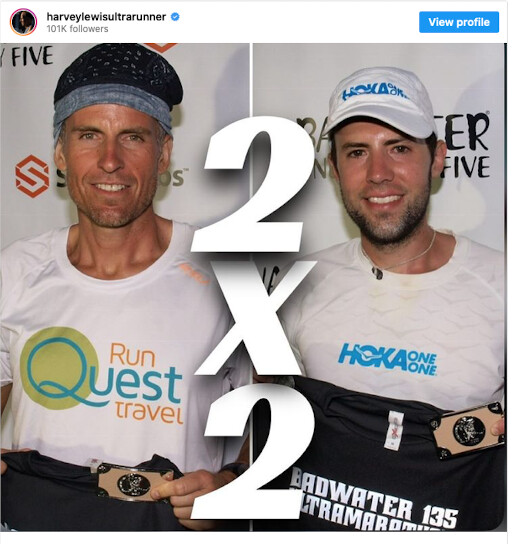

In 2023, Viktoria Brown of Whitby, Ont., was the only Canadian in the field of 100 runners and finished in 30:11:52 securing fourth among the women and claiming 13th place overall. This year’s race saw two Canadians joining the ranks—Frances Picard of Quebec, and Hannah Perry from Canmore, Alta.
Men’s race
Last year’s men’s champion, Simen Holvik of Norway, led for much of the race—in 2023, Holvik was second to U.S. runner Ashley Paulson, who finished first overall and took two hours off her own women’s course record. Burke, who received a late invite to the event in June, steadily closed the gap, eventually overtaking him before the 108-mile timing point. Holvik did not finish the race, leaving Burke unchallenged for the remainder.
Burke completed Badwater for the first time in 2023, when he was sixth overall and fourth among the men. Spanish runner Iván Penalba Lopez claimed the second men’s spot (third overall) in 28:06:34 in his third finish of the race, and Michael Ohler of Germany completed the men’s podium and third man (fourth overall) in 28:24:25. Kostelnick succeeded in finishing his come-back race, crossing the line in 35:28:55; Lewis followed in 36:41:22.
Picard, who was tackling the race for the first time, was still on course at the time of publication.
Top men
Shaun Burke (U.S.) 23:29:00 Iván Penalba Lopez of Alfafar (Spain) 28:06:34 Michael Ohler (Germany) 28:24:25
Women’s race
Caliskaner became the first Norwegian woman to complete the event, finishing second overall. An accomplished ultrarunner, in 2023 52-year-old Calinskaner won both the Berlin Wall Race (100 miles), and the Thames Path 100-miler. She maintained a narrow lead over Micah Morgan of the U.S. early on and added to her lead as the race progressed. Caliskaner finished in 27:36:27, over two hours ahead of Morgan, who finished in 29:11:28, second among the women and fifth overall.
Josephine Weeden of the U.S. rounded out the women’s podium in 33:26:37. Absent from this year’s race was American Ashley Paulson, who won the women’s race for the past two years and took the overall title last year. Alberta’s Perry was still on course at the time of publication but had passed through the 108-mile aid station in 29 hours and 51 minutes.
Top women
Line Caliskaner (Norway) 27:36:27 Micah Morgan (U.S.) 29:11:28 Josephine Weeden (U.S.) 33:26:37
(07/28/2024) ⚡AMPby Running magazine
A Lifetime Journey of Fueling Mistakes
It's helpful to know what your stomach can tolerate before a run—even that backfires sometimes.
During the 2023 New York City Marathon, Runner’s World set up shop in an empty storefront on West 57th Street with Adidas and hosted three days of inspiring talks, shakeout runs, and shoe demos.

Because of a last-minute cancellation by one guest speaker, I was called in to talk about nutrition. This was bound to be interesting. See, around the office, I’m known for doing things in unconventional or even questionable ways. I’ll go on long runs without any water or gels. At lunch, I’m more likely to grab McDonald’s or a gas station hoagie than a salad. Sometimes it works—sometimes it doesn’t. But I know the sage advice this magazine dispenses, even if I don’t heed it in my daily running life.
For the duration of the nutrition panel, I did as instructed. But purely for your entertainment, I offer a sampling of questionable fueling strategies and gastronomical gaffes that I have jotted down in my training log over the past couple of decades.
In case it’s not clear by now: You’re better off not following my example!
A new marathon PR! By nearly 5 minutes. Wasn’t sure what was going to happen today, really. I hadn’t slept well the last few nights. Plus, I ate a brisket sandwich for dinner and Pepto-Bismol for dessert last night.
10/15/2014 Seven Miles:
Note to self: Buffalo chicken pizza is a no-go if running after work. Great run with G.H., but I had some stomach issues 2 miles from the end and had to jump into the bushes. Not fun. The run, however, was.
9/20/2009 Adirondack Marathon:
One to forget. I was moving along well and was in second place overall for the first 22 miles. But had trouble keeping fluids down today and couldn’t keep it together when I got warm on the front half of the course. Maybe I shouldn’t eat a sausage sandwich at midnight before the race next year.
5/5/2017 Taco Mile:
I spent $129 at Taco Bell today. Filled 2 Ikea bags. Eat a taco, run a lap, repeat. That was fun. I was slow. But it was still a lot of fun.
10/11/2021 Boston Marathon:
Had lots of support out there. Frank gave me his mimosa at mile 18.
5/20/2020 Seven Miles:
Burping up the egg and pork roll sandwich I ate for lunch. Whoops.
6/16/2017 Beer Mile:
Fourth lap, beer going down good, but I started laughing when Kit yakked. I nearly did myself, but spewed a mouthful of beer, earning myself a penalty lap. Damn.
12/2/2019 Four Miles:
Got a late start to the day, but sneaked out for a lunch run. A good snowfall. Stopped at Burger King on my way back home. 2 for $6 Whoppers. Yay.
2/4/2024 19 Miles Long Run:
Felt hungry when I ran past a 7-11, so I stopped in for a donut (and Gatorade).
11/10/2017 Five Miles:
Ate a chicken Caesar wrap too late in the day. Vomited a little on the Brooklyn Bridge and nearly pooped my tights. Oof.
12/21/2015 Seven Miles:
We went to Joe’s Shanghai for a work holiday lunch. 1:30 reservation means I burped up dumplings for 7 miles after work. Not fun.
(07/28/2024) ⚡AMPAre You Drinking Water Wrong? According to Researchers, You Probably Are
Here’s how to hydrate for better performance.Here’s how to hydrate for better performance.Staying hydrated seems simple enough—drink water when you’re thirsty and stop when you feel like you’re done, right? Well, it’s a bit more complicated than that, especially for runners.
That’s because not understanding the complicated equation of race distance and intensity combined with water and electrolyte intake can ruin a long run or race, not to mention have serious health repercussions. Drink too little and your ability to power through your workout suffers; drink too much and you can get sidelined by nausea and frequent pee breaks.
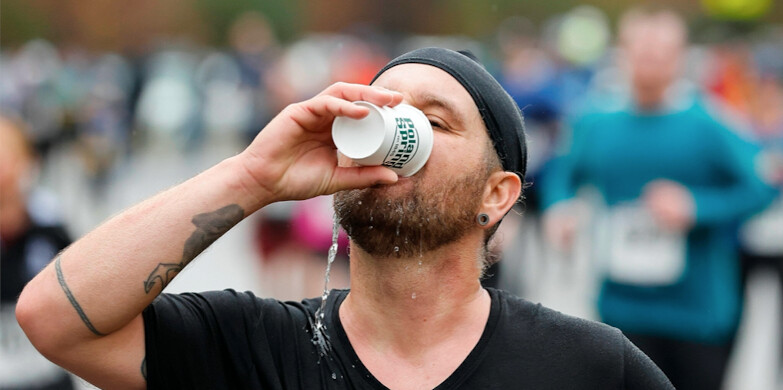
And even though you might first worry about dehydration for those summer runs, researchers found that the newer you are to running and the slower you run, the more likely it is that you will drink too much water while racing. (We’ll talk more about this later.)
To that end, much of the research demonstrates that mastering the art of hydration when you run isn’t as simple as it seems. Keep reading to find out if you drink water the wrong way—and how to drink water right.
6 Ways You Drink Water Wrong and 6 Ways to Drink Water Right
❌ Wrong Way: Gulping water during a race
✅ Right Way: Sip as you run
It’s okay to slow a little to make sure you’re getting in your fluids during a race, but gulping water at each aid station can ultimately slow you down and also lead to an upset stomach.
That’s because drinking too much water too quickly overloads the stomach, causing it to rapidly stretch. This can lead to discomfort and potential nausea, Justin Mullner, M.D., a board-certified primary care sports physician with the Orlando Health Jewett Orthopedic Institute in Florida tells Runner’s World.
Take small sips of water (or electrolyte drink) every 15 to 20 minutes, depending on the temperature and intensity of the run.
Combining a run with too much water is even more likely to cause nausea. That’s because intense exercise directs blood flow away from the stomach and toward the muscles, causing digestion to slow down. “So you put a bunch of water in there and the stomach really can’t handle it effectively and efficiently,” Mullner says.
A better strategy is to take small sips of water (or electrolyte drink) every 15 to 20 minutes, depending on the temperature and intensity of the run. “This approach helps maintain a steady level of hydration and prevents the stomach from becoming overly full,” Meghan Kennihan, a RRCA- and USATF-certified running coach, tells Runner’s World.
❌ Wrong Way: Drinking from a dirty water bottle✅ Right Way: Regularly clean your bottle
Your trusty water bottle is always there when you need it. Sadly, constant use means you’re probably getting more than water. Unless you regularly clean your water bottle—which means daily according to Mullner—you could be getting a dose of bacteria or even mold.
Every time you put your mouth to the water bottle and use your hands to open and close it, you transfer bacteria that can make its way inside. The moist environment inside your water bottle provides an optimal breeding ground for bacteria and mold, especially if you live in hot, humid areas. If left unchecked, the bacteria and mold can continue growing, potentially causing you to experience symptoms similar to food poisoning (such as stomach pain or cramps, diarrhea, and vomiting), per the Centers for Disease Control and Prevention. People with mold sensitivities can have a flare-up of allergy symptoms.Ideally, you’d wash out your reusable bottle—whether plastic, stainless steel, or glass—with soap and warm water each time, Mullner says. “It’s even more important if you’re using the bottle every single day or drinking beverages other than water,” he says. Mixing electrolyte powders or adding a sports drink to your bottle, for example, means more material for bacteria.Signs your bottle could use a good scrubbing include visible residue, a funny or foul odor, or changes in how things taste, Mullner says.
❌ Wrong Way: Waiting too long to hydrate before a run or race✅ Right Way: Start early
When preparing for a long run or race, many runners forget to hydrate until they’re practically toeing the starting line, “which is a bad idea because it doesn’t give the body enough time to absorb and utilize the fluids,” Kennihan says.
Staying well-hydrated in the days leading up to your long run or race can help you perform well, avoid feeling overly full, and reduce restroom stops. Be especially diligent about drinking water starting the day before a long run or race, and check your urine color to be sure you’re getting enough. “Really dark yellow is a sign that you’re not well-hydrated,” Mullner says. “Ideally, it has a slight tinge of yellow.”
Drink 16 to 20 ounces of water about 2 to 3 hours beforehand and then another 8 to 10 ounces 20 to 30 minutes before running.
Individual fluid needs vary. However, a general guideline for the day of the event is to drink 16 to 20 ounces of water about 2 to 3 hours beforehand and then another 8 to 10 ounces 20 to 30 minutes before running, Kennihan says. You may need to adjust your intake according to your body size, run distance, and outside temperature.
❌ Wrong Way: Drinking too much water on long runs✅ Right Way: Balance electrolyte intake with water
It’s critical to drink enough water during long training runs and races. However, drinking lots of water, and only water, can lead to overhydration, meaning you have too much water in your body.
Hyponatremia is an extreme version of overhydration, and occurs when sodium levels in the blood are lower than recommended, leading to muscle cramps, headaches, nausea and vomiting, low energy, and confusion, per the Cleveland Clinic. Normally, your body keeps your electrolytes in balance by taking the minerals from the foods you eat and filtering the excess through your urine. However, intense exercise causes electrolytes (particularly sodium) to be quickly lost through sweat, and hot, humid temperatures only accelerate this loss, per the American College of Sports Medicine.
It's not just new runners who tend to overhydrate. At the other end of the spectrum, 41 out of 63 finishers at an ultramarathon also finished with mild or severe hyponatremia, according to a 2019 Frontiers in Nutrition study.
Take in electrolytes in addition to water if you’re running for longer than 60 minutes or in hot, humid temperatures. Drinking water without replacing electrolytes dilutes the remaining electrolytes (again, sodium in particular) in your blood. “You can potentially get yourself into trouble with hyponatremia,” Mullner says.
To prevent an electrolyte imbalance, take in electrolytes in addition to water if you’re running for longer than 60 minutes or in hot, humid temperatures. Bring an electrolyte drink, some gels, or another electrolyte supplement.
❌ Wrong Way: Drinking a pure sports drink✅ Right Way: Water it down
Sports drinks offer a convenient delivery system for carbs and electrolytes while running. Still, many runners prefer to water things down.
“Many sports drinks are too concentrated, leading to stomach cramps and nausea. Diluting them can still provide the necessary electrolytes and carbohydrates without overwhelming the stomach,” Kennihan notes.
The optimal ratio of sports drink to water depends on your preferences and the makeup of your drink. Mullner suggests diluting your sports drink to the point where it’s most palatable for you.
Diluting sports drinks can still provide the necessary electrolytes and carbohydrates without overwhelming the stomach.
The exception: Don’t dilute a sports drink that contains carbohydrates if you’re using it for energy purposes. “Some sports drinks have carbs in there to help extend the amount of time you can perform, and if you’re trying to absorb carbs better, you would have it with some electrolytes,” Mullner says. Adding water can cut down on how many carbs you get per sip, limiting performance benefits.❌ Wrong Way: You don‘t know about your med’s side effects
✅ Right Way: You read labels and talk to your pharmacist
Some over-the-counter and prescription medications can affect an athlete’s hydration, says Kennihan. NSAIDs, such as ibuprofen and aspirin, can reduce blood flow to the kidneys, which can impair their ability to conserve water and electrolytes, potentially leading to dehydration, especially during prolonged physical activity like running.
Similarly, diuretics, which are prescribed for conditions such as hypertension and edema, increase urine production and promote the excretion of water and electrolytes from the body. Increased urine output can lead to a significant loss of fluids and electrolytes, making it easier for runners to become dehydrated, particularly in hot and humid conditions or during long-distance runs.
Likewise, antihistamines can reduce saliva production and increase the risk of dry mouth and dehydration, while laxatives can cause increased bowel movements and fluid loss.Lastly, stimulant medications, such as those used for attention deficit hyperactivity disorder (ADHD), can increase sweating and fluid loss, potentially leading to dehydration if fluid intake is not adequately maintained.
Bottom line: As a runner, remember that hydration is as much a part of your performance as actual time on your feet.
The authors of a 2019 article published in the International Journal of Sport Nutrition and Exercise Metabolism recommended that runners develop a “personalized and practiced race plan” to optimize their fluid and carbohydrate intake based not only on their distance and intensity, but also taking into account their body composition, as well as the weather and other race conditions, such as refueling stations, at each event.
(07/28/2024) ⚡AMPEven in an Olympics year, elite fields are deep for Wharf to Wharf road race Sunday
The 52nd Wharf to Wharf race takes place Sunday, and 16,000 runners will make the annual 6-mile trek from Santa Cruz to Capitola. This time, they'll do so in an Olympic year.
Supportive fans who position themselves along the course route will not only be treated to an up-close view of a blazing quick elite field, and plenty of recreational runners, some of them costumed, they'll also get to take in the traditional array of musical groups that line the course.
Some of the world's best middle distance and distance runners are in Paris for the 2024 Summer Games, but Dayne Gradone, the Wharf to Wharf's elite athlete coordinator, believes the celebrated local race drew a heck of a field.
"On the whole, the fields are solid," said Gradone, of the elite entries for men and women. "There may be less pop at the front, but they're deep fields."
There are plenty of registered athletes whose résumés include 28-minute finishes in the 10K and 13:20 marks in the 5K.
One of the top runners in the field is Peter Njeru. Earlier in the year he clocked a 27:52 10k. He was just a 34 minute 10k runner before he joined the KATA (Kenyan Athletics Training Academy in Thika) training camp in 2020. Second photo is Peter having lunch with KATA's founder/director Bob Anderson going on his plans for the Race. Bob recently opened his second KATA location in Portugal.
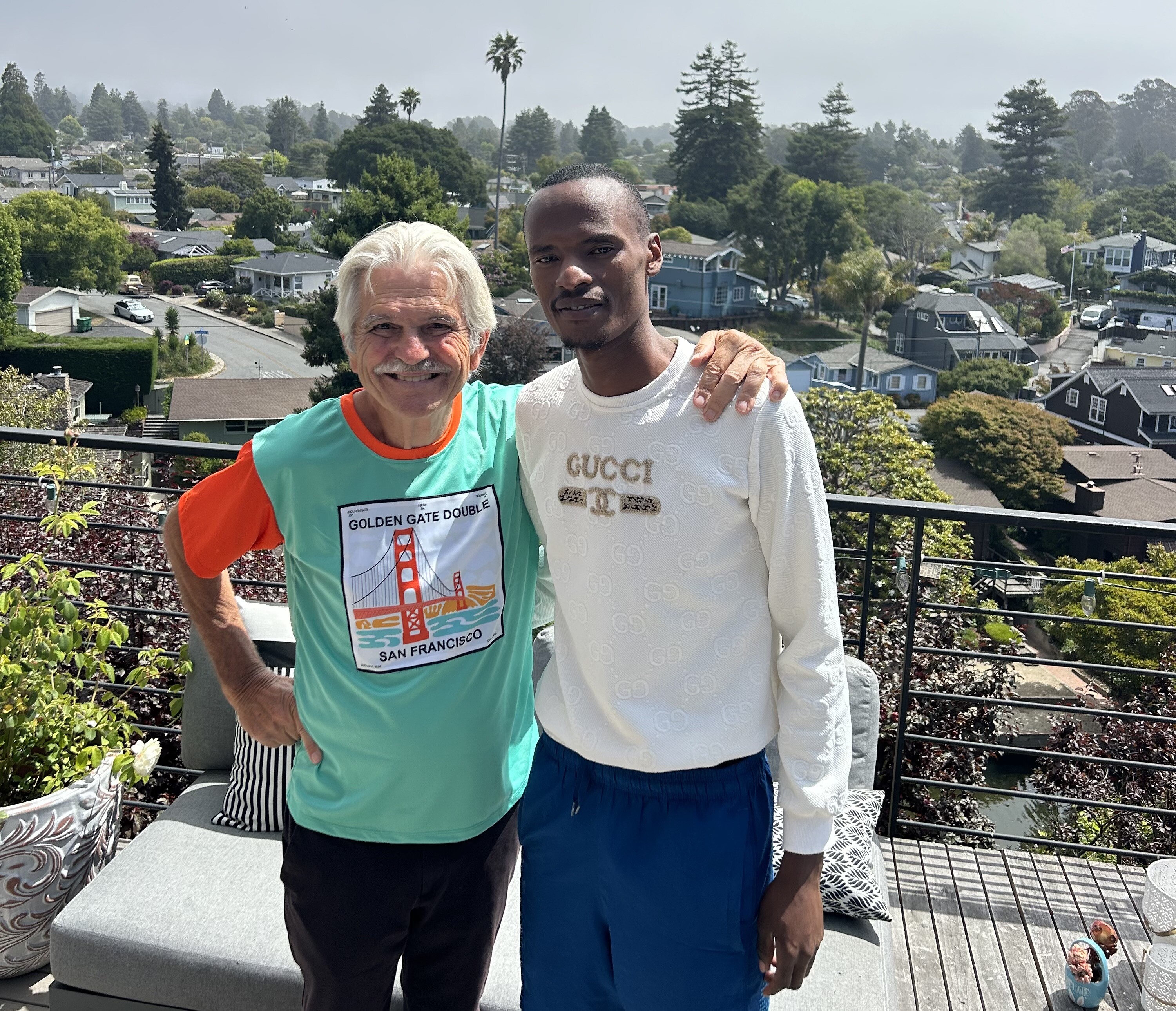
As usual, runners will have plenty of incentive to finish in the top four. The top male and female finishers will each receive $4,000. Second pays $3,000, third garners $2,000, and fourth pays $1,000. The top American runner will also receive $1,000.
The women's field is headlined by Dom Scott and Atsede Baysa.

Scott is a two-time Olympian, five-time NCAA champion and two-time national champ. She has dual citizenship (South Africa and U.S.) and is eligible for the top American runner prize.
Ethiopia's Baysa has won three major marathons, claiming the Boston title in 2016, and Chicago title in 2010 and '12.
"The women's field is incredibly deep," Gradone said. "A lot of women have run in the low 15 minutes in the 5K. Those are some serious times."
Gradone is alluding to talents like Bahrain's Bontu Edao Rebitu, and Americans Kayley Delay, Katie Izzo, Grace Barnett, and Paige Wood. Australia's Clare O'Brien isn't far off, and Great Britain's Alice Wright could also be in the mix.
American Everlyn Kemboi, the 2023 NCAA champ in the 10K, was added to the field this week.
Top female locals include Santa Cruz's Amy Schnittger, an Aptos High and Chico State University alumna, and Mari Friedman, a Santa Cruz High and Oregon State University alumna.
Kenya's Shadrack Keter, the third place finisher at the Wharf to Wharf last year, is one of the favorites in the men's field, as are New Zealand's Matt Baxter, a two-time national champion, Kenya's Peter Mwaniki Njeru, Ethiopia's Ali Abdilmana, and Zimbabwe's Bradely Makuvire.
A strong American contingent includes Reid Buchanan, a silver medalist in the 10,000 at the 2019 Pan American Games, Noah Droddy, Sidney Gidabuday, Aidan Reed, Patrick Smyth, Zac Hine and Evert Silva.
Top local males include St. Francis High alum Julian Vargas, who took fifth at the 2024 3C2A State Championships in the 10,000 for Hartnell College, and Aptos native Jack Rose, who took 54th out of 26,469 runners at the 128th Boston Marathon in April.
Vargas (29:28) took ninth at the 2023 Wharf to Wharf and Rose (30:49) took 33rd.
(07/27/2024) ⚡AMPby Jim Seimas
Wharf to Wharf
Each year, on the fourth Sunday in July, thousands of runners from across America and around the globe return to Santa Cruz, California for the annual six-mile race to Capitola-by-the-Sea. First run in 1973 by a handful of locals, the Wharf to Wharf Race today enjoys a gourmet reputation in running circles worldwide. Its scenic, seaside setting, perfect weather, and...
more...Soi eyes Bogota Half Marathon course record on Sunday
The 2008 Olympic 5,000m bronze medalist Edwin Soi will on Sunday attempt Geoffrey Mutai's Bogota Half Marathon 1:02:20 course record.
Mutai, a two-time New York Marathon champion set the time at the 2011 edition followed by Ethiopia’s Deriba Mergat (1:04:49) and Wilson Chebet (1:04:57).
Soi believes the competitive field and favorable weather conditions make the record within reach.
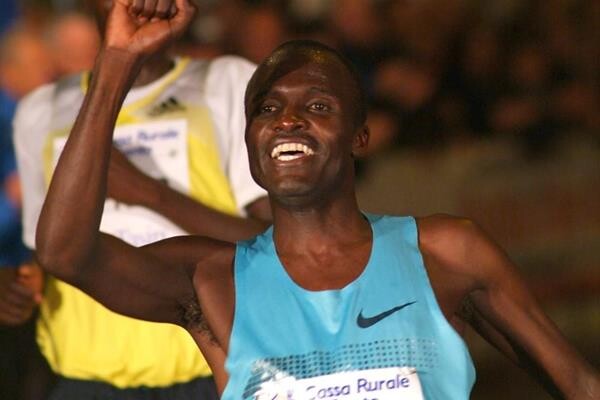
“I believe the competitive field assembled this year and favorable weather make it possible to go for the record,” Soi remarked.
He will be joined by compatriots Philemon Kiplimo, the 2022 Prague Half Marathon champion, Cali 10km Road race champion Ezra Tanui and Yangzhou Half Marathon champion Edward Koonyo.

The Kenyans will face stiff competition from Venice Marathon champion Solomon Mutai of Uganda, 2023 Belgrade Marathon champion Chakib Lachgar of Spain and 2022 Hannover Marathon champion Hendrik Pfeiffer of Germany.
“I did not do so well in the race last year. With my preparations this year, I am confident about running well and achieving my target,” added Soi.
He clocked 1:04:55 for third place, trailing Tanui (1:04:50) and Morocco’s Omar Chitachen (1:03:50).
“I have run here three times, winning once. I want to add another win this year,” he revealed.
Soi claimed his first title in 2022 in 1:05:27, ahead of Uganda’s Andrew Kwemoi (1:05:29) and Daniel Muindi (1:06:45).
Napoli City Half Marathon champion Angela Tanui will seek to reclaim her crown in the women's edition.
“I was not 100 per cent ready last year. My preparations before the race were not good either,” Tanui noted.
Tanui placed fifth in 1:16:31 in a race she was bested by Daisy Kimeli (1:15:12), Ethiopia’s Anchialem Haymanot (1:15:34) and Colombia’s Angie Orjuela (1:15:40).
She won the title in 2022 in 1:13:29 with Veronicah Wanjiru (1:15:26) and Ecuador’s Rosa Chacha (1:16:43) trailing.
“I am ready this year. My preparations have been good,” she said.
Tanui will face defending champion Kimeli and the Ethiopian duo of Aberu Ayana, the Lisbon Marathon champion, and Frankfurt Marathon champion Buzunesh Getachew.
(07/27/2024) ⚡AMPby Teddy Muley
Bogota Half Marathon
The Bogotá International Half Marathon, or mmB as it is traditionally known, is an annual road running competition over a half marathon distance 21.0975 kilometres (13.1094 mi) taking place in Bogotá, Colombia in late July or early August. Established in 2000, it holds IAAF Gold Label Road Race status, making it the first and thus far only South American race...
more...Try this cutdown workout to conquer your 10K goals
If you’re aiming to elevate your 10K performance and smash your race-day goals, we have the perfect workout to help you get there. The cutdown workout is a powerful training method that ramps up intensity progressively throughout your run, pushing your limits and enhancing your performance. It’s designed to build stamina, improve speed and tackle those race-day challenges head-on.
This workout involves starting at a slower, manageable pace and gradually speeding up throughout the session. By doing so, you improve your endurance and ability to sustain a faster pace as fatigue sets in, crucial for excelling in longer races like the 10K.
The effectiveness of a cutdown workout lies in its ability to simulate race conditions and build both physical and mental stamina. As you progress, you practice maintaining focus and managing effort while pushing closer to your limits. This gradual escalation teaches your body to adapt to increasing demands, enhancing your overall speed, aerobic capacity and race-day performance.
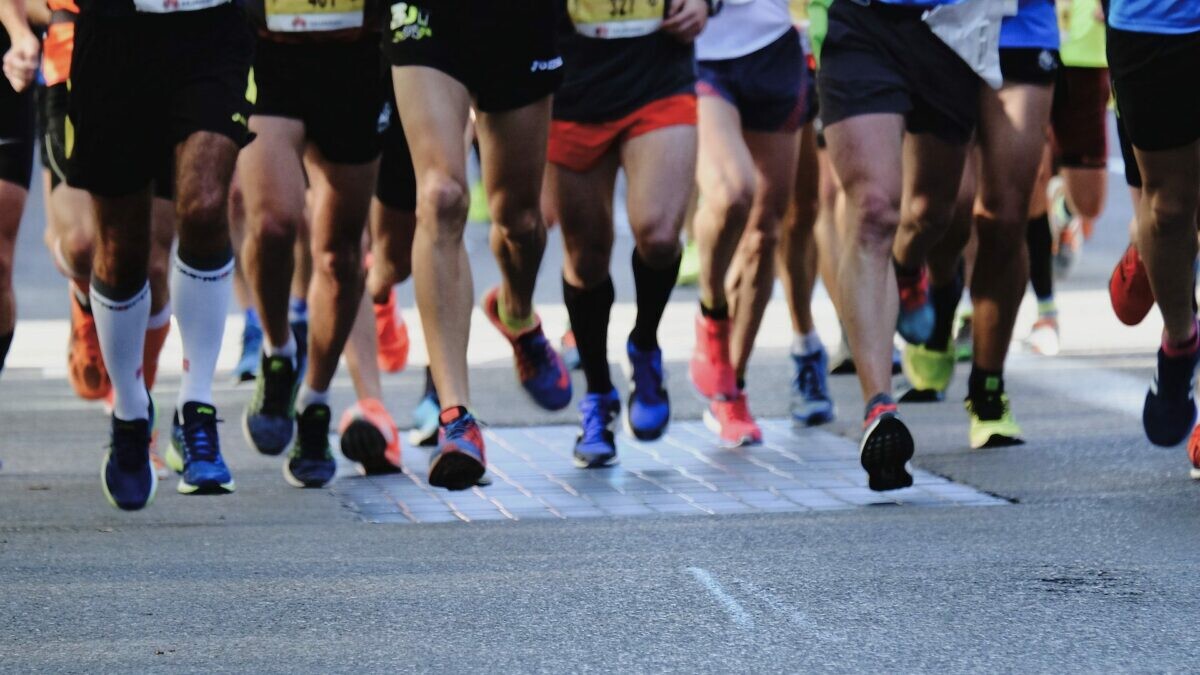
10K cutdown session
While it’s helpful to do this workout on a track for exact measurements, you can also do it on the road using your watch, and can even approximate your distances. Following your warmup, run each interval one after another without any rest in between.
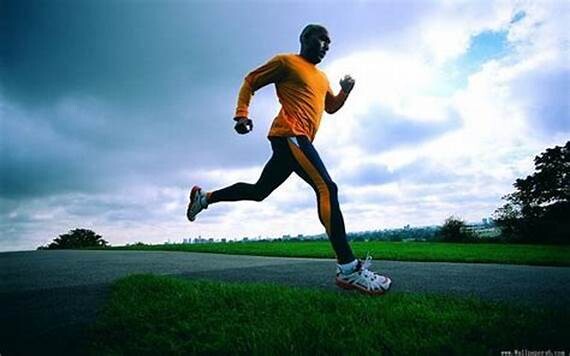
Warm up with 10-15 minutes of very easy running, followed by 5 minutes of dynamic stretches (leg swings, high knees).
Run 3 km at an easy pace (60-65 per cent of maximum effort); pick it up with 1.5 km at a moderate pace (70-75 per cent of maximum effort).
Continue with 800 meters at a fast pace (80-85 per cent of maximum effort), and finish with 400 meters at a very fast pace (90 per cent+ of maximum effort).
Cool down with 10 minutes of very easy running.
Make sure to follow any speedwork session like this one with a rest day or a day of very easy running.
(07/27/2024) ⚡AMPby Keeley Milne
Why Ultrarunning GOAT Courtney Dauwalter Says Loops—Not Out-and-Backs—Are the Superior Route
We polled Dauwalter on some of running’s most polarizing questions. Take the quiz to see how you stack up.
In 2023, Courtney Dauwalter had one of the most legendary years in trail-running history, becoming the first person to win the Triple Crown of the 100-mile races—Western States, Hardrock, and UTMB—in a single season. This year, she’s showed no signs of slowing down, repeating as Hardrock champion and improving on her course record by over two minutes.
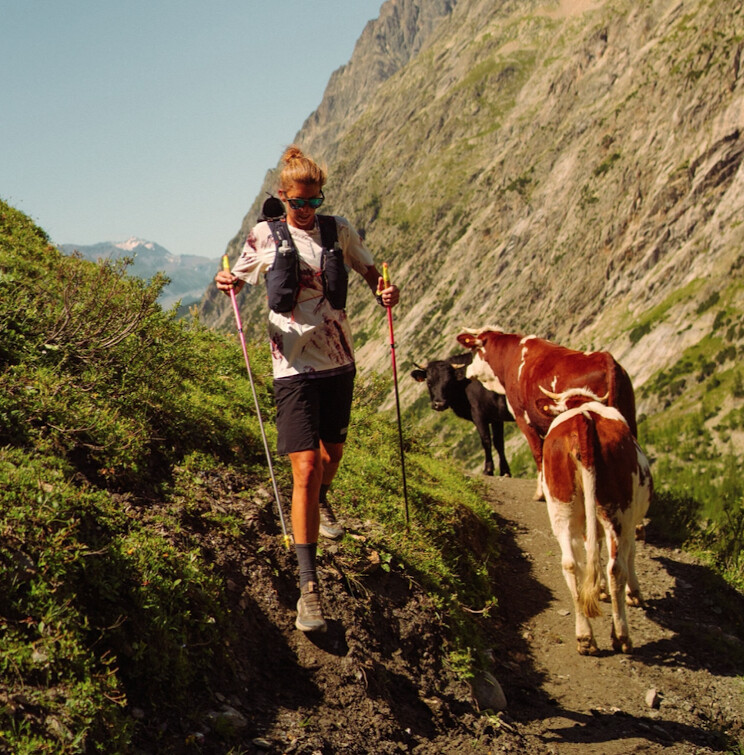
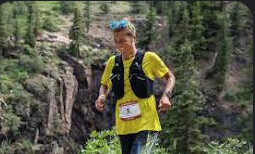
Courtney has a lot to say: “Comfort is key! I prefer [shorts with] long inseams because I am most comfortable in them. We should all wear the clothes that make us feel our best when we're out trying hard things.”
On the type of course: "I love any type of route, really, but loops definitely feel like big adventures. Not knowing what’s around each corner or what view you might be rewarded with is exciting.”
Race plan; “Early mornings feel so simple and peaceful. I love to drink my coffee and watch the sun rise while I plan out my day.
Courtney Explains: “Staying in the moment, focusing on taking the next step, and repeating a positive mantra are things I try to do during the toughest moments of any run.”
(07/27/2024) ⚡AMPby Runner’World
8 Things You Need to Know About the Paris Olympics—Plus How to Watch
The biggest sport at the Paris Olympic Games will be held on August 1-11. And while it’s the oldest Olympic discipline, a lot will be new about track and field this year.
A lot has changed in the last 100 years. Feathers, jazz, and radios are out. Mom jeans, T-Swift, and TikTok are in.


(We don’t make up the rules.)
Dirt tracks have been replaced by vibrant shades of bouncy mondo. Leather shoes cower next to featherlight carbon-plated spikes. Scouts sprinting along marathons, calling in the action by telephone to announcers projecting the information to spectators sitting in the stands, have been put out of business by helicopters and motorcades livestreaming the race on TV.
But one thing hasn’t changed: the 2024 Olympic Games will be held in Paris, France—where they were held for the last time exactly 100 years ago. And once again, track and field will be the star of the show.
(Sorry, break dancing and skateboarding.)
Here’s what you need to know about track and field, or what the rest of the world calls “athletics,” at the 2024 Paris Olympic Games on August 1-11.
Of the 10,000 athletes from 206 nations competing in 329 events at the Paris Olympic Games, 1,800 of them will be in the 48 events of track and field. That makes track and field by the numbers the biggest of the 32 sports.
It’s a fitting designation for a historic sport that traces its roots back to about 200 B.C. in Ancient Greece and the birth of the Olympics. Then, men (yes, just men) competed in sprints, the long jump, discus, and javelin to celebrate human potential and to honor the gods.
Those events are all still contended today (plus a whole lot more that would make the Ancient Greeks—and many of our contemporaries, for that matter—scratch their heads, like the 3,000-meter steeplechase and the 20K racewalk), giving special import to this sporting discipline.
In addition: unlike say, soccer or basketball, which have the Football World Cup and the NBA Finals, the Olympics represents the pinnacle of the sport for track and field. For all the disciplines within track and field, from the 100 meters, to hammer throw, to the decathlon, there is no higher honor than winning Olympic gold.
It’s been a long, arduous road since Pierre de Coubertin, founder of the modern Olympic Games in 1896, famously said that the point of the Olympics was “the solemn and periodic exaltation of male athleticism…with the applause of women as reward.”
At the 1900 Olympics, also in Paris, 22 women defied Coubertin’s dream and competed in a total of five events: croquet, equestrian, golf, sailing, and tennis. They made up a minuscule 2.2 percent of the 997-person field. This year, thanks to tireless work starting with the International Olympic Committee, the Paris Olympics will be the first to (basically) achieve gender parity.
Of the 329 medal events, 157 will be contested among men, five more than the 152 for women. (There are also 20 mixed-gender events, including the mixed-gender 4×400-meter relay on the track and the mixed-gender marathon race walk relay.) But within the 32 sports, 28 are gender equal—including, for the first time, track and field.
The devil is in the details, and if we’re putting true parity paramount then there’s still some work to go. Even within track and field, the men still compete in the decathlon (10 events) while the women compete in the heptathlon (seven). And then there’s everyone on the team beyond the athletes themselves: in Tokyo three years ago, 13 percent of coaches were women—and that’s up from 11 percent in Rio in 2016. A quarter of National Olympic Committees give less prize money to women gold medalists than men.
Speaking of prize money, track and field is breaking barriers this Olympics by becoming the first sport to give out prize money. Gold medalists in both women’s and men’s races will win $50,000, with relay teams splitting that pot four ways. In total, that’s $2.4 million that World Athletics will be coughing up to foot the bill, a sign of change for how the Olympics have bloomed from an exhibit of amateurism to full-blown commercialization.
Notably, this prize money is less than World Athletics hands out at the World Athletics Championships, which awarded gold medalists $70,000 in Budapest last summer. World Athletics intends to extend prize money to silver and bronze medalists at the 2028 Olympic Games in Los Angeles.
That prize money from World Athletics remains separate from prize money awarded by some national federations—including the U.S. Olympic and Paralympic Committee, which will award $37,500, $22,500, and $15,000 to Team USA gold, silver, and bronze medalists, respectively, in Paris.
Paris vowed to make this Olympics the greenest ever, building as little new infrastructure as possible and using the city’s iconic landmarks as venue backdrops instead. Rather than build dazzling new stadiums which quickly fall into disuse and disrepair after the Games—as we’ve seen at previous Olympics—Paris opted to revamp existing infrastructure, some of it dating back to the last Olympic Games here in 1924.
The Stade de Yves-du-Manoir, the main stadium of the 1924 games which hosted among other things track and field, has a new 1,000-seat grandstand and will host the field hockey events.
The pastel-colored high-rise apartments of the Olympic Village, where many athletes stay during the Games, add a splash of color to Seine-Saint-Denis, the poorest area not only in Paris, but the country. Water pumped from deep below the earth cool the apartments made from a mix of wood and concrete (although many delegations have requested AC units nonetheless) and the avenues outside are made from a permeable pavement composed of crushed seashells that cool the streets by allowing water stored underneath the ground to evaporate on hot days.
This initiative has also fast-tracked cleaning up the famously romantic and infamously gray city. Paris has built 250 new miles of bike lanes, continued to expand its Metro network, allegedly cleaned up the Seine, and planted 300,000 new trees.
Track and field will be held on France’s biggest stage, quite literally. Built for the 1998 Football World Cup, Stade de France seats more than 80,000, making it the largest stadium in France. It’s home to the French national football (soccer) and rugby teams as well as the country’s biggest concerts.
As you’ve probably seen by now, the track has been resurfaced to purple for the Games. The shade is reminiscent of lavender, a homage to both the creativity of the 2024 Olympics and to the ash-colored track at the 1924 Olympic Games across the city.
If you’ve watched track and field meets in the past, you may have been confused why some athletes names’ appear with a big “Q” or a little “q” on the scoreboard after the preliminary and semi-final rounds.
If that’s you, don’t stress. In the spirit of second chances, and well, simplicity, the Paris Games are doing away with this system (for the most part).
For the first time ever, individual track events ranging from the 200 meters to the 1500 meters (including hurdles races) will include a “repechage” round. Athletes in the preliminary round who do not automatically qualify for the semi-final will have an opportunity to race their way into the next round through this additional heat, the entomology of which comes from repêchage, or “second chance” in French.
Under this new format, events will have four rounds: preliminary, repechage, semi-final, and final. This guarantees that every athlete competing in the 100 through the 1500 will have the opportunity to race twice. The number of athletes who will advance out of the repechage to the semi-final varies depending on the event.
The repechage round replaces the former system, in which athletes advanced by running the fastest in their heats (Q), plus the next best getting in on time (q).
The 100 meters already has an additional round of preliminary heats, and the distance events (3,000-meter steeplechase, 5,000, and 10,000) require adequate time to recover, so these events will be conducted without the repechage round.
Expanding on the theme of gender equality at the Paris Olympics, the marathon route pays homage to a pivotal moment in women’s history during the French Revolution: the Women’s March on Versailles. The roughly 160 competitors in the men’s and women’s races (as well as the citizen’s race, Paris 2024 Marathon Pour Tous) will follow in the footsteps of roughly 7,000 Parisian women and men who marched from Paris to Versailles on October 5-6, 1789 to demand bread and arms. (It worked: King Louis XVI finally agreed to sign the Universal Declaration of the Rights of Man and Citizens that day.)
Just like those disgruntled Parisians 235 years ago, runners will start at Hôtel de Ville, the city hall in the center of Paris, and will make their way on foot to the Palace of Versailles about 12 miles to the west. Along the way, runners will pass through nine districts of the Île-de-France, against a backdrop of the City of Light’s most iconic landmarks, parks, and forests, including the Place de Concorde, Rue de Rivoli, Tuileries Garden, and, of course, the Louvre.
In addition to being steeped in history and splendor, the course will be particularly grueling for a road race: the middle section packs some kickers that add up to over 1,430 feet of climbing and descent, with a maximum grade of 13.5 percent. Throw in some heat and humidity and we’re in for two unpredictable, action-packed events.
You may be wondering why race walking, in which competitors basically try and cheat as much as possible without getting caught, is an Olympic discipline. We are, too. Just watching race walkers swing those hips along at 6-minute per mile paces seems injury-inducing. But hey, three-on-three basketball, badminton, and trampoline are in the Olympics, too, so who are we to judge.
But judging is in fact a critical component of sport. Race walking rules stipulate that competitors must keep one foot on the ground at all times, to the point where any loss of contact is not visible with the naked eye. In other words, the rules are basically begging athletes to cheat and run without getting away with it. In addition, the lead leg must remain straight until that leg passes under the body. Using just the naked eye, that is, no technology whatsoever, judges monitor competitors to try and uphold these regulations.
For the first time since the discipline became an Olympic event in 2000, race walking will provide gender-equal medal opportunities. There will be a men’s and women’s 20K race, as well as a marathon-distance mixed-gender relay, which will replace the men’s 50K.
In a highly unique format, the mixed-gender relay will see 25 teams of one man and one woman each. They’ll complete a marathon-distance race broken up into four 10K chunks, with each competitor racing twice (man, woman, man, woman).
Perhaps the greatest improvement from the 1924 Olympic Games is that we can watch it all without even being there. NBC Universal, the American multinational mass media and entertainment conglomerate that owns the media rights to the Olympics, is planning to air more than 7,000 hours of total coverage of the Paris Olympic Games. Track and field coverage will be broadcast on the NBC, USA, and E! TV networks and streamed on Peacock, NBCOlympics.com, NBC.com, NBC app, NBC Olympics app, and NBC Sports app.
The action kicks off with the men’s and women’s 20K race walk on August 1, and concludes with the women’s marathon on August 11. In between, enjoy a nine-day action-packed feast on the track at Stade de France. Find the full track and field schedule of events here and the full track and field viewing schedule here.
Morning viewing sessions on August 2-9 will commence at 4 A.M. ET, and medal events will be shown on NBC’s tape-delayed prime time broadcast. Don’t worry, you can watch them live, too! Peacock, the streaming service of the Olympics, will stream every sport and event.
Those willing to sacrifice some sleep can catch the men’s marathon coverage live beginning at 2 A.M. on August 10 on USA Network, Peacock, and the NBC Sports app, while the women’s marathon will be shown live beginning at 2 A.M. on August 11.
(07/27/2024) ⚡AMPby Outside Online
Superstar Drummer Travis Barker is Finding New Rhythm with Running
After a near-fatal plane crash, the Blink-182 generational talent is redefining himself and the sport. We caught up with him (literally) during his 5K race in Queens.
It’s 8:15 A.M. in New York City and I’m racing through hoards of tattooed limbs, tip-dyed mohawks, cotton band T-shirts, and people attempting to stay upright while taking selfies.

Three minutes later, I reach a small group of runners struggling to keep up with Travis Barker, the legendary drummer for Blink-182. He’s hauling, a black bandana flapping under his cap, phone in one hand, cardboard box of water in the other.
It’s not a genre of running I ever thought would exist. But Barker’s run makes sense given a new craze taking root. Suddenly, running is social. It’s wellness. It’s cool. And I’m happy to add it to my playlist.
On July 21, I attended Run Travis Run, an event billed as a glimpse into Barker’s pre-show routine. Apparently his pre-show routine involves racing a 5K around the empty parking lot of Citi Field, the 42,000-person stadium in Queens where Blink-182 would be performing a sold-out show 12 hours later. Because that’s what we were doing as I sprinted to catch up to him.
It’s the second event of the new series led by Barker, 48, who began running consistently after a near-death airplane crash in 2008 that left 70 percent of his body covered in burns. He spent 11 weeks in hospitals and burn centers, undergoing 16 surgeries. Doctors told him he may never be able to walk or play the drums again.
In true punk fashion, Barker—who had never seriously played sports in his life—was determined to prove them wrong.
He started focusing on wellness and self-discovery. Running proved key in replacing his addictions to smoking and painkillers. He smirks while talking about how much he loves running, and it’s clear how he wants to inspire others to get into it, too.
Barker got three hours of sleep last night thanks to pre-race and pre-concert nerves: “Of course, I’m focusing on trying to sleep, so I get less and less of it because I’m so hyped up.” He calms himself down by listening to Tim Grover’s Relentless: From Good to Great to Unstoppable. “That audiobook is like my Bible,” he says. I was listening to chapter 8 on the way here, which was talking about getting in the zone. He talks about coolers, closers, cleaners. I figured out I’m a cleaner. I don’t do it for a pat on the back or recognition, I do it for myself. I’m not in competition with anyone. It’s a fire within myself.”
Cleaners, according to Grover, don’t wait to be asked. They just do it.
(07/27/2024) ⚡AMPby Outside Online
What to Do if Your Trail Dog is Obsessed With Wildlife
Prey drive is a natural—but frustrating—part of running with a canine companion. Expert trainers share their tips for improving on-trail obedience.Running with your dog can sure sound dreamy. In theory, your faithful companion motivates you to hit the trail each morning, burns off his extra energy, and then snoozes peacefully while you clock in at work. Positively idyllic—right?
The bad news is that reality can sharply differ. If your dog loves a good chase, you might feel less like you have a training buddy and more like you have a beast on a leash—a wild-eyed running partner that lunges toward rabbits, birds, even deer as you fight to remain upright.

If this sounds familiar, you might have a dog with a high prey drive. While this fixation on wildlife is a frustrating experience—and not the easiest behavior to control—there’s still hope of a breezy running partnership. Here’s what you need to know.
Prey drive describes how motivated dogs are to perform predatory behaviors. Most dogs have some inclination to predate (they’re descended from wolves, after all). But, compounding the issue, domesticated dogs sometimes show predatory behaviors that are even more exaggerated, says Tracey McLennan, a dog trainer specializing in prey drive. “For many dogs, it’s been deliberately bred into them.”
The late biologist Raymond Coppinger described predatory behaviors as happening in a certain order, which he called the “predatory motor sequence.” The sequence is as follows: Orient, eye, stalk, chase, grab-bite, kill-bite, dissect, and consume (though some scholars have proposed variations on this). Some breeds—especially those popular among runners—are predisposed to favor certain steps of this sequence. Picture a border collie working sheep: Their characteristic creeping and darting around the flock consists of amplified eye, stalk, and chase behaviors. Pointers, meanwhile, will prefer to orient toward and stare at prey (even as young puppies), just as they were bred to do to aid hunters. Many terriers, however, do it all— unsurprising, since they were bred to track down, chase, and kill rodents.
In other words, your wildlife-obsessed dog isn’t maliciously disobedient or unintelligent; it’s probably just doing what it has been bred to do.
It may seem counterintuitive, but giving your dog an opportunity to (safety) practice predatory behaviors can ultimately help you get them under control. Completely suppressing predation can leave dogs with pent-up frustration, says McLennan, making them more likely to jump after that rabbit and rip the leash from your hand. “I think that a lot of people are going around with dogs with [prey] desires through the roof because they never have an outlet.”
To find an outlet, think about what your dog likes to do. Most dogs are hunting well before they actually give chase, says McLennan. Some enjoy sniffing around for birds or squirrels, others like to scan for and stalk prey, and some do indeed live for the chase. Watch your dog’s body language on walks, or note their favorite ways to play with toys. Consider their breed type and what purpose they’ve been selectively bred for.
Most dogs love scent training, which engages their drive to search for prey and use their nose (which is at least ten thousand times as powerful as ours). This can be as simple as hiding your pet’s treats or toys for them to sniff out, or tossing their kibble into grass or a snuffle mat. Looking for a shared hobby? Try a scentwork class offered at a local training center or online.
Dogs that like to chase will likely go crazy for toys like the flirt pole—essentially a giant cat toy. And dogs that love to grab and bite prey tend to thrive on playing tug. Some canines also enjoy dissecting prey, so providing opportunities to chew and shred can help meet that need; this can include letting them tear apart toys or cardboard, or lettuce leaves if they are prone to swallowing the pieces.Better gear can instantly improve dog jogs. If she was running with a prey-driven dog, “I would 100-percent get a canicross harness,” says McLennan. In canicross, the dog wears a harness connected to their handler’s waist harness (not unlike a climbing harness), allowing the dog to forge ahead and give their owner a boost.
That said, before stepping into a canicross harness, it helps to train some skills. McLennan recommends teaching your pup one cue to stop running, and another cue to jog by your side. As much as a strong dog can boost your confidence when running uphill, they can also send you flying when you’re descending technical steeps.
If you’re not ready to put on a harness yourself, a waist leash with a bungee can reduce the impact of sudden pulls and save your wrists by allowing you to run hands-free.
Teaching—or refreshing—core obedience commands is also a critical foundation for harmonious runs. A pet well-versed in “heel,” “come,” and “stay” will be more manageable in all situations, including around wild animals, says Rachel Laurie Harris, a dog trainer who often hikes with her two American Staffordshire terriers in Colorado.
Mastering those skills may seem impossible when your dog can only think about rabbits. But breaking each skill down into small steps and getting in a lot of successful reps can improve your dog’s responsiveness. “As a general rule, if people can spend time bonding with their dog and working on training at home, it’s very likely that that’s going to yield more success with some of the prey drive on the trail,” says Harris.
For example, teaching dogs to come when called works best when you start in a distraction-free setting like your house, and reward heavily when your pup runs toward you. Then work up to practicing the same skill in busier places—like your local park—using a backup like a long line to prevent your dog from blowing you off.
If your dog is usually attentive and obedient in less-distracting and critter-free environments, it may be time to step it up to the next level: practice around prey. First, identify what animals your dog is most interested in, says Harris. For example, her dog Waylon is particularly tempted by larger animals like deer, moose, and mountain goats. (He doesn’t care much for chipmunks.)
Then, find an area where it’s likely you’ll encounter that kind of animal. Begin by training at a distance where your dog can see the prey but will still listen to you. No matter how well your dog has been doing at home, be sure to use a leash or a long line during this phase of training. “The hard truth is that if your dog gets opportunities to chase wildlife, that is always going to be much more relevant and reinforcing to them than anything we can do,” says Harris. “Prevention is key.”
Harris also recommends carrying rewards for your dog. If they love treats or toys, keep those handy to reinforce good manners around wildlife. You can even use their instincts as the ultimate reward—for example, letting them go sniff a bush a rabbit leaped into after they respond to “come” or “sit.” It’s just like grandma’s rule: If you eat your vegetables, you can have a little dessert.
Above all, be patient with your pup, trainers say. Predation is a hard-wired behavior and it’s not easy to convince your dog to choose you over the bird, rabbit, or deer. “We have to remember that good behavior change just takes time,” says Harris.
(07/27/2024) ⚡AMPby Outside Online
Chepkoech believes she will be lucky at the Olympics on her third attempt
The third time is the charm. This is what 2019 World 3,000m steeplechase champion Beatrice Chepkoech is banking on as she braces up for a podium finish at the Olympic Games in Paris.
Chepkoech narrowly missed the podium in Rio 2016, finishing fourth (9:16.05) and placed seventh (9:16.33) in Tokyo 2021.
Tokyo saw Uganda's Peruth Chemutai (9:01.45), USA's Courtney Frerichs (9:04.79) and Hyvin Kiyeng (9:05.39) seal the podium while Rio Olympics top spots went to Bahrain’s Ruth Jebet (8:59.72), Kiyeng (9:07.12) and USA's Emma Coburn (9:07.63).
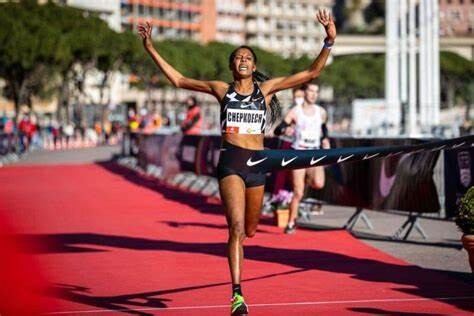
After heartbreaks in Rio and Tokyo, the 33-year-old is laser-focused on clinching the elusive Olympic medal.
“I have missed the podium in my last two Olympic appearances but I am optimistic on my third attempt. I will secure a podium finish,” Chepkoech revealed.

She also highlighted the importance of an Olympic medal to add to her rich trophy cabinet. “It is everybody’s dream to win an Olympic medal. I will be more than happy if I secure a podium in Paris,” she added.
Chepkoech’s impressive resume includes the 2019 world title in Doha, where she set a course record of 8:57.84 while leading Coburn (9:02.35) and Germany’s Gesa Felicitas (9:03.30) to the podium.
She also holds the African title having clocked 9:15.61 in Accra last year with Chemutai (9:16.07) and Ethiopia’s Lomi Muleta (9:26.63) sealing the podium.
Chepkoech is a bronze medallist in the 3,000m at the World Indoor Championships in Glasgow. She finished third in 8:22.68 behind Ethiopia’s Gudaf Tsegay (8:21.13) and USA’s Elle Purrier (8:20.87).
Despite strong competition from World Champion Winfred Yavi and Uganda’s Chemutai at the Paris Olympics, Chepkoech remains unfazed.
“Anything can happen in Paris, I can’t say I fear anyone. I am going to run my race and do my very best,” she stated.
Yavi edged out Chepkoech at the 2023 Championships in Budapest beating her to the title in 8:54.29 with Chepkoech settling for second in 8:58.98 and Faith Cherotich (9:00.69) sealing the podium.
Chemutai beat her to the Prefontaine Classic title on May 25, clocking 8:55.09 with Chepkoech clocking 8:56.51. At the Paris Diamond League earlier this month, Chepkoech finished ninth place in 9:27.21.
Yavi (9:03.68), Alice Finot (9:05.01) and Britain’s Elizabeth Bird (9:09.07) claimed the podium.
Chepkoech has been honing her skills at the Nyayo Stadium, where she has been training three times a week ahead of Paris.
“Training has been intense but rewarding. I do training on Monday, Wednesday and Friday and I have been focusing on my weaknesses to ensure peak form in Paris,” she shared.
In Paris, she will be joined by world U20 champions Jackline Chepkoech (2021) and Faith Cherotich (2022). The duo have been intensifying their training in Eldoret.
Chepkoech highlighted that training alone has been lonely but reiterated her desire to put in more effort.
“The other athletes are training in Eldoret so I am alone. It’s a challenge but I have to do my best to be ready for the Olympics,” Chepkoech stated.
She further highlighted the importance of having her coach along with the assigned coaches from the National Olympics Committee of Kenya.
“Training with my coach has been good because we can strategise on the areas we see weaknesses. It was a good initiative from the federation to have me train with my coach along with the assigned coaches,” she revealed.
(07/26/2024) ⚡AMPby Teddy Muley
Paris 2024 Olympic Games
For this historic event, the City of Light is thinking big! Visitors will be able to watch events at top sporting venues in Paris and the Paris region, as well as at emblematic monuments in the capital visited by several millions of tourists each year. The promise of exceptional moments to experience in an exceptional setting! A great way to...
more...Keely Hodgkinson reveals a serious impact Mary Moraa has made on her road to Paris 2024 Olympics
Keely Hodgkinson discusses lessons from her loss to Mary Moraa as he aims for gold at the Paris Olympics.
Olympic and world 800m silver medallist Keely Hodgkinson is gearing up for the Paris Olympics with a resolute focus on clinching the gold.
At just 22, she has already made significant strides in her athletic career, breaking records and overcoming challenges.
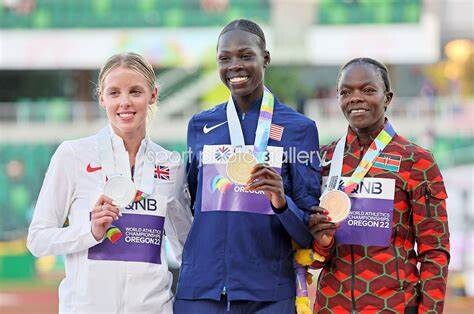
But as she prepares for the upcoming games, Hodgkinson reflects on a particularly tough race that has fueled her drive for victory.
“If you want to watch a bad race, watch Lausanne,” Hodgkinson says in an interview with the Telegraph, recalling the June competition where she found herself boxed in and then out-thought and out-paced by Kenyan Mary Moraa in the 800m.
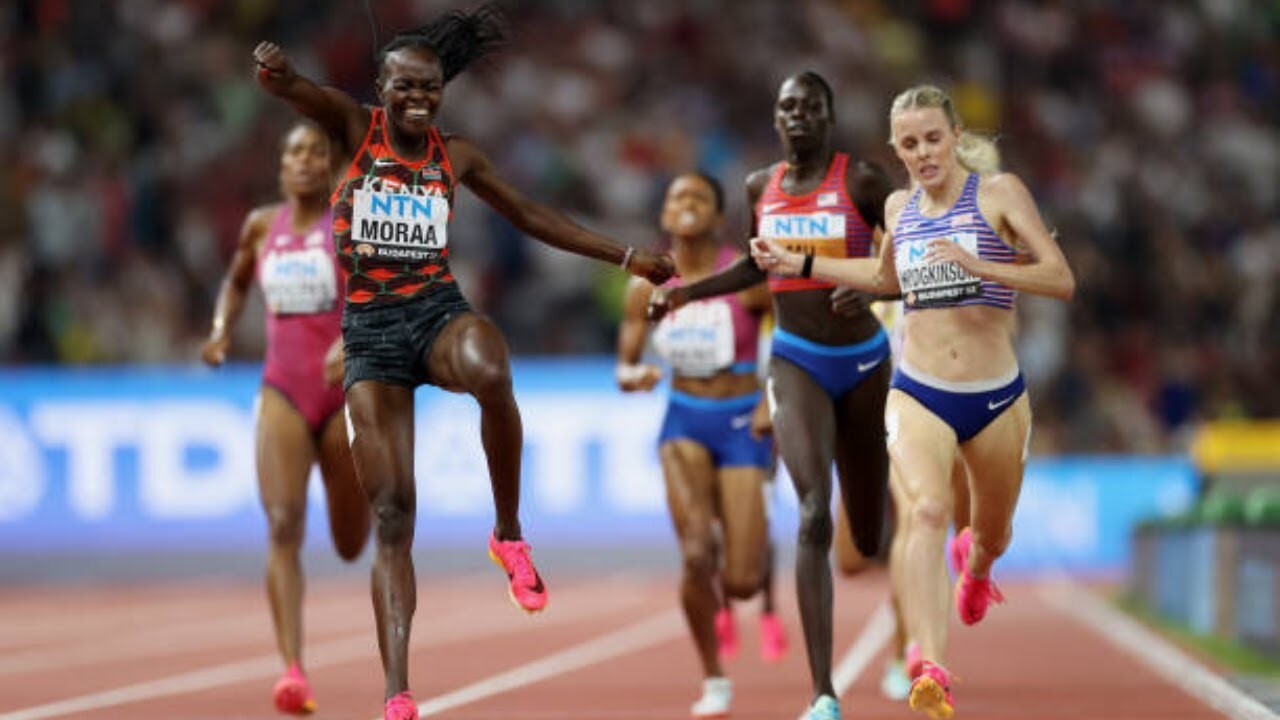
“That was bad.”
Hodgkinson’s journey has been marked by impressive accomplishments, including a silver medal at the Tokyo Olympics at the age of 19 with a personal best of 1:55.88.
More recently, she broke her own 800m record in front of 60,000 fans at the London Stadium leg of the Diamond League, becoming the sixth-fastest woman in history.
Despite these successes, Hodgkinson admits that post-Tokyo, she faced emotional challenges.
Struggling to focus on training after leaving her criminology degree course at Leeds Beckett University, she found it difficult to balance her mental state and athletic ambitions.
“I had nothing to be sad about, yet I felt guilty for feeling down.”
The determination to win gold in Paris is what keeps Hodgkinson motivated.
“Gold is all I have in my head right now. To get the gold in Paris. For me, that was the one I was always aiming for anyway,” she says.
Her rigorous training regime reflects this ambition.
Running approximately 35 miles each week, Hodgkinson focuses on building power and muscle strength, training more like a sprinter. Gym sessions, swimming, and cross-training have been crucial in enhancing her endurance and performance.
“I spend a lot of time on a cross-trainer,” she notes. “If I was to factor that in, my running mileage would go up.”
Preparation for a race, for Hodgkinson, resembles getting ready for a night out.
“The process starts two hours beforehand – I just enjoy it,” she explains.
Her routine includes a shower, fake tan, music, and doing her hair and make-up. “There’s nothing really to do on race day, especially if I’m racing at 10pm.”
Visualizing different race scenarios with her coach Painter is another key aspect of her preparation.
“Let others dictate your race and that’s when silly mistakes happen; panic after getting boxed in and you can bolt too early,” she cautions.
Reflecting on the 2023 World Championships in Budapest, Hodgkinson recalls hitting a lactic wall with 300m to go.
“The pack was so fast through the first lap. It really made us all hurt. We’d never done it that fast before.” On that occasion, it was her main rival, Athing Mu, who set the pace with Hodgkinson finishing as runner-up.
"She wanted to make it hard,” Hodgkinson acknowledges.
Despite the camaraderie with her fellow athletes during training camps, Hodgkinson remains competitive.
“On race day it’s game faces on,” she asserts.
For now, she relishes the challenge of pushing her limits.
“I’d be lying if I said I don’t enjoy being good at it,” she admits.
“When I was younger I used to love seeing how much pain I could put myself in, which sounds a bit crazy, but you do have to be crazy to do this event.”
(07/26/2024) ⚡AMPby Festus Chuma
Paris 2024 Olympic Games
For this historic event, the City of Light is thinking big! Visitors will be able to watch events at top sporting venues in Paris and the Paris region, as well as at emblematic monuments in the capital visited by several millions of tourists each year. The promise of exceptional moments to experience in an exceptional setting! A great way to...
more...Four reasons why you’re not getting faster
Hitting a running plateau can be a natural phase in the training journey, where progress can seem to stall for weeks or even months. But if you’ve been stuck in the same rut for over six months or have cycled through several training plans without noticeable gains, it might be time to re-evaluate your approach and make some changes.
Identifying factors that could stall your progress
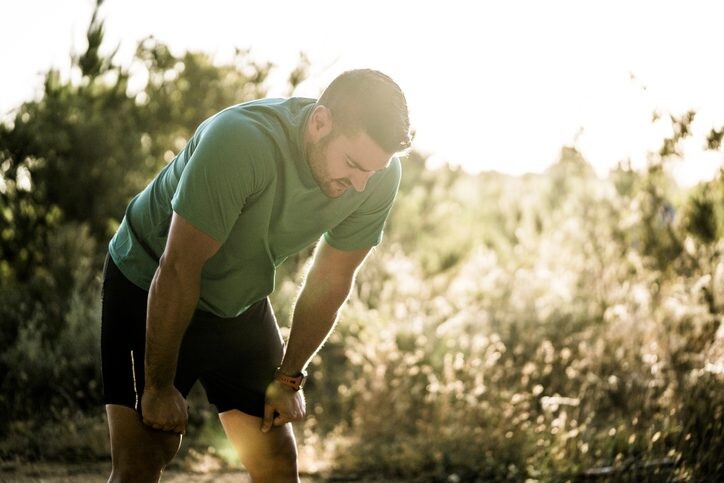
It’s completely normal to hit periods where your performance seems stagnant, only to have a breakthrough and achieve new personal bests. “Your running, and your fitness, has a natural flow of peaks and valleys as you train for races, recover, go through base-building etc.,” says Elisabeth Scott, a Connecticut-based running coach and host of the Running Explained podcast. Embrace these ebbs and flows as part of your running journey.
When assessing whether you’ve hit a plateau, consider other factors that might be holding you back: warm weather, the need to slow down on easy runs while building volume, or external factors like feeling unwell or dealing with unexpected life stress. If none of these apply and you’re still not improving, it might be time to dig deeper and figure out what’s going on.
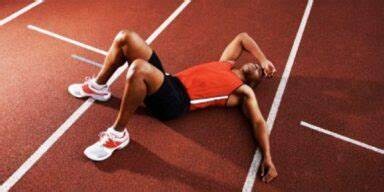
Running everything too hard
Scott says this is the number one training error she sees. We know we should run our easy runs easy, but it can be tempting to pick up the pace in practise. “Your easy runs should be very easy, probably much slower than you’ve been running them,” Scott adds. The key is to keep the effort level low and your heart rate down on those easy runs.
Not doing hard running, at all
“If you’ve plateaued and haven’t been doing any hard running in your training, it might be time to start,” says Scott. Many runners fall into the trap of running at a medium-hard effort—a pace that’s a bit faster than an easy run—without incorporating any truly intense workouts. “Most runners should include at least some hard running in almost every phase of training, from simple strides and hard uphills, to more structured speedwork, depending on the context of your training and your goals,” Scott explains. Shake up your routine with some high-intensity sessions to bust through that plateau and reach new heights.
Not running enough (volume and/or frequency), or repeating the same thing each cycle
Your training needs to get more challenging over time and should evolve with different workouts targeting various training zones.
Scott explains that many lower-volume runners, who only train a few times a week, can boost their performance simply by running more—though it’s crucial to increase volume safely. “Additionally, our training needs to change and progress over time to continue increasing our fitness,” she says. Keep your workouts dynamic and progressively more challenging to ensure continual improvement and peak performance.
Over-training or under-recovering
Scott points out several common culprits that can stall your progress: calorie deficits, lack of sleep, running too hard, overtraining with excessive fitness challenges, and extreme life stress from work, family or emotional issues. “These things all “count” as stress in your body’s way of understanding things,” she says.
To overcome a running plateau, it’s crucial to address these areas. Make sure you’re fueling your body adequately, getting enough rest and balancing your training intensity. Manage life stressors effectively and ensure your fitness routine is sustainable. By taking a holistic approach, you’ll be better equipped to break through barriers and reach your running goals.
(07/26/2024) ⚡AMPby Keeley Milne
Eliud Kipchoge names two things that stand in his way to making history at Paris Olympics
Eliud Kipchoge has revealed two things that will pose challenges as he looks to win his third Olympic title at the Paris Olympic Games.
Defending champion Eliud Kipchoge has cited two things that will be a challenge as he looks to make history by winning his third successive marathon title.

The five-time Berlin Marathon champion noted that he has already observed the course, admitting that the race will not be an easy task. He noted that it is not a flat course, making the race a challenge for all the athletes.
Kipchoge added that the weather in Paris is usually hot in August, making it the second challenge in his quest for top honours. Kipchoge will also be making his fifth appearance at the Olympics.
“I’ve gone through the course and it’s very challenging…it’s very hot in Paris in August and second, the course is up and down and that is a huge challenge to everybody. Nevertheless, I don’t want to complain because all of us will be running on the same terrain and the same weather,” Kipchoge told CGTN Sport.
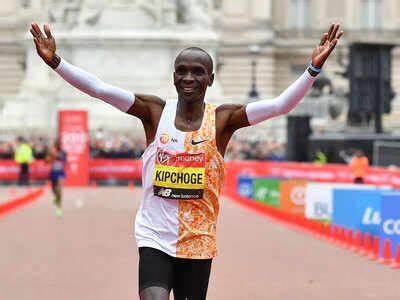
The four-time London Marathon champion is also aware of the tough competition that awaits him on the global stage. He knows that everyone has prepared well for the race and it will be all about the one who executes the race well.
He also has sweet memories of Paris, since it was the first place where he competed on the global stage, competing at the 2003 World Championships where he won a gold medal in the 5000m. He will also be eyeing history, being the first Kenyan to make five appearances at the Olympic Games.
“All of us will be fighting and I always say that the best trained and the best prepared will carry the day. I’m excited to see how competitive the events will be from the short distance events, to the long distance, to swimming,” the two-time Olympic champion said.
“The year 2003 was the beginning of my life in sport and I can say I’m happy to go back there and compete and show the world where my life began and show the longevity and love for sport,” he added.
(07/26/2024) ⚡AMPby Abigael Wafula
Paris 2024 Olympic Games
For this historic event, the City of Light is thinking big! Visitors will be able to watch events at top sporting venues in Paris and the Paris region, as well as at emblematic monuments in the capital visited by several millions of tourists each year. The promise of exceptional moments to experience in an exceptional setting! A great way to...
more...Paris 2024: Favorites and best value picks on the track
We are just four days away from the opening ceremony of the 2024 Paris Olympics and a little over a week from the start of the athletics events at the Stade de France. If you’re looking to place your bets for gold or want to know the favorites for each event (according to Vegas sportsbooks), we’ve got you covered with insights and odds to help you get the best value out of your picks.
Men’s 100m
Favorite: Kishane Thompson (JAM) -105 [world leader]
Best value: Oblique Seville (JAM) +900
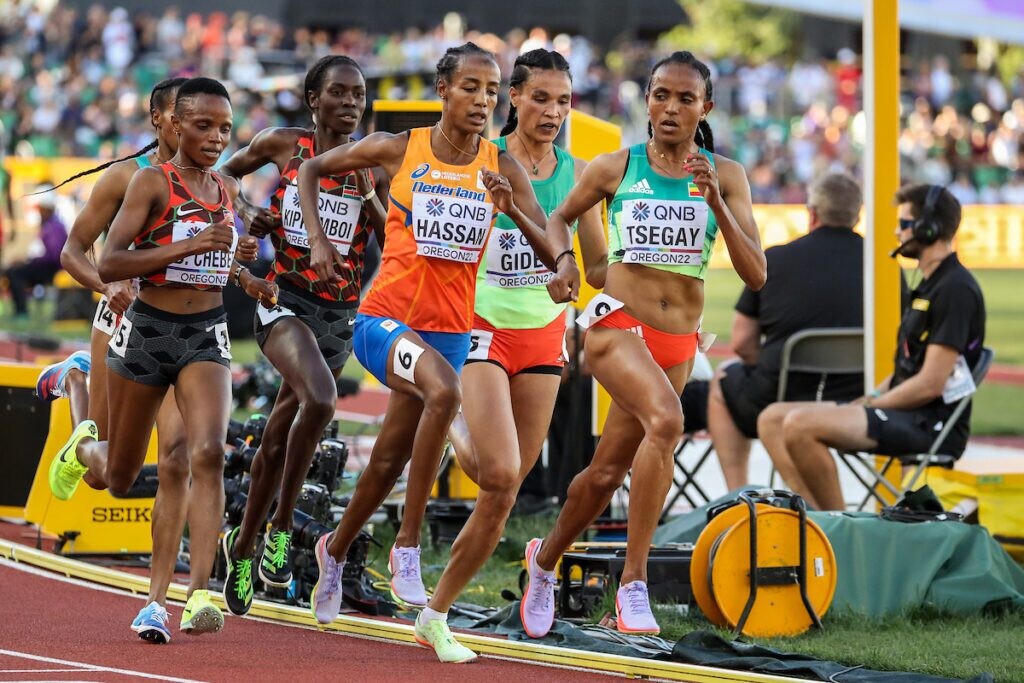
Men’s 200m
Favorite: Noah Lyles (USA) -290 [3x world champion]
Best value: Erriyon Knighton (USA) +1000 [2x world championship medallist]

Men’s 400m
Favorite: Matthew Hudson-Smith (GBR) +120 [world silver medalist]
Best value: Steven Gardiner (BAH) +350 [reigning Olympic champion]
Men’s 800m
Favorite: Djamel Sedjati (ALG) -250 [world leader]
Best value: Marco Arop (CAN) +1500 [reigning world champion]
Men’s 1,500m
Favorite: Jakob Ingebrigtsen (NOR) -225 [reigning Olympic champion]
Best value: Josh Kerr (GBR) +175 [reigning world champion]
Men’s 5,000m
Favorite: Jakob Ingebrigtsen (NOR) -290 [reigning world champion]
Best value: George Mills (GBR) +4000
Men’s 10,000m
Favorite: Joshua Cheptegei (UGA) +120 [world record holder]
Best value: Berihu Aregawi (ETH) +600
Men’s 110m hurdles
Favorite: Grant Holloway (USA) -500 [world leader and world champion]
Best value: Hansle Parchment (JAM) +1000 [reigning Olympic champion]
Men’s 400m hurdles
Favorite: Rai Benjamin (USA) +100 [world leader]
Best value: Alison Dos Santos (BRA) +300 [2022 world champion]
Men’s 3,000m steeplechase
Favorite: Lamecha Girma (ETH) -120
Best value: Soufiane El Bakkali (MAR) +190
Men’s marathon
Favorite: Eliud Kipchoge (KEN) -190 [reigning Olympic champion]
Best value: Benson Kipruto (KEN) +900 [2024 Tokyo Marathon champion]
Women’s 100m
Favorite: Sha’Carri Richardson (USA) -225 [reigning world champion]
Best value: Julien Alfred (LCA) +700
Women’s 200m
Favorite: Gabby Thomas (USA) +105 [2020 Olympic bronze medalist]
Best value: Shericka Jackson (JAM) +180 [reigning world champion
Women’s 400m
Favorite: Marileidy Paulino (DOM) -135 [2020 Olympic silver medalist]
Best value: Rhasidat Adeleke (IRL) +700
Women’s 800m
Favorite: Keely Hodgkinson (GBR) -290 [Olympic silver medallist]
Best value: Nia Atkins (USA) +1500
Women’s 1,500m
Favorite: Faith Kipyegon (KEN) -285 [world record holder]
Best value: Jessica Hull (AUS) +1000
Women’s 5,000m
Favorite: Faith Kipyegon (KEN) -285 [world champion]
Best value: Beatrice Chebet (KEN) +750 [world XC champion]
Women’s 10,000m
Favorite: Sifan Hassan (NED) +120 [reigning Olympic champion]
Best value: Gudaf Tsegay (ETH) +250 [reigning world champion]
Women’s 100m hurdles
Favorite: Cyrena Samba-Mayela (FRA) +250 [European champion]
Best value: Tobi Amusan (NGR) +1500 [world record holder]
Women’s 400m hurdles
Favorite: Sydney McLaughlin-Levrone (USA) -700 [world record holder and reigning Olympic champion]
Best value: Femke Bol (NED) +300 [reigning world champion]
Women’s 3,000m steeplechase
Favorite: Beatrice Chepkoech (KEN) n/a [world record holder]
Best value: Sembo Almayew (ETH) n/a
Women’s marathon
Favorite: Tigst Assefa (ETH) +250 [world record holder]
Best value: Hellen Obiri (KEN) +400 [2023 & 2024 Boston Marathon champion]
(07/25/2024) ⚡AMPby Marley Dickinson
Paris 2024 Olympic Games
For this historic event, the City of Light is thinking big! Visitors will be able to watch events at top sporting venues in Paris and the Paris region, as well as at emblematic monuments in the capital visited by several millions of tourists each year. The promise of exceptional moments to experience in an exceptional setting! A great way to...
more...Why Timothy Cheruiyot owes his successful career to his father
Timothy Cheruiyot has given a candid explanation of why he owes his successful career to his father.
Former world champion Timothy Cheruiyot has credited his father for encouraging him to take up athletics as a career after his secondary school education.
Cheruiyot is the first born in his family and he noted that after high school, he stayed home to help his father in farming. Life then got a little bit difficult for him and he ventured into blue collar jobs to make a living.

However, his father was not happy with the way his life was turning out and advised him to look for a training camp and he would support him. This was after his impressive runs in primary school and high school.
“When I finished form four I went home to help my father in farming…Life was difficult in 2012 and 2013 and at some point, I even worked at construction sites. In 2014, my father encouraged me to go and look for a camp and he would help me,” Cheruiyot said in an interview on the Safari za Mabingwa show.
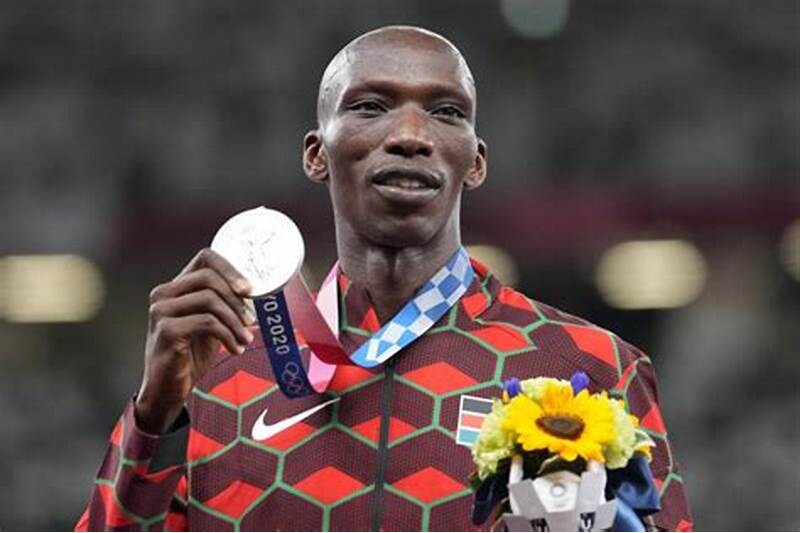
“I heeded to his advice and in January 2014, I went for a camp closer to home and my friends helped me and I was there for three months. I then joined another camp and after one month, the owner paid for me to go to Nairobi,” he added.
After finding an athletics camp in Bomet, Cheruiyot trained for about three weeks before relocating to another camp where doors opened for him.
The manager of the camp at the time catered for his needs and paid for a trip for him to Nairobi to compete at the World Junior Championships trials but finished third and missed out on a slot to the global showpiece but his talent was recognised and that’s how he got a contract with the Kenya Prisons Service. Cheruiyot also met his longtime coach, Bernard Ouma through his effort in 2014.
The Olympic Games 1500m silver medallist noted that his parents would send him money to cater for his needs when he was at the camp.
They would sacrifice by selling poultry and trees just to make sure their son was comfortable. Being a first born, Cheruiyot is the only one in his family who runs.
“My parents always supported me because there were times I would call them when I didn’t have food and they would send me money…sometimes they would sell chicken or trees at home just to cater for me. I’m the first born and my siblings don’t compete but they are going to school,” Cheruiyot said.
“Athletics gave me a chance to compete in the Kenyan team after the World Relays in the Bahamas. I started running when I was in primary then proceeded to secondary school but I was not very serious,” he added.
(07/25/2024) ⚡AMPby Abigael Wafula
Why Ethiopian marathon star wants to clinch Chicago Marathon victory in honor of Kelvin Kiptum
The reigning Tokyo Marathon holder has explained why she will be doing everything to win in Chicago to honor the fallen former marathon star Kelvin Kiptum.
This year’s fastest women’s marathoner, Sutume Kebede of Ethiopia, has revealed her real motivation ahead of the 46th Bank of America Chicago Marathon.
Kebede's remarkable 2:15:55 victory in the 2024 Tokyo Marathon makes her the eighth fastest woman of all time.
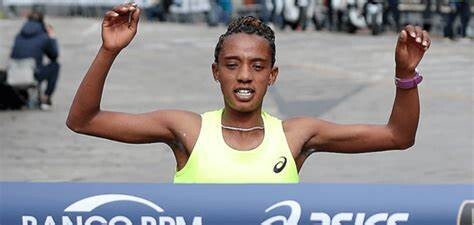
This achievement came just two months after she set the record for the fastest half marathon ever completed in the United States at the Aramco Houston Half Marathon in January, with a winning time of 1:04:37.
Kebede is part of a training group that once included the late Kelvin Kiptum, who was tragically killed in a car crash this past February, just four months after setting the marathon world record at the 2023 Bank of America Chicago Marathon.

Returning to Chicago with a strong motivation to win, Kebede expressed her excitement: “I am extremely happy to come back to Chicago and run on a course that has proven to be very fast.”
Kedebe has revealed her real motivation to make amends from last year’s shortcomings.
“After seeing what my teammate Kelvin Kiptum did last year, I want to come to Chicago to do something great.” Kebede had a disappointing finish in the 2023 Bank of America Chicago Marathon, but she is determined to make a significant impact this year.
Kebede will face fierce competition, including the fourth fastest woman in history, Ruth Chepngetich of Kenya.
Chepngetich, the 2021 and 2022 Chicago champion, was runner-up last year and is eager to reclaim her title. Another top contender is fellow Kenyan Joyciline Jepkosgei, a TCS London and TCS New York City Marathon Champion who placed fourth in the 2023 Chicago Marathon.
Joining these East African stars are the second and third fastest American women of all time. Former American marathon record holder Keira D’Amato, who has been part of the broadcast team for the past two years, will return to the start line this year.
D’Amato, who finished fourth in Chicago in 2021, is eager to compete again. Betsy Saina, who placed fifth in this year’s Tokyo Marathon, will also compete, aiming for her first Chicago finish after dropping out in 2019 due to illness.
The 46th Bank of America Chicago Marathon promises to be an exciting race, with some of the fastest women in the world vying for the coveted title.
(07/25/2024) ⚡AMPby Mark Kinyanjui
Bank of America Chicago
Running the Bank of America Chicago Marathon is the pinnacle of achievement for elite athletes and everyday runners alike. On race day, runners from all 50 states and more than 100 countries will set out to accomplish a personal dream by reaching the finish line in Grant Park. The Bank of America Chicago Marathon is known for its flat and...
more...Andre De Grasse named Team Canada flag bearer for Paris 2024
Canada’s most decorated male Olympian, Andre De Grasse, has been chosen by the Canadian Olympic Committee (COC) to carry the flag for Team Canada at the Paris 2024 opening ceremonies on July 26. On Wednesday, the COC announced that De Grasse will carry the flag alongside women’s weightlifter Maude Charron. Both are defending Olympic champions in their respective events.
De Grasse has never carried the Canadian flag at an opening or closing ceremony, and Paris marks the third time he will represent Canada at the Olympic Games. He will again be a medal contender in the men’s 100m, 200m and 4x100m relay. Despite this being his third Olympics, this will be his first time attending the opening ceremony.
When asked if he would do Team Canada the honor of serving as flag bearer, De Grasse’s response was: “That would be a dream come true for me. I never thought that opportunity would ever come, you know, because of course being in track and field, we never get a chance to really go to the opening ceremony. So I mean, I’m excited just to even go and now to be the flag bearer for the country! I’m speechless–I’m trying to get the words out.”
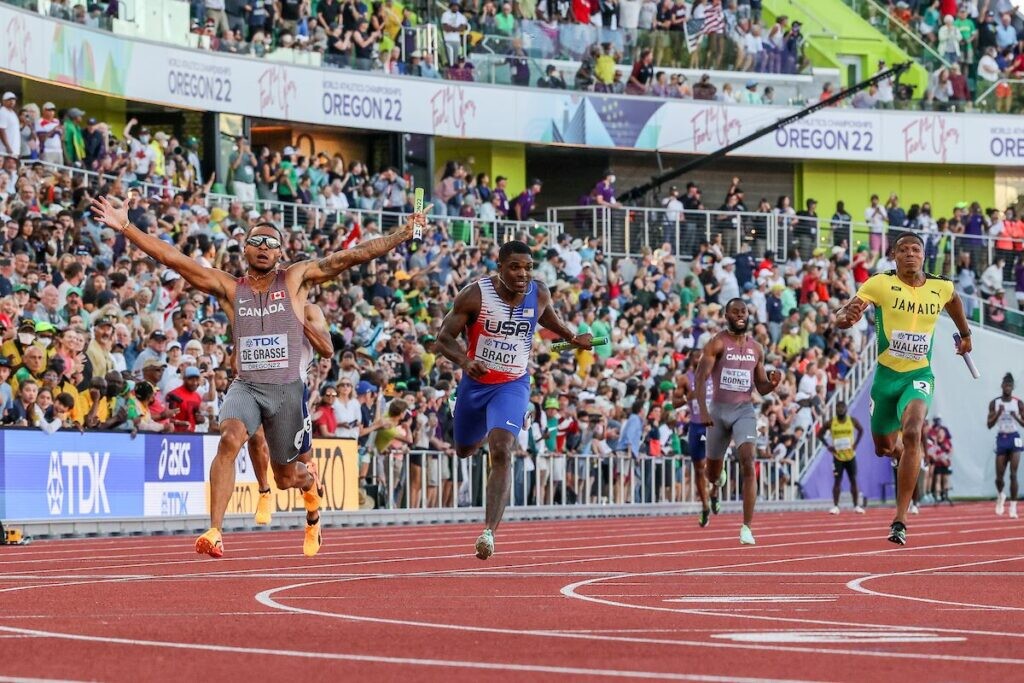
The Markham, Ont., native has won six medals at the last two Olympic Games (one gold, two silver, and three bronze). He is the only sprinter in the world to win an individual medal in the men’s 100m at the last two Olympic Games. His 200m gold medal finish at Tokyo 2020 was the first Canadian Olympic gold on the track in 25 years and the first in the 200m in 93 years.
The 29-year-old has been a consistent podium finisher at major championships, winning a medal in every Olympic and World Championship final he competed in from 2015 until the 2023 World Championships. He finished sixth in the men’s 200m world championship final in Budapest.

De Grasse has returned to top form this season, winning his first national 100m title since 2017 at the 2024 Canadian Olympic Trials in Montreal in late June. Two weeks later, he ran his fastest 200m time of the year at the Gyulai István Memorial Continental Tour meet in Hungary, clocking his first sub-20-second time since the Diamond League final in September 2023.
He will begin his Paris 2024 campaign in the men’s 100m heats on Saturday, Aug. 3, with the men’s 200m and 4x100m events coming later in the week.
(07/25/2024) ⚡AMPby Marley Dickinson
Paris 2024 Olympic Games
For this historic event, the City of Light is thinking big! Visitors will be able to watch events at top sporting venues in Paris and the Paris region, as well as at emblematic monuments in the capital visited by several millions of tourists each year. The promise of exceptional moments to experience in an exceptional setting! A great way to...
more...Here’s a new way to keep warm-weather GI distress at bay
You may be able to toss your antacids and emergency Imodium stash—scientists are excited about a new study highlighting the gut-protecting powers of blackcurrant extract, and it could be the latest go-to remedy for the summer GI distress some runners experience. Relief for the dreaded condition, sometimes dubbed “runner’s trots,” might now be as simple as popping a berry supplement, as reported by British media outlet Wales Online.
Berry good news
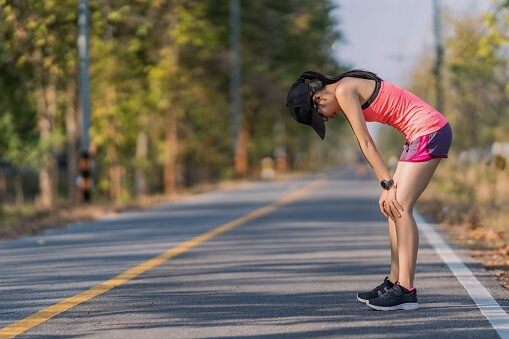
Researchers found that more than two-thirds of recreational runners, unaccustomed to running in hot weather, experienced reduced symptoms after taking blackcurrant extract. Mark Willems, a professor in exercise physiology at the University of Chichester who has published more than 40 New Zealand blackcurrant extract studies, noted the study’s significance: “It is impressive that the 92 per cent of participants who displayed total GI symptoms were reduced to 25 per cent with blackcurrant. This is really meaningful.”
What exactly are runner’s trots?

For the uninitiated, runner’s trots refers to the gastrointestinal distress runners face in high temperatures, leading to nausea, diarrhea and other uncomfortable symptoms. Exercising in the heat redirects blood flow away from the digestive system to help keep your body cool, which can create havoc in your gastrointestinal tract. Current prevention methods, such as complex heat acclimation training, are often impractical for casual runners.
The research
For this study, runners took 600 mg of blackcurrant extract (the brand CurraNZ was used in this study) daily for seven days before hitting the treadmill in sweltering 34 C conditions. The polyphenol-rich blackcurrant supplement was shown to reduce heat-induced cell damage and “leaky gut” by up to 40 per cent. Not only did the extract alleviate gut distress, but it also proved safe, with no adverse effects, on core temperature or thermoregulation.
Matthew Kuennen, an associate professor at High Point University, N.C., praised its efficacy: “I am impressed with blackcurrant’s ability to reduce markers of gut leak and gastrointestinal barrier function during prolonged endurance exercise under hot/dry conditions,” he said. Kuennen recommends blackcurrant supplementation as a potentially meaningful alternative when heat training is not an option.
The takeaway
Blackcurrant extract may be a game-changer for runners battling heat-induced GI issues. With its ability to provide quick relief and enhance performance, it may be worth considering adding this supplement to your pre-race routine. Stephanie Flippin, a pro ultrarunner, coach and physician who works with athletes and uses blackcurrant extract in her own training, says she is excited about the findings: “There isn’t a runner who hasn’t experienced GI distress,” she explains. “With current strategies limited to heat training itself, any mitigation and protective measure is highly beneficial, and New Zealand blackcurrant extract offers an exciting new supplement for runners.”
“The take-away message is that if you are customarily experiencing mild GI symptoms from running in the heat, they are likely to be resolved by supplementing with New Zealand blackcurrant extract,” Willems said.
(07/25/2024) ⚡AMPby Keeley Milne
Four single-leg exercises all runners should try
Single-leg exercises will help you become a faster runner, while keeping injuries away.
Looking to spice up your strength-training routine, or hoping to become an injury-free speedster in just a few extra minutes a week? Cue single-leg strength training! We’ve got the perfect exercises to kickstart your single-leg journey to running stardom.
Focusing on one leg at a time, these exercises boost balance, stability and muscular coordination—crucial for efficient running mechanics. By mimicking the natural gait cycle, these exercises build strength in the exact movement patterns used during runs. Adding single-leg strength training to your routine can lead to more powerful strides, better endurance and fewer overuse injuries, making it a game-changer for runners of all levels.
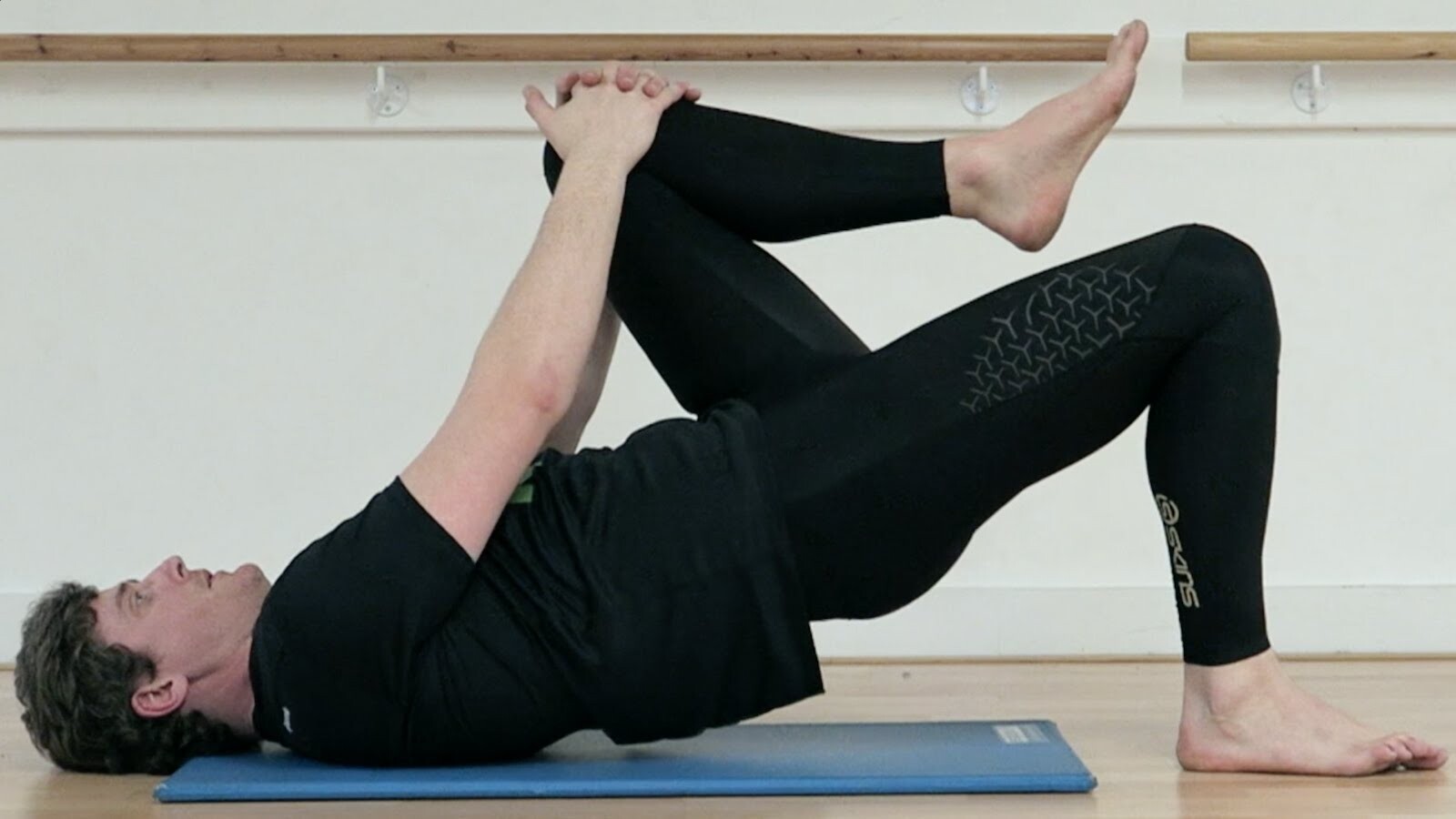
1.-Step-up
What it does: Step-ups target the quads, glutes and calves, building strength and power in the legs. They mimic the climbing motion in trail running, improving uphill running performance.

Stand several inches in front of an elevated platform. Place your right foot on the platform, ensuring your whole foot is on it.
Push through the heel of the elevated foot to lift your body onto the platform. Step down with the left foot, returning to the starting position.
2.- Single-leg glute bridge
What it does: Activates and strengthens glutes and core.
Lie on your back with your knees bent and feet flat on the floor. Lift your right leg, extending it straight out.
Press through your left heel to lift your hips toward the ceiling.
Lower your hips back down, and repeat on the left leg (alternatively, do 10 repeats with the right leg before switching to the left leg; repeat 3 sets).
3.- Hip hike
What it does: Strengthens the muscles around the hips and pelvis, helping to prevent injuries such as iliotibial (IT) band syndrome, runner’s knee and hip pain, which often result from weak or imbalanced hip muscles.
Stand on your right foot, keeping your pelvis in a neutral position.
Drop your left hip so it is several inches below the right side of your pelvic bone. Activate your right hip muscle to lift your left side back to a neutral position. Try imagining that your pelvis is a bowl and you’re tilting one side of the bowl down.
Aim for 20-30 repetitions per leg.
4.- Single-leg deadlifts
What it does: Single-leg deadlifts strengthen the hamstrings, glutes and lower back muscles. They improve balance and proprioception, essential for maintaining stability on uneven terrain.
Stand on one leg with a slight bend in the knee. Hinge at the hips, lowering your torso while extending the other leg behind you.
Keep your back straight and core engaged throughout the movement.
Return to the starting position by engaging your glutes and hamstrings.
Repeat 10 times, then switch legs.
For any of these exercises, moving with control and good form is more important than the number of reps you perform. Do fewer repeats if these exercises are particularly challenging or new to you; add sets once you build strength.
(07/24/2024) ⚡AMPby Keeley Milne
Transgender athletes will have more restrictions in Paris
Transgender women must have transitioned before the age of 12 to be eligible for the women’s category, to “prevent any potential biological advantage from male puberty”.
Transgender athletes will face more restrictions at the Paris Olympics compared to previous events. This is due to the recent regulation by numerous international federations that female athletes must have completed their transition before the age of 12 to avoid unfair advantages.
With this decision, the Paris 2024 Olympics has stricter rules and regulations regarding transgender athletes with differences of sexual development (DSD).

There have also been increased regulations for transgender athletes ahead of the Olympics, with many who have previously competed in international events, now unable to do so.
The Olympics in the French capital is set to make history as the first gender-equal games, with 50 per cent of the medals going to women, a first in the history of the event. There has been a rising interest in transgender athletes, with concerns that transgender women have an unfair advantage over fellow competitors, and a number of federations have strict guidelines.
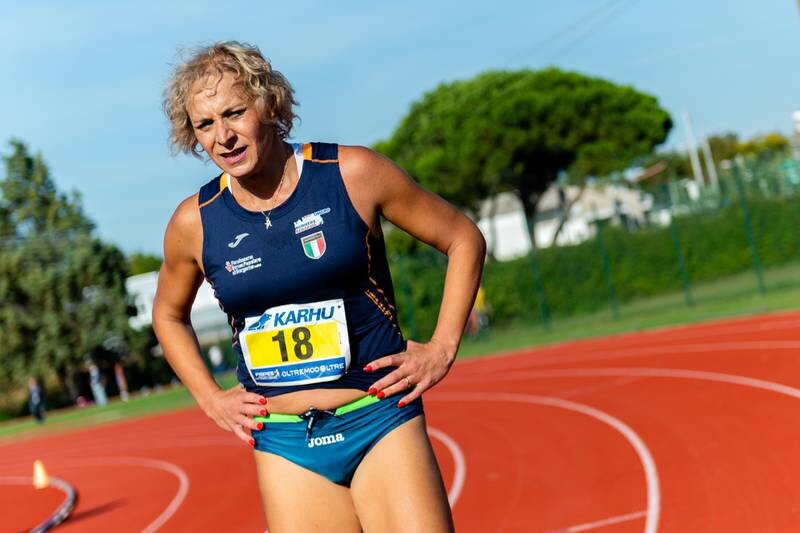
The International Olympic Committee, which oversees the Games, does not have specific rules or regulations and instead includes 10 guiding principles. The governing body also states that “each international federation is responsible for setting eligibility rules for its sport, including the eligibility criteria that determine qualification for the Olympic Games”.
The guidelines require transgender women to have transitioned before the age of 12 to be eligible for the women’s category, to prevent any potential biological advantage from male puberty.
The sports affected by this rules
The guidelines from the IOC have been adopted by World Athletics and Fina, swimming’s governing body.Cycling follow these guidelines for women’s categories but also allow for an “open” category which has replaced the current “men’s category” to allow transgender athletes to compete.
World Rowing allows those who transitioned before puberty to be eligible, and one of their criteria is for the testosterone concentration to be less than 2.5 nmol/L for a period of at least 24 months, while rugby has followed the IOC guidelines. Triathlon, tennis and archery however require testosterone levels to be below a certain limit to allow athletes to compete. Other sports allow transgender athletes to compete on a “case by case” basis.
Transgender and non-binary athletes at the Paris Olympics
Laurel Hubbard competed in the Tokyo Olympics, becoming the first openly transgender athlete to do so, and finished last in her competition group, and also Will be there in this edition. Nikki Hiltz is transgender and non-binary and uses the pronouns “they/them”, but has always competed in the female category, and will be representing USA at the upcoming Olympics. They set a US trials record in the 1500m to earn a place on the Olympic squad.
Quinn, a Canadian non-binary footballer, has also been chosen to represent their nation at the Olympic Games. The midfielder, who plays for Toronto, has always competed in female categories.
But there are other athletes that got out of the Games because of the new rules like the american BMX rider Chelsea Wolfe, who had been hoping to compete in Paris before the UCI, cycling’s governing body, changed its regulations and put an end to her hopes. She had qualified for Tokyo 2020 as an alternate.
Halba Diouf’s dream was also ended by World Athletics’ new regulations, effectively barring the Senegalese-born French sprinter from competing in Paris. Swimmer Lia Thomas became the first transgender athlete to win a US college title in 2022, but lost a legal case against World Aquatics for her right to compete. The American remains barred from competing in the female category.
(07/24/2024) ⚡AMPby Marley Dickinson
Paris 2024 Olympic Games
For this historic event, the City of Light is thinking big! Visitors will be able to watch events at top sporting venues in Paris and the Paris region, as well as at emblematic monuments in the capital visited by several millions of tourists each year. The promise of exceptional moments to experience in an exceptional setting! A great way to...
more...American sprint legend reveals Olympic heartbreak from 1992 Barcelona food poisoning
Michael Johnson recalls a disappointing setback due to food poisoning during the 1992 Olympics, affecting his performance in the 200-meters
Before Usain Bolt rose to prominence, the world of track and field was dominated by Michael Johnson, a sprinter who dazzled the athletics scene with his speed and charisma.
Johnson, who captured four Olympic gold medals across three different Games, recently spoke about what he considers the most disappointing moment in his illustrious career.
The incident in question traces back to the 1992 Barcelona Olympics, a time when Johnson was at the pinnacle of his form.
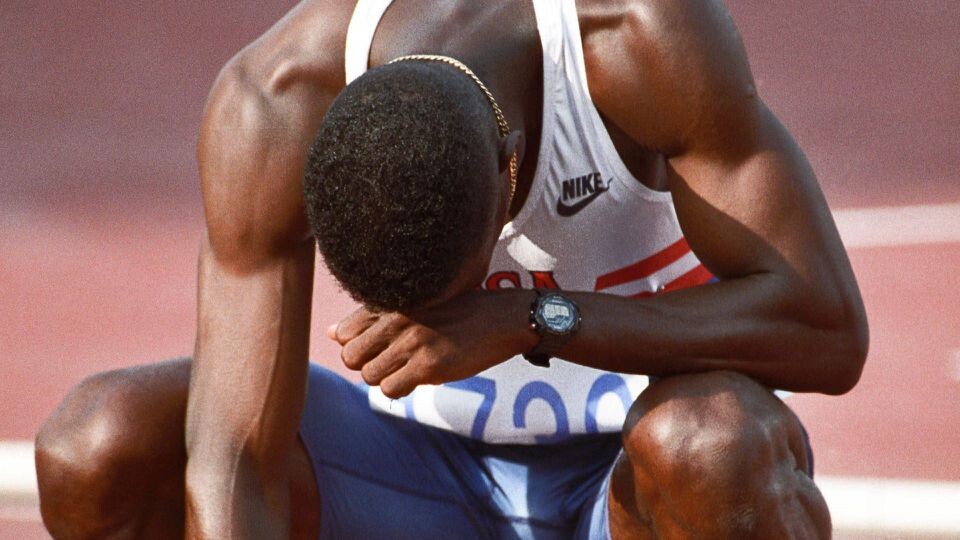
Fresh off a gold medal win at the 1991 World Championship in Tokyo, Johnson was the favorite to clinch the 200-meter race at the upcoming Olympics.
However, an unforeseen bout of food poisoning just days before his first race jeopardized his chances.
“I had gotten food poisoning. So I was world champion, ranked number one in the world for two years, undefeated, and you know, a huge favorite to win the 200 meters at the Olympics,” Johnson recalled on High Performance podcast.

His condition arose shortly after a near world-record performance at the Olympic trials, where he had felt in the best shape of his life.
“It was about or so before I was competing," Johnson explained.
During this period, athletes typically reduce the intensity of their training to fine-tune their performance, a phase known as tapering.
"You’re in a taper mode where you’re basically just working on starts and very technical things,” he added.
When the Olympic races began, Johnson thought he had recovered, feeling fine at the starting blocks.
However, the reality of his condition became apparent as soon as the race started.
“Usually in a first round, I can just sort of run the first 100 meters of that 200 meters and I'm just kind of out," he said.
But this time, he found himself struggling unexpectedly, feeling as if he were "running in someone else’s body."
Despite winning his initial heat, the effort took a severe toll on him.
“I’m extremely weak and it takes everything. I win that race but just barely, and it took everything in me, and I knew immediately something's wrong,” he said.
His performance deteriorated further in the subsequent rounds and he ultimately failed to make the final.
Reflecting on the ordeal, Johnson described the experience as both disappointing and embarrassing.
“I knew of athletes who were world record holders, world champions that had the butt. That’s the one thing missing at that point," he lamented.
The Olympic gold in the 200-meters, which many had anticipated would be a mere formality for Johnson, remained elusive.
Johnson's resilience, however, is as legendary as his speed as he returned to win golds in later Olympics, including a memorable double victory in the 200 and 400 meters at the 1996 Atlanta Games.
Yet, the sting of Barcelona remains a significant chapter in his career.
Looking back, Johnson appreciates the rarity of Olympic opportunities.
“One thing you know as an Olympic athlete, because the Olympics is every four years, not every year, you may never get back there. Most people make it to one Olympics. I was fortunate to go to three, but that’s rare,” he reflected.
Through his trials and triumphs Johnson's legacy as a sprinter continues to inspire athletes around the world.
His story is a poignant reminder of how even the greatest champions can face hurdles that test their spirit and resolve.
(07/24/2024) ⚡AMPby Festus Chuma







